reptiles lab
1/103
There's no tags or description
Looks like no tags are added yet.
Name | Mastery | Learn | Test | Matching | Spaced |
|---|
No study sessions yet.
104 Terms

Caretta caretta
Loggerhead sea turtle
a common marine turtle known for its large size

Chelonia myads
Green sea turtle
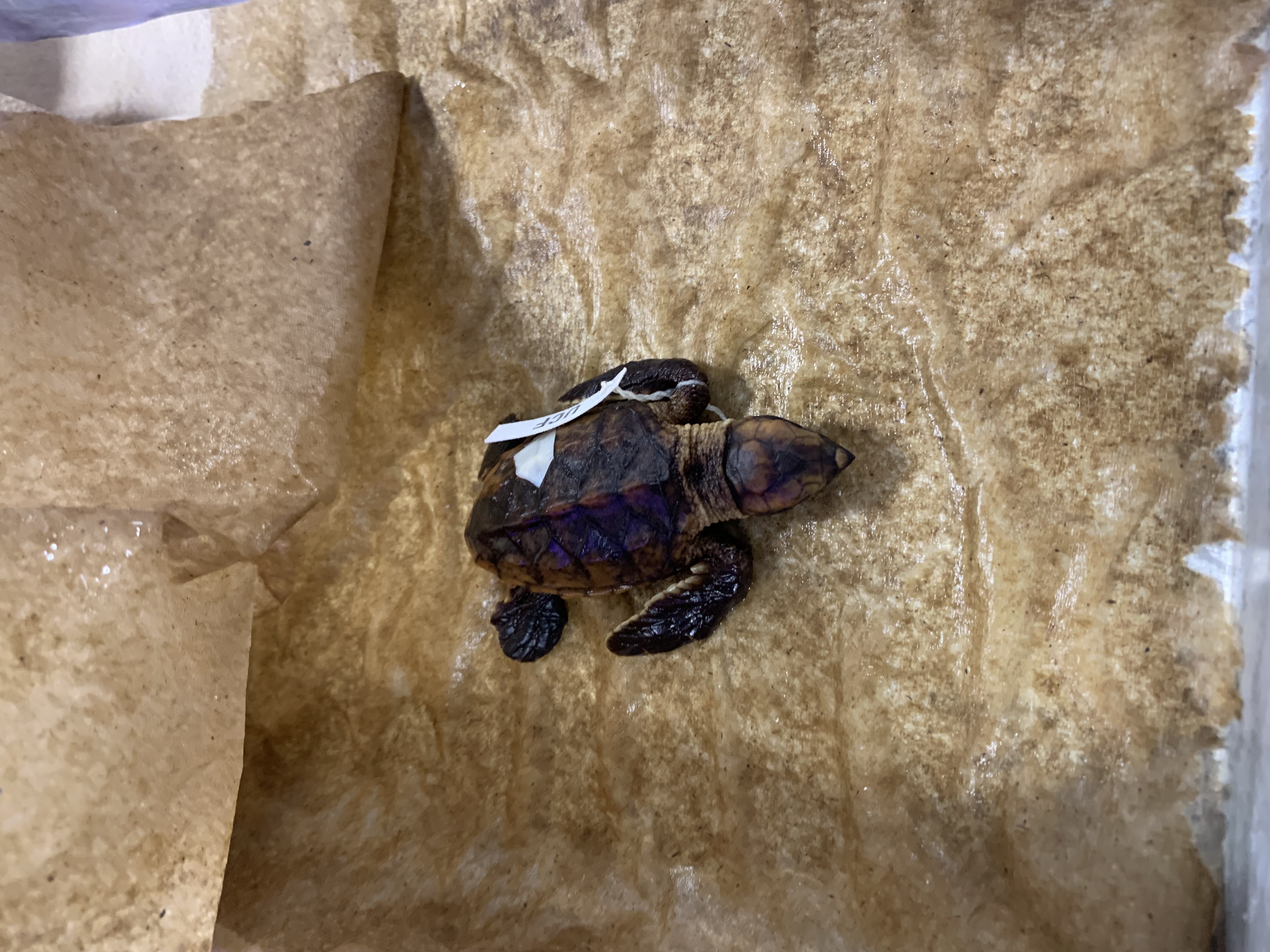
Eretmochelys imbricata
Atlantic hawksbill sea turtle
pointed beak
darker than green sea turtle (Chelonia myads)
Lepidochelys kempii
Kemp’s Ridley sea turtle

Chelydra serpentina
Snapping turtle
snakes are SERPENTS who SNAP
known for its strong jaws and aggressive behavior
Macrochelys temminckii
Alligator snapping turtle

Dermochelys coriacea
Leatherback sea turtle
the largest turtle species, known for its leathery shell
Chrysemys dorsalis
Southern painted turtle
NON NATIVE
often recognized by its colorful markings
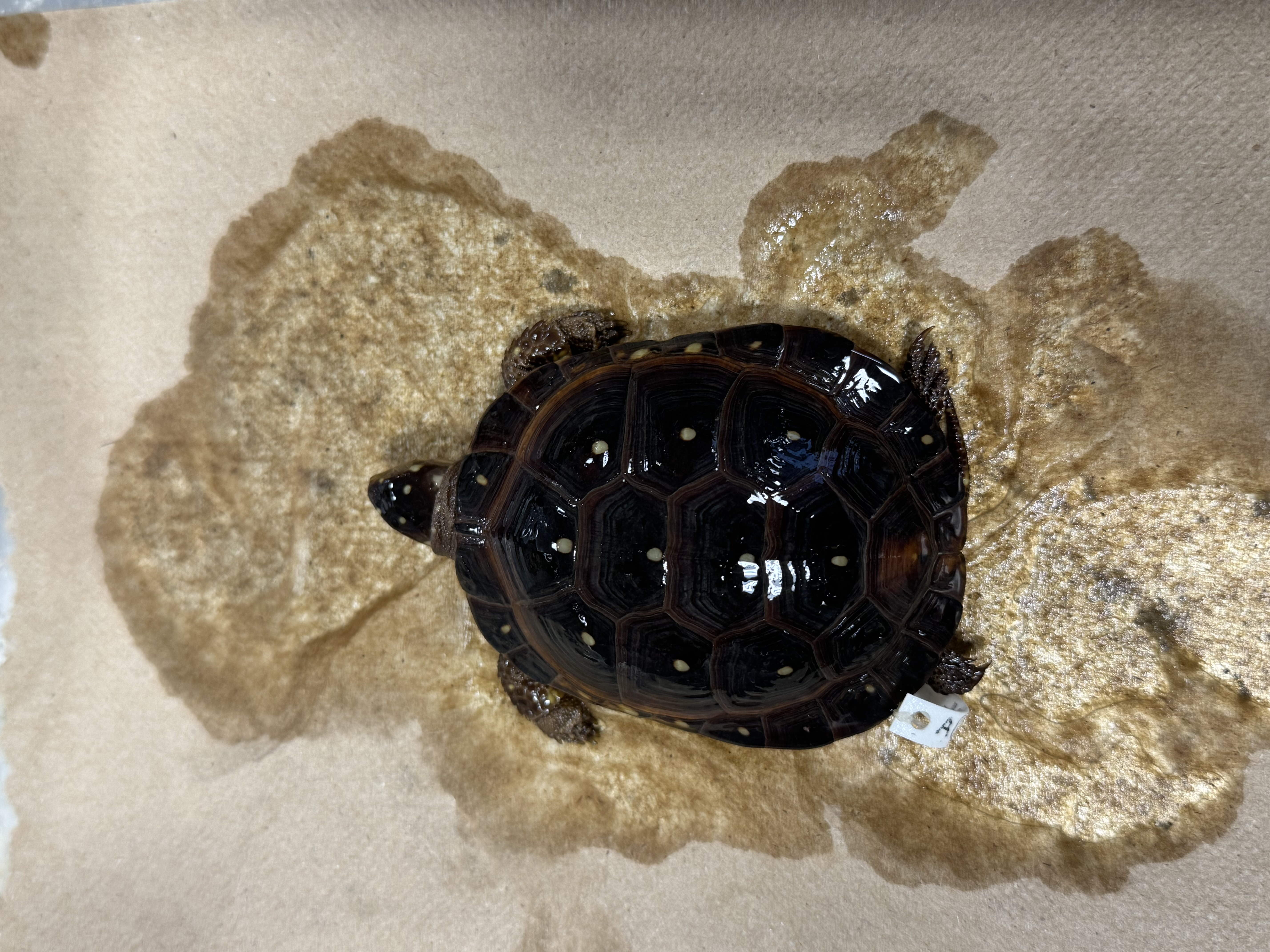
Clemmys guttata
Spotted turtle
he is GLUTTANOUS and wants more SPOTS
known for its distinctive yellow spots on a dark shell.
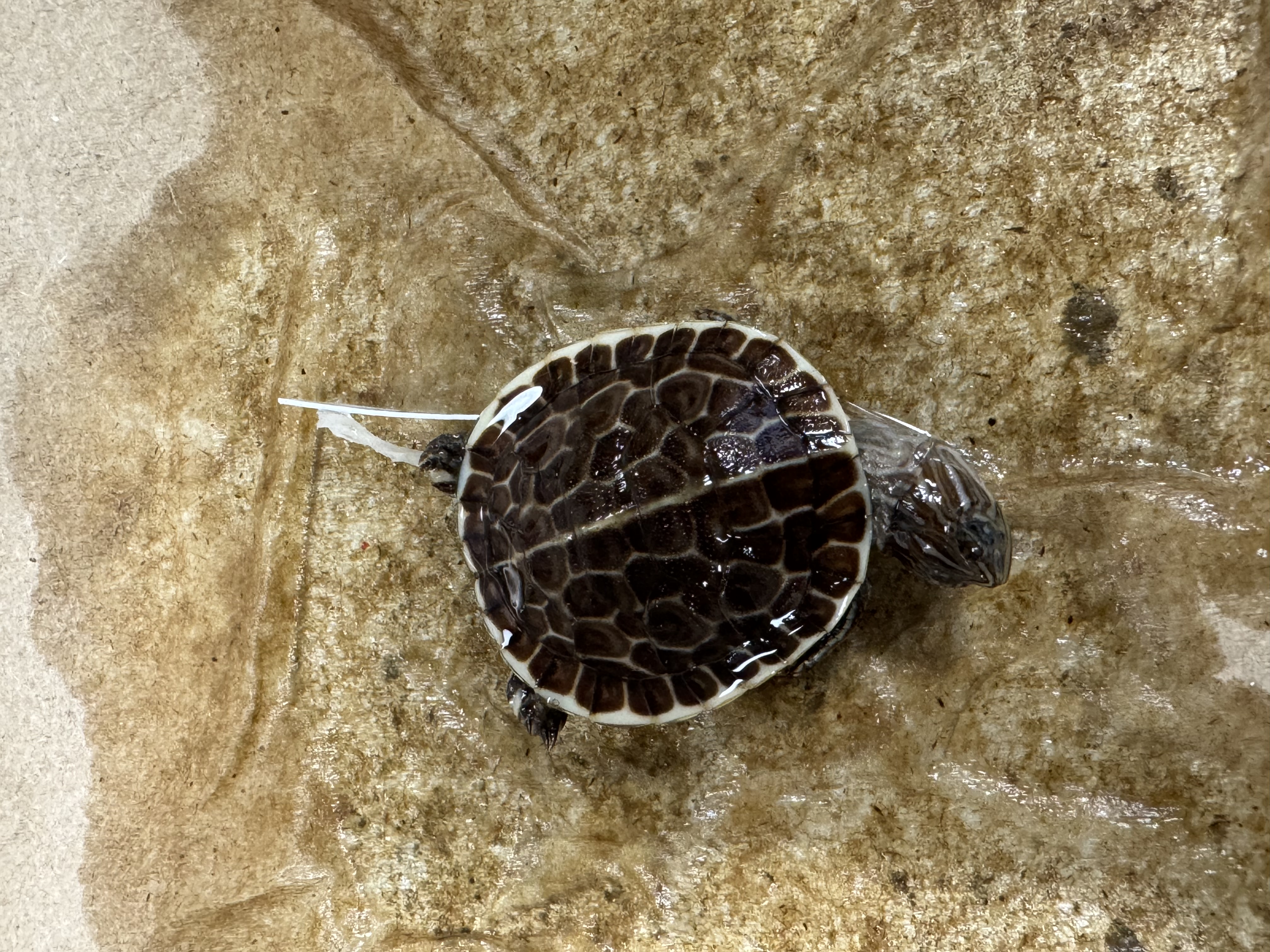
Deirochelys reticularia
Chicken turtle
a semi-aquatic turtle known for its long neck and distinctive pattern on its shell.
Graptemys barbouri
Barbour’s map turtle
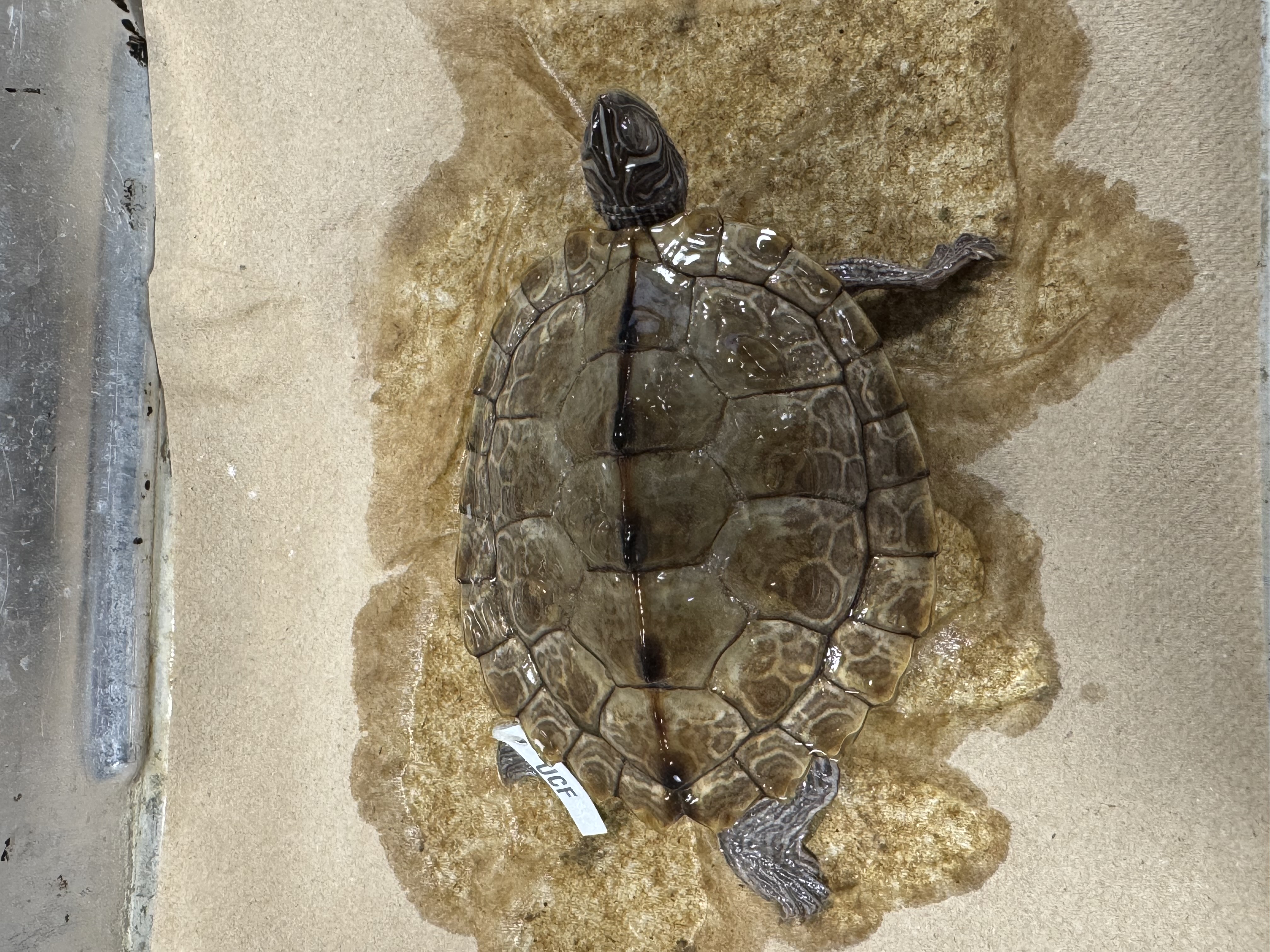
Graptemys pseudogeographica
False map turtle
PSEUDO means FALSE and GEOGRAPHIC is MAP, so false map
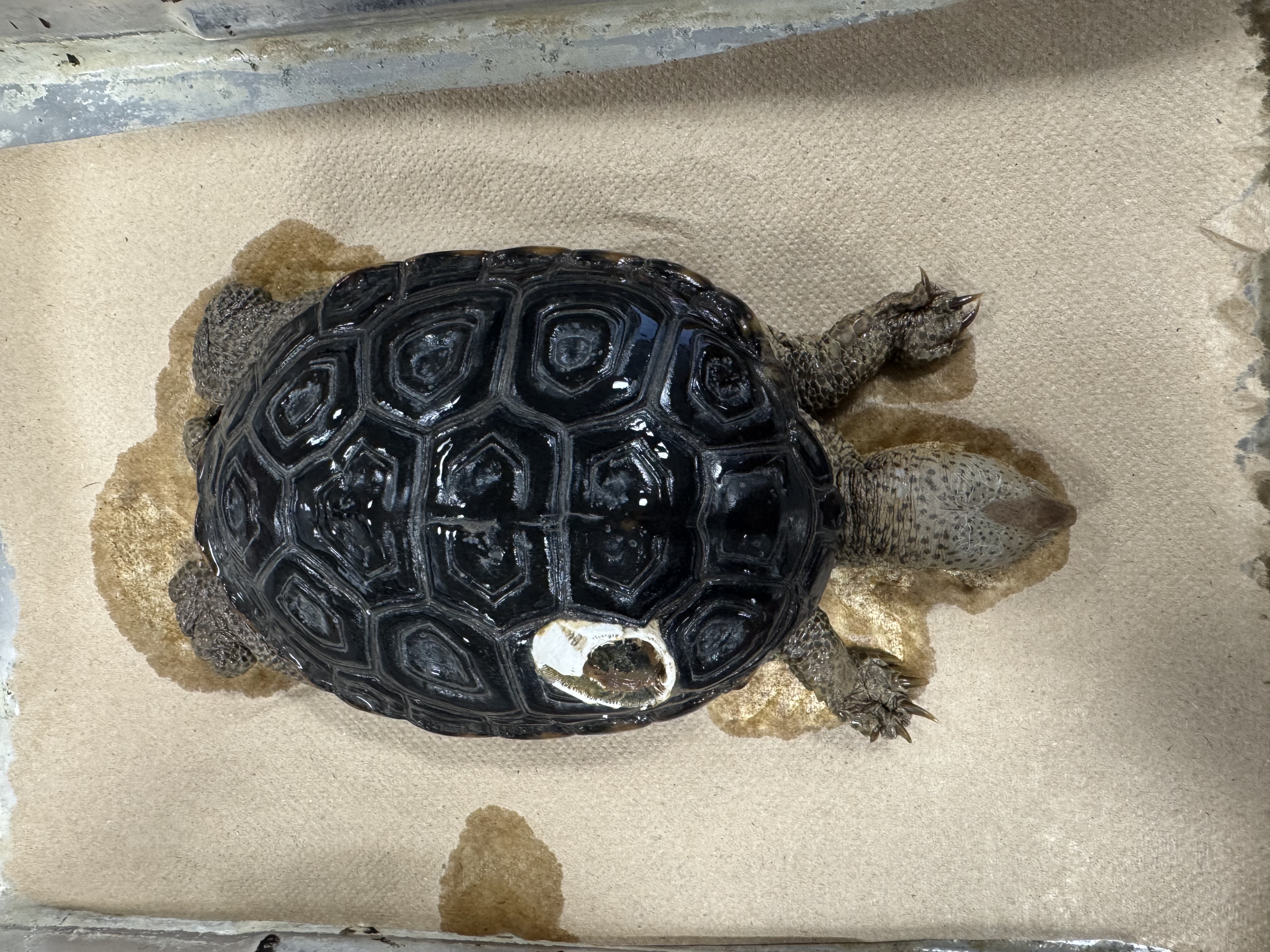
Malaclemys terrapin
Diamondback terrapin

Pseudemys concinna
River cooter

Pseudemys nelsoni
Florida redbelly cooter
his name is NELSON and he’s a fat southerner w a RED BELLY
NON NATIVE in part
has a distinctive red belly
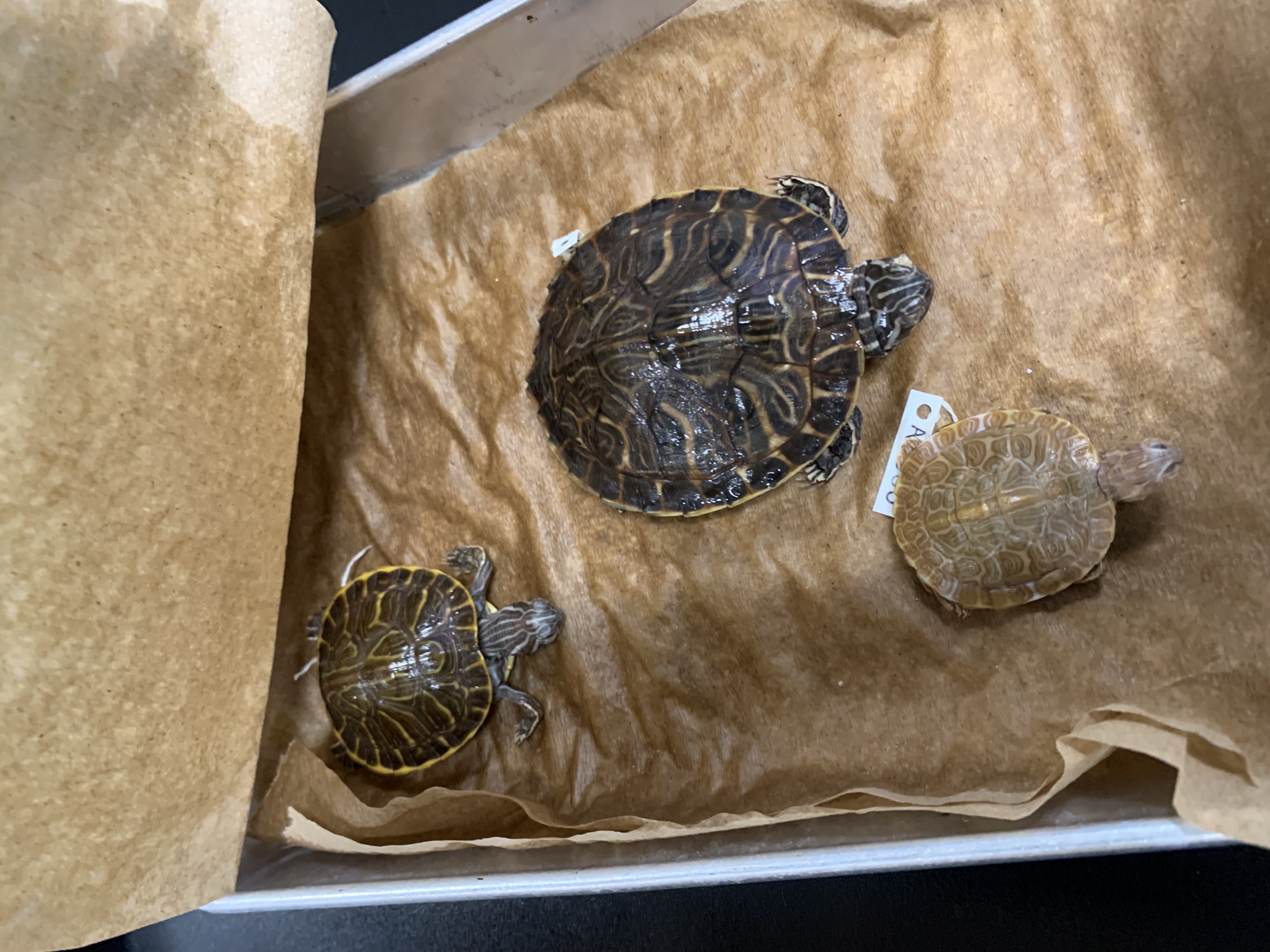
Pseudemys floridana peninsularis
Peninsula cooter
NON NATIVE in part
little line on forehead
Pseudemys suwanniensis
Suwannee cooter
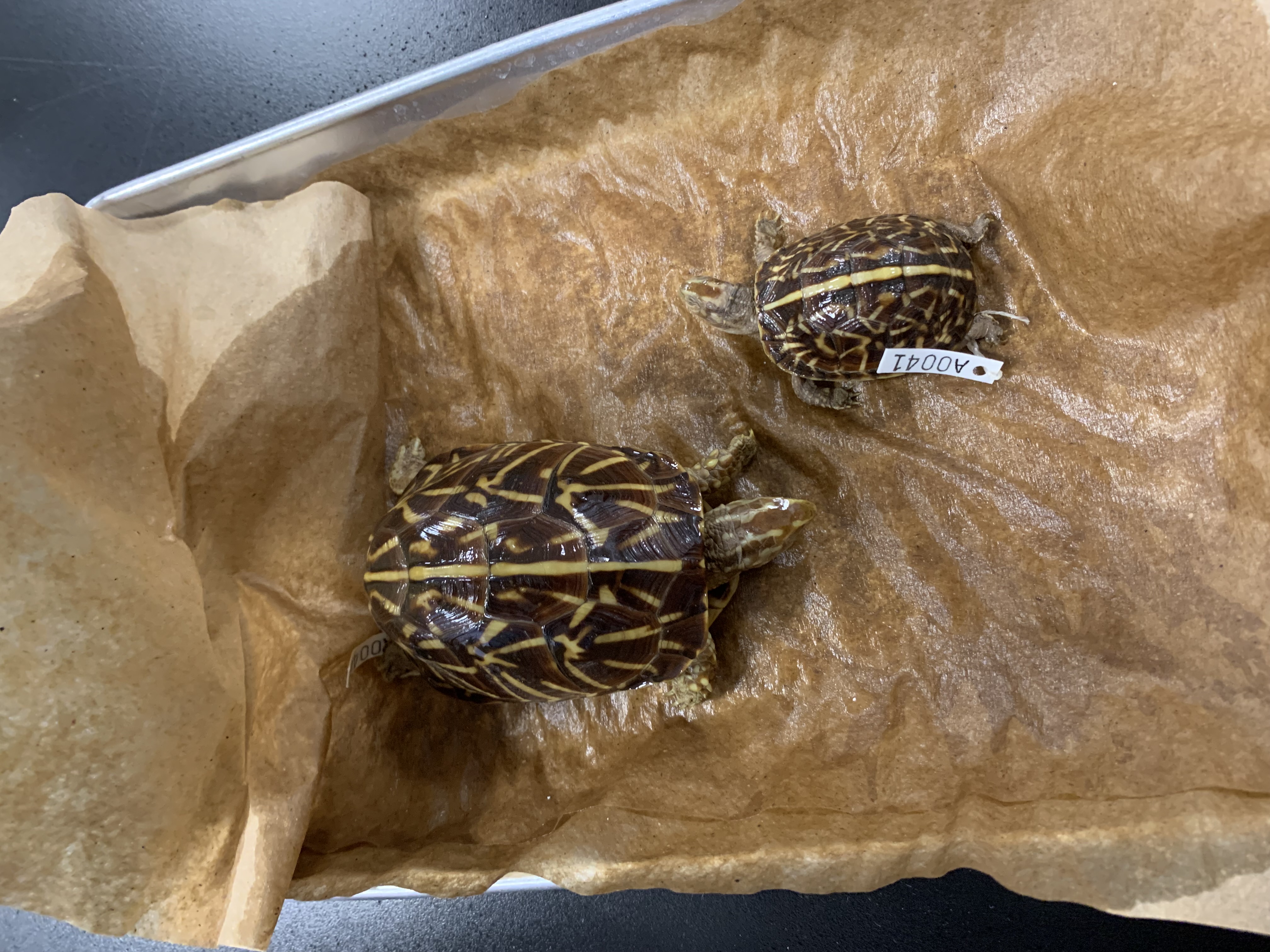
Terrapene carolina
Eastern box turtle
a turtle known for its domed shell and ability to completely close its shell
light brown shell with light yellow paw like markings

Trachemys scripta
Pond slider
NON NATIVE in part
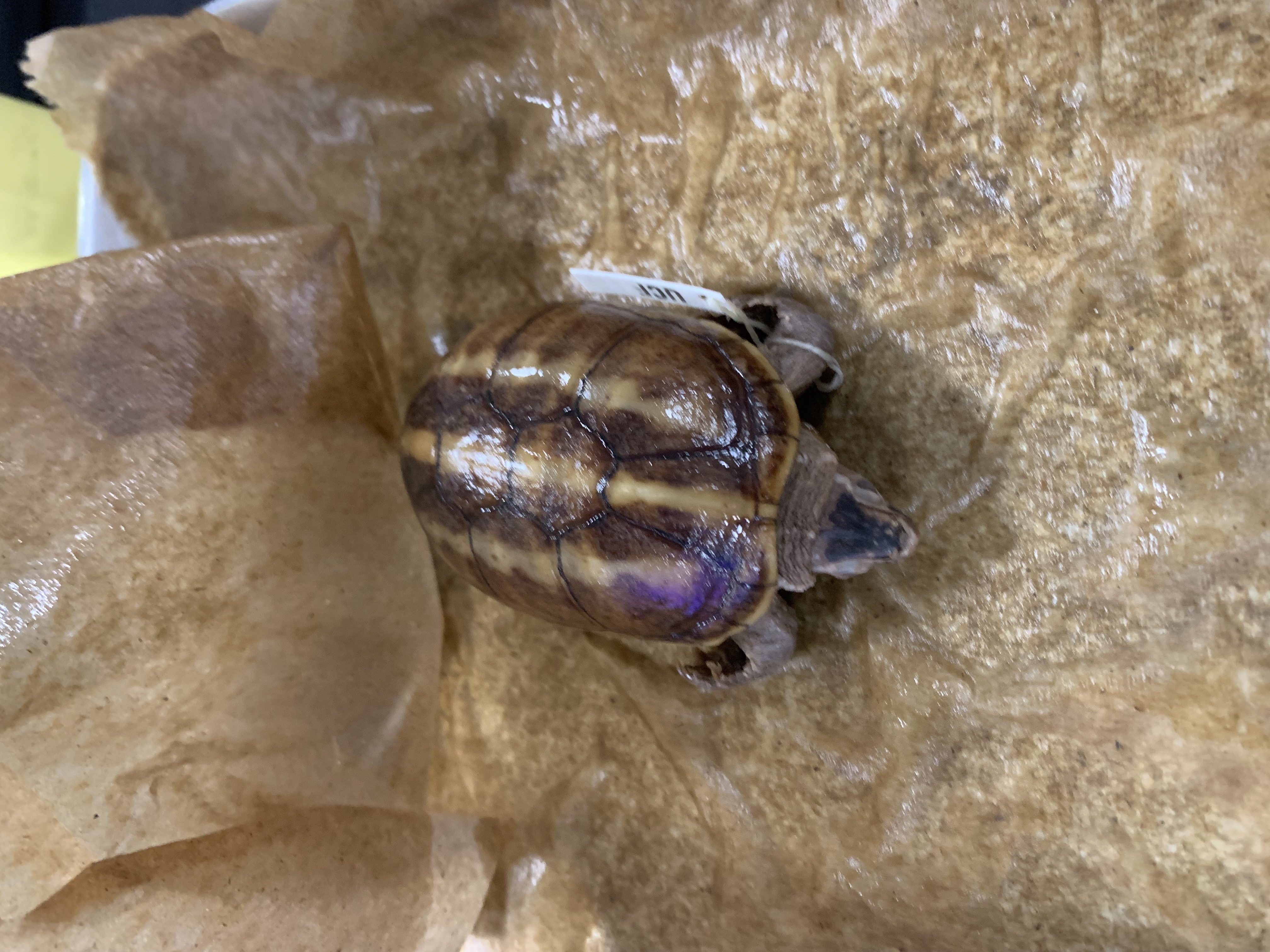
Kinosternon baurii
Striped mud turtle
3 stripes down shell
Kinosternon subrubrum
Mud turtle
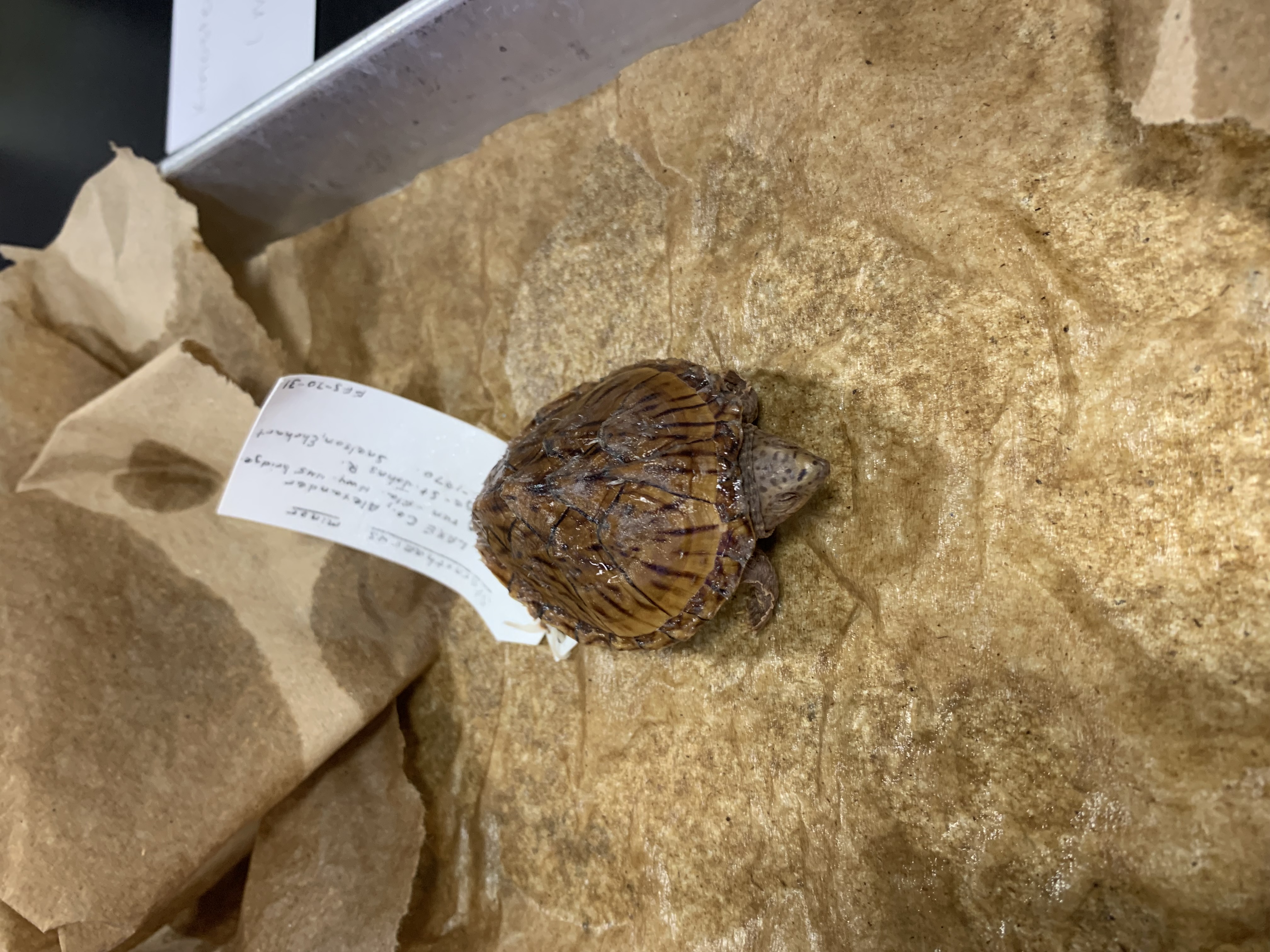
Sternotherus minor
Loggerhead musk turtle
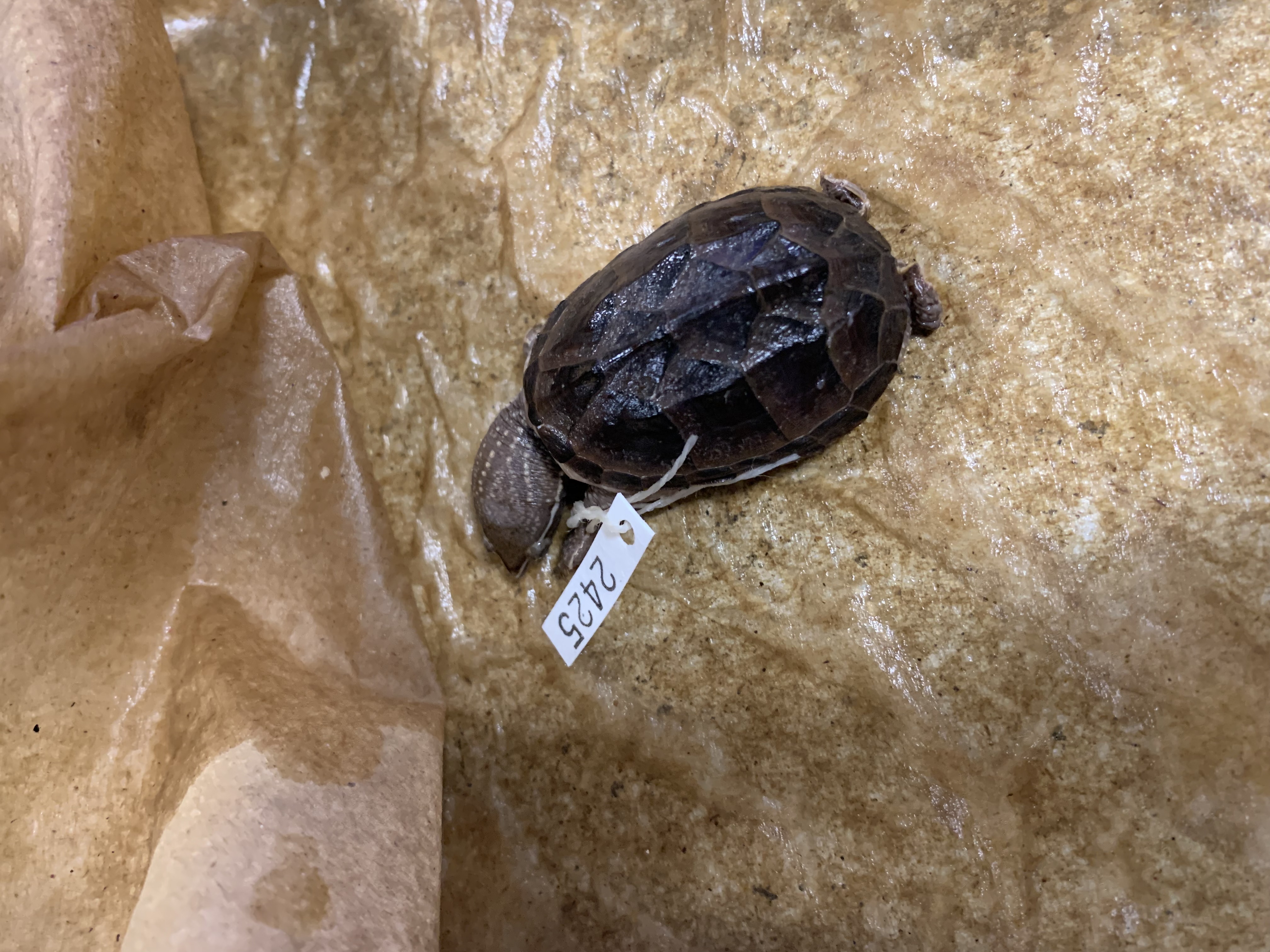
Sternotherus odaratus
Eastern musk turtle
dark shell
2 lines of dots on head extending toward but not hitting eyes
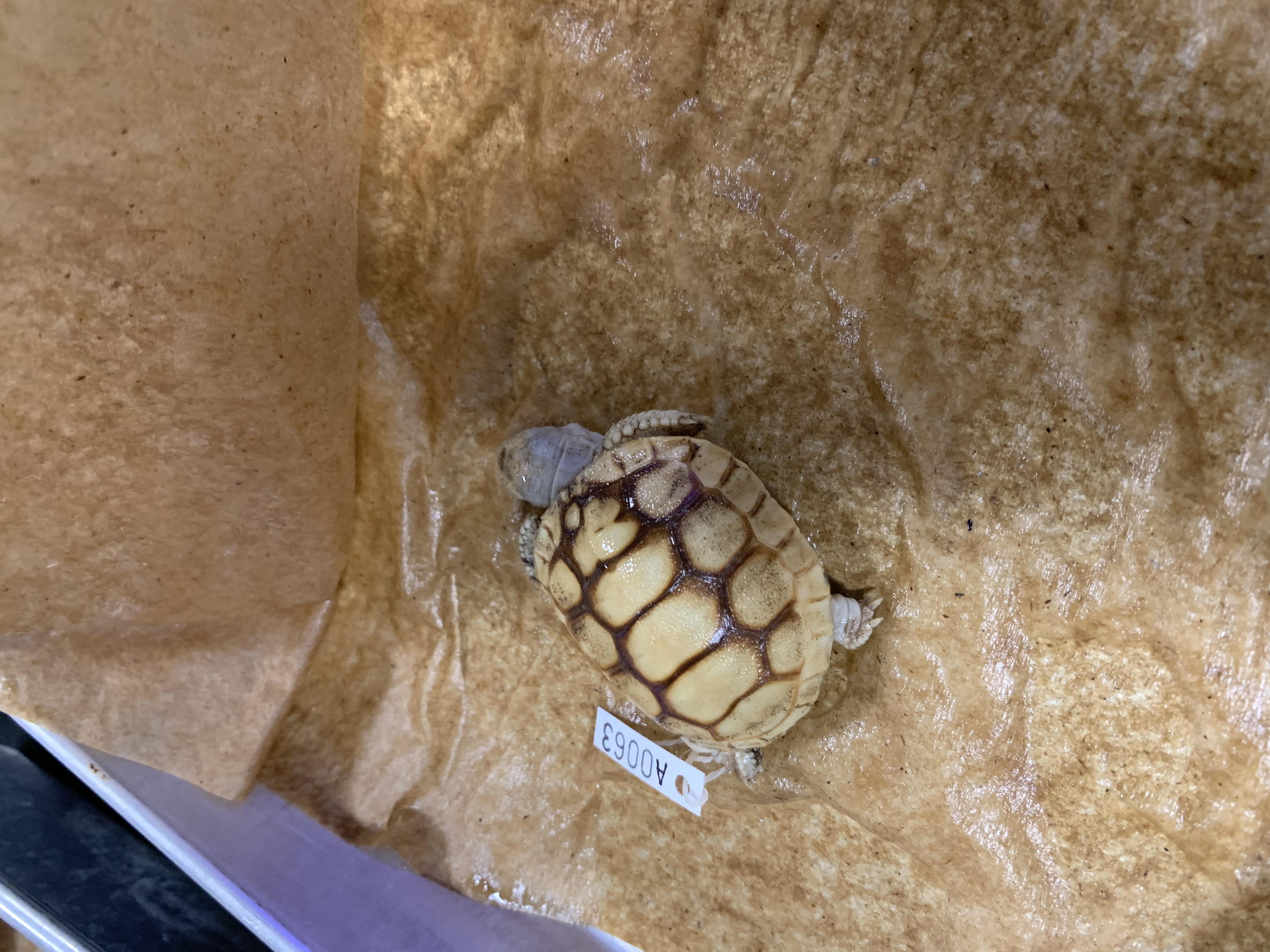
Gopherus polyphemus
Gopher tortoise
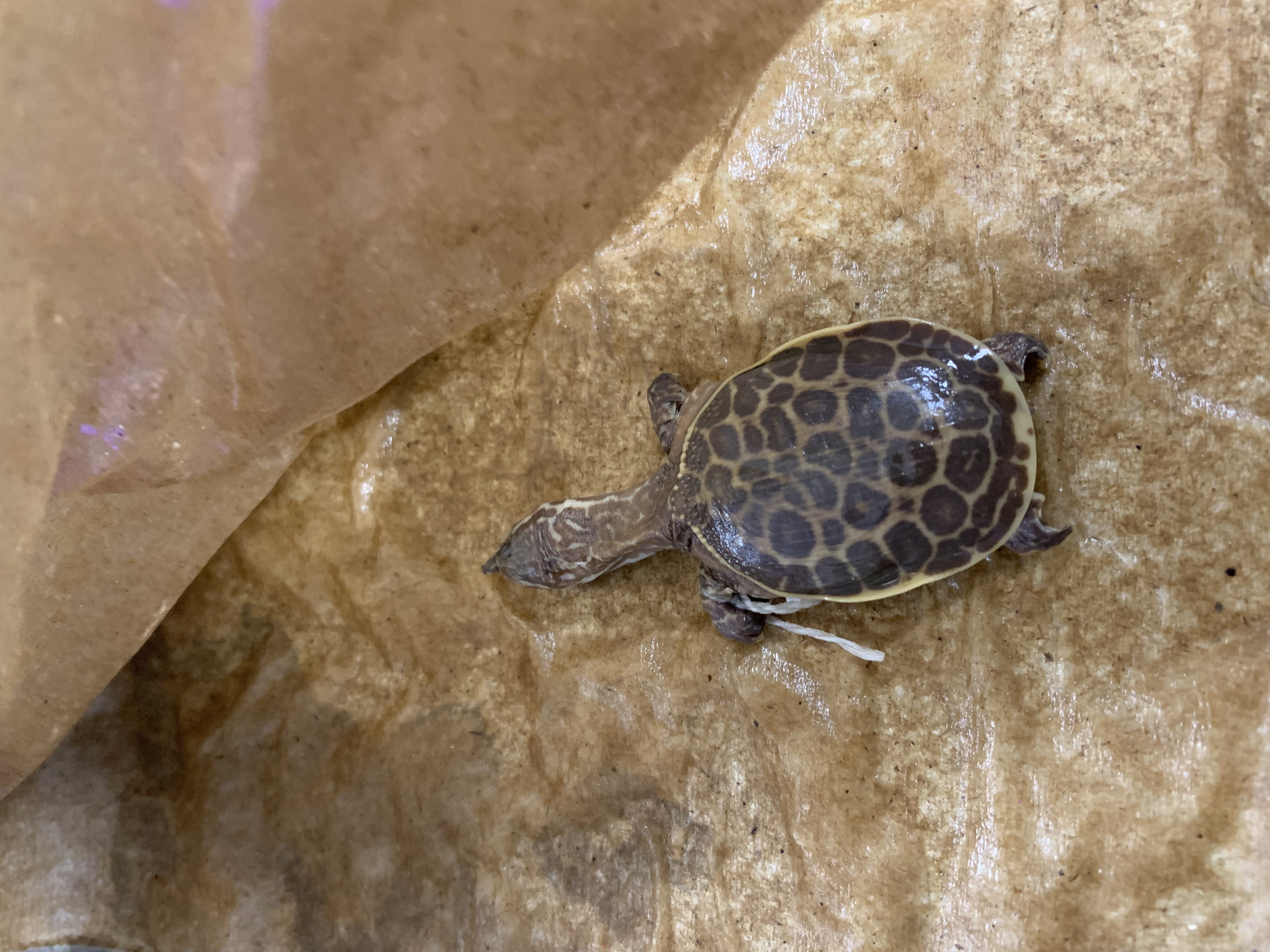
Apalone ferox
Florida softshell
NON NATIVE in part
leopard print shell
Apalone spinifera
Spiny softshell
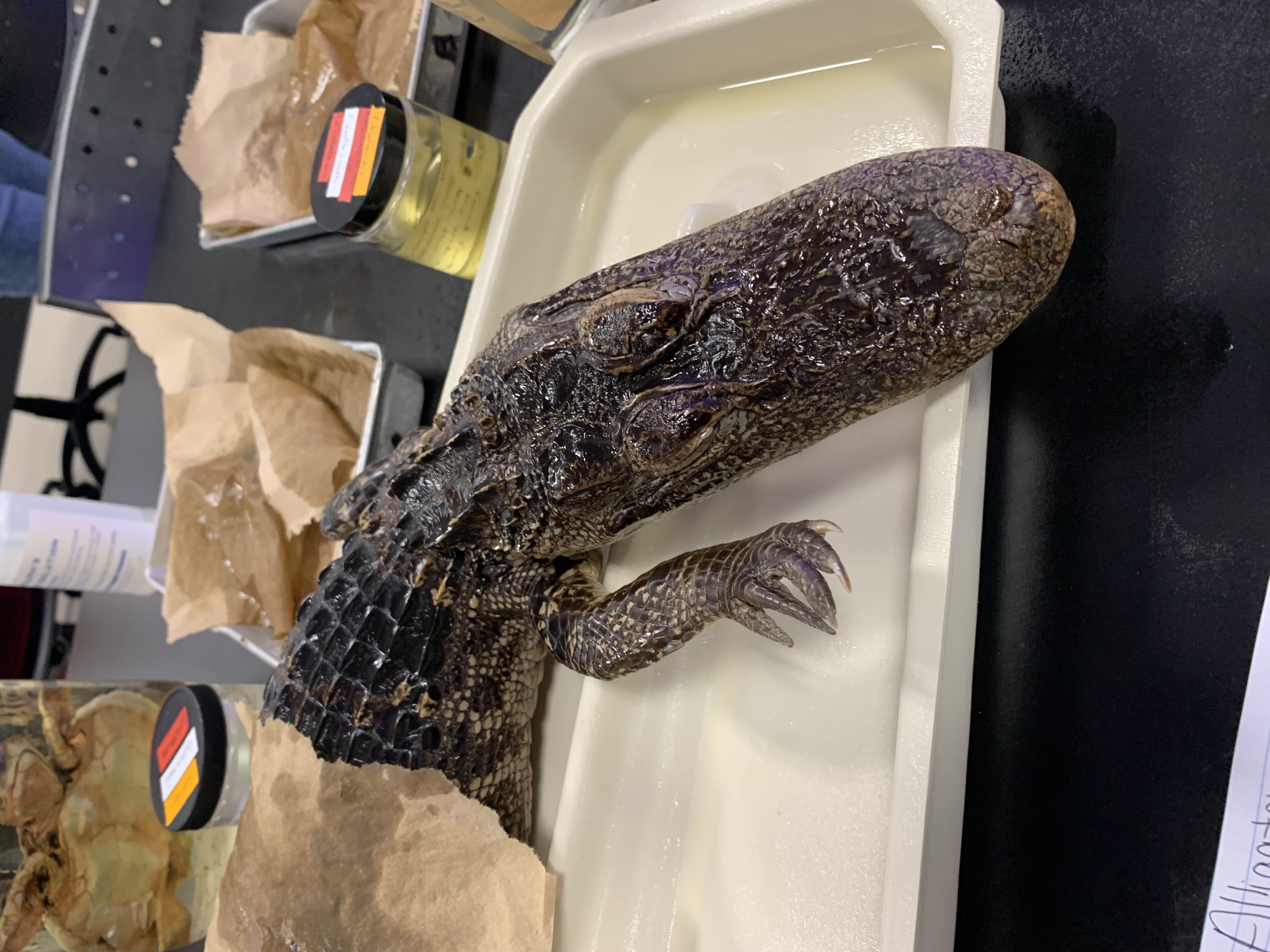
Alligator mississippiensis
American alligator
MISSISSIPPI is such an AMERICAN river
a large reptile found in the wetlands of the southeastern United States
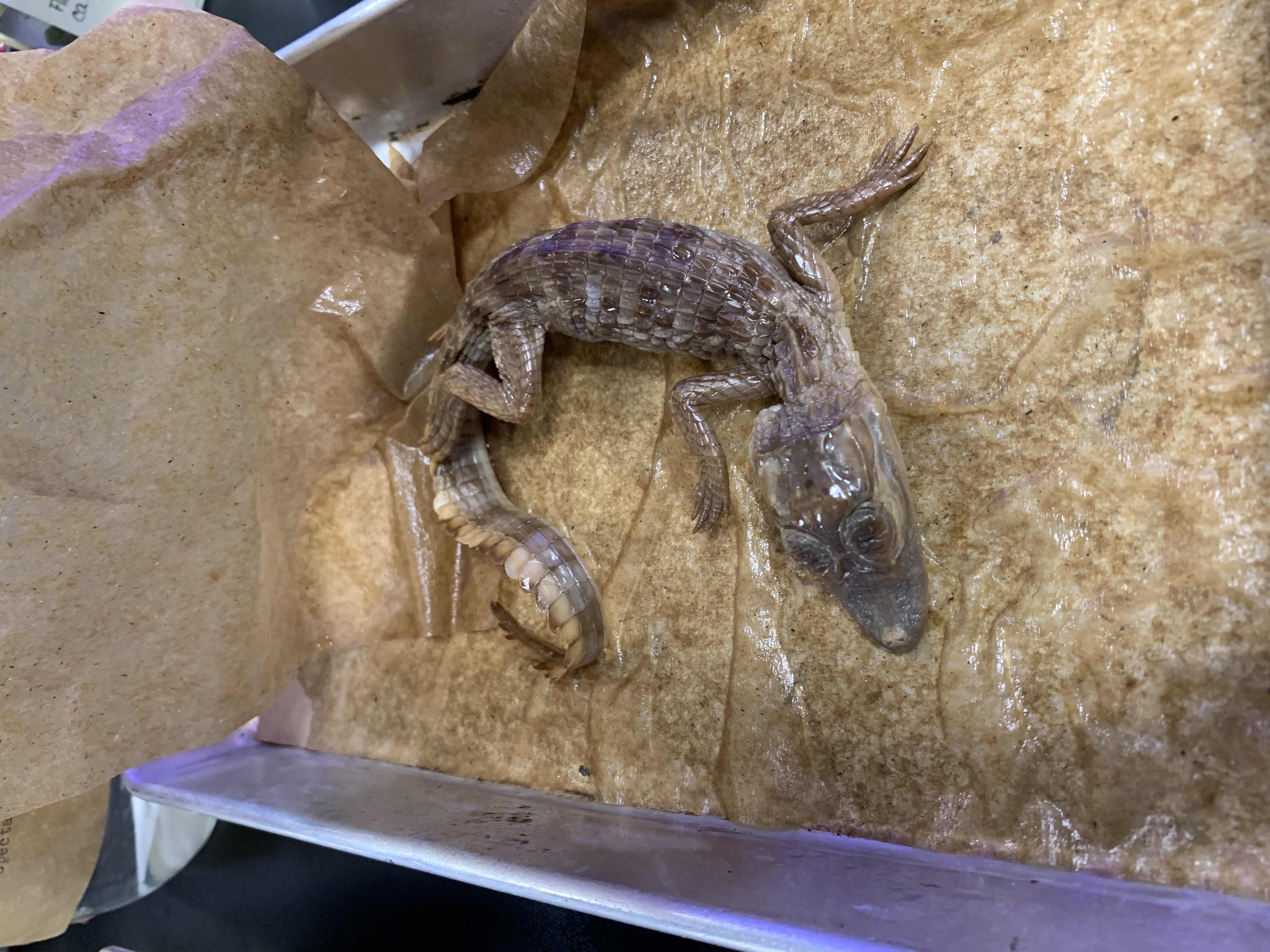
Caiman crocodilus
Spectacled caiman
NON NATIVE
a non-native species of caiman found in Central and South America
it looks like he has spectacles on
Crocodylus acutus
American crocodile
he is a CROCODILE ACTUALLY

Rhineura floridana
Florida worm lizard

Agama agama
African rainbow lizard
NON NATIVE
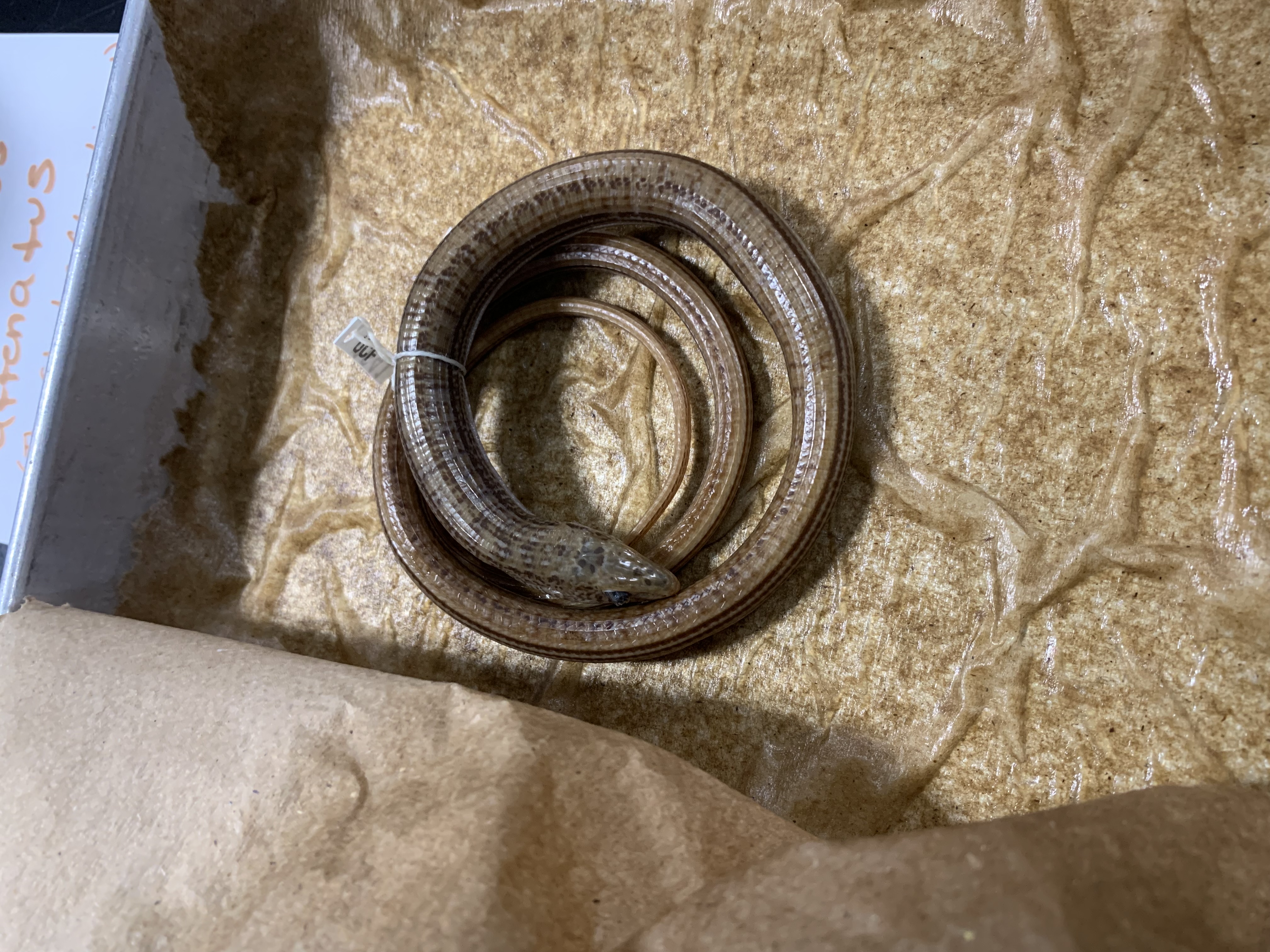
Ophisaurus attenuatus
Slender glass lizard
she pays ATTENTION to her diet to stay SLENDER
stripes above and below fold
tail starts after cloaca and is extremely long
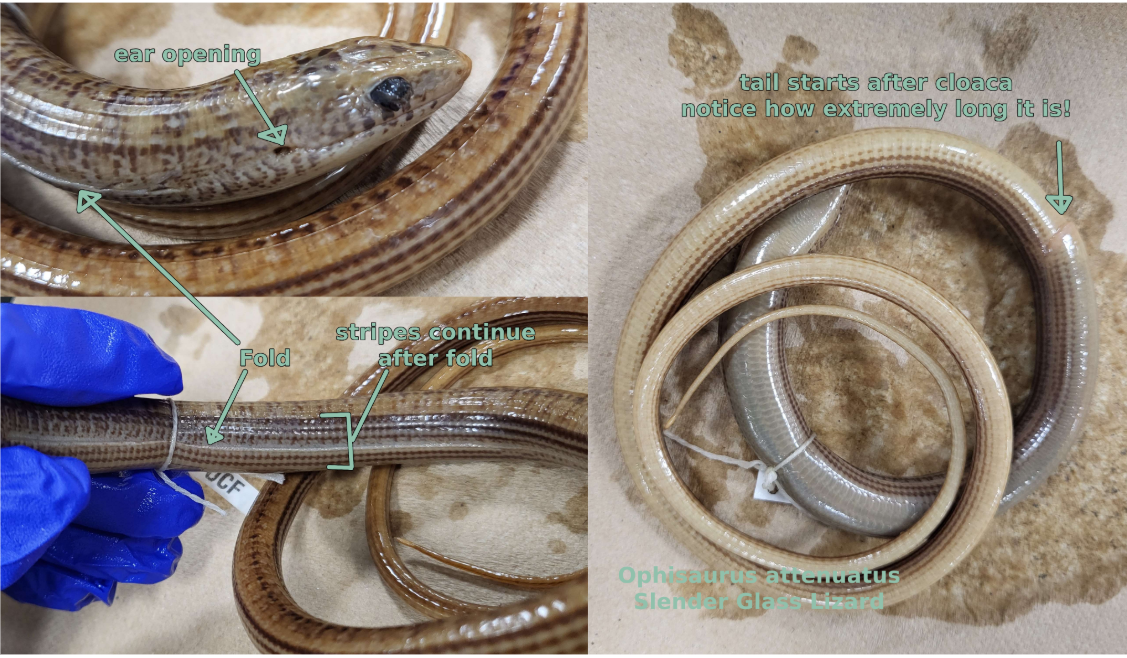
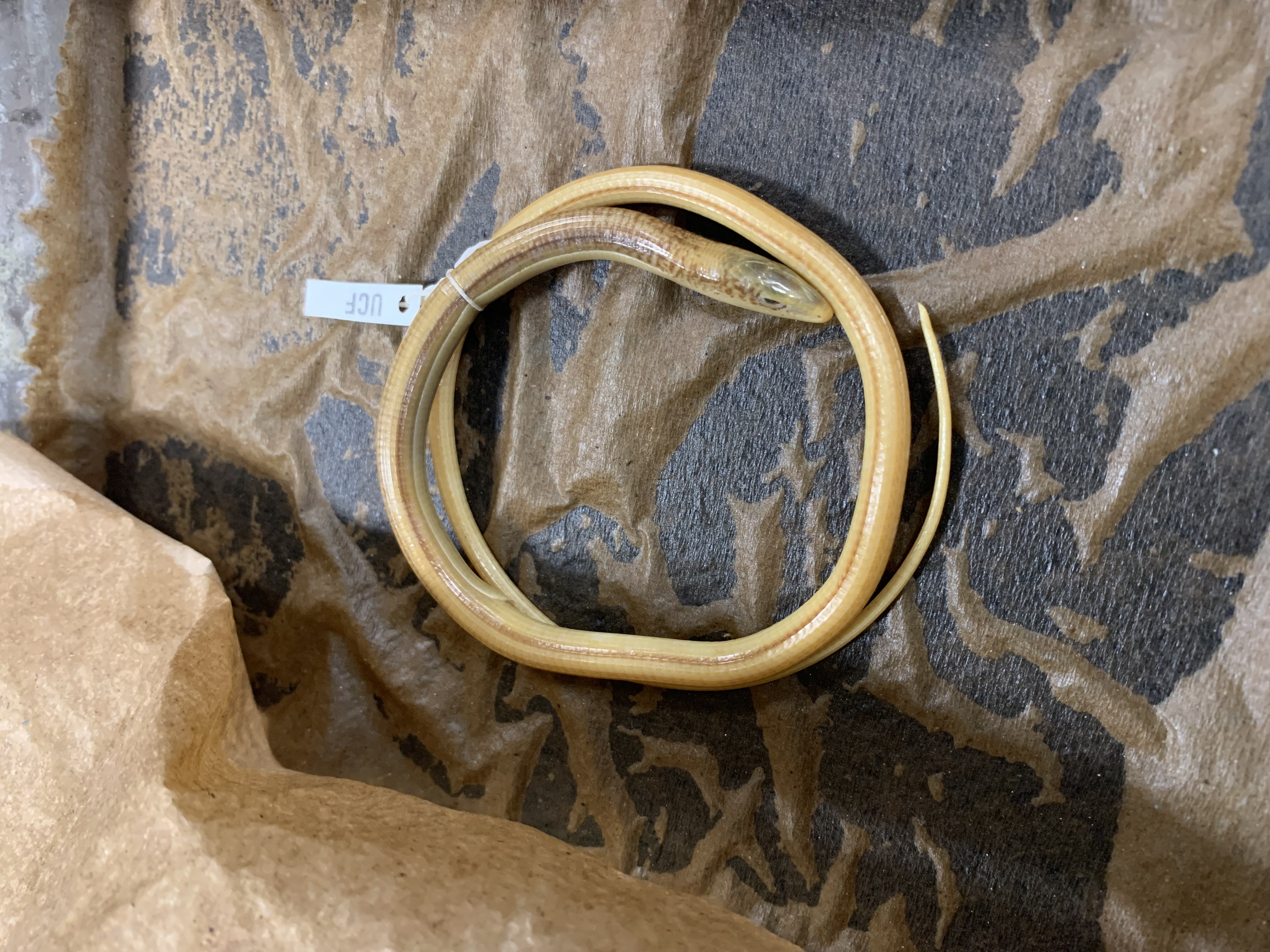
Ophisaurus compressus
Island glass lizard
ISLANDS are COMPRESSED
splotches toward front COMPRESS into single stripe
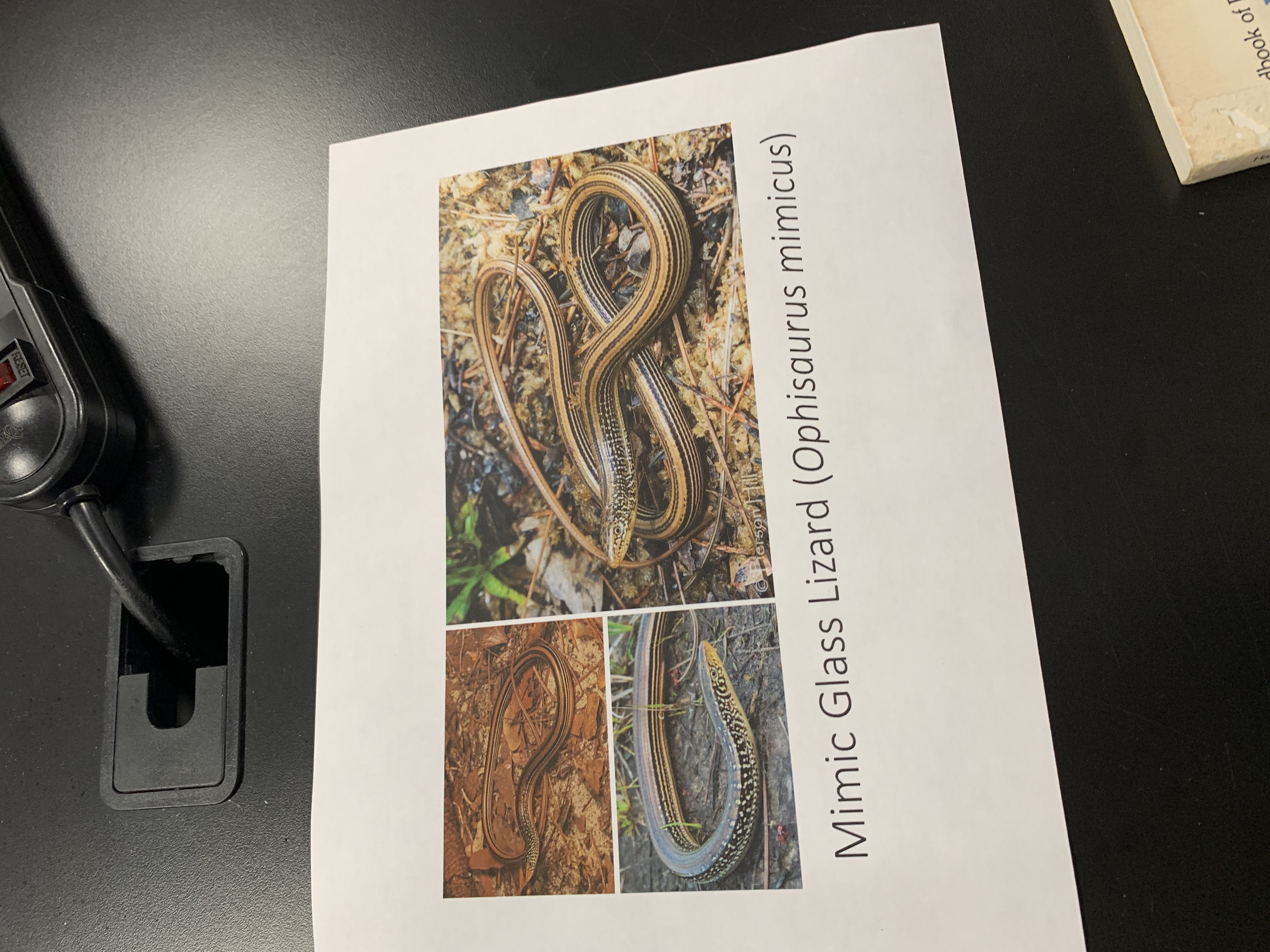
Ophisaurus mimicus
Mimic glass lizard
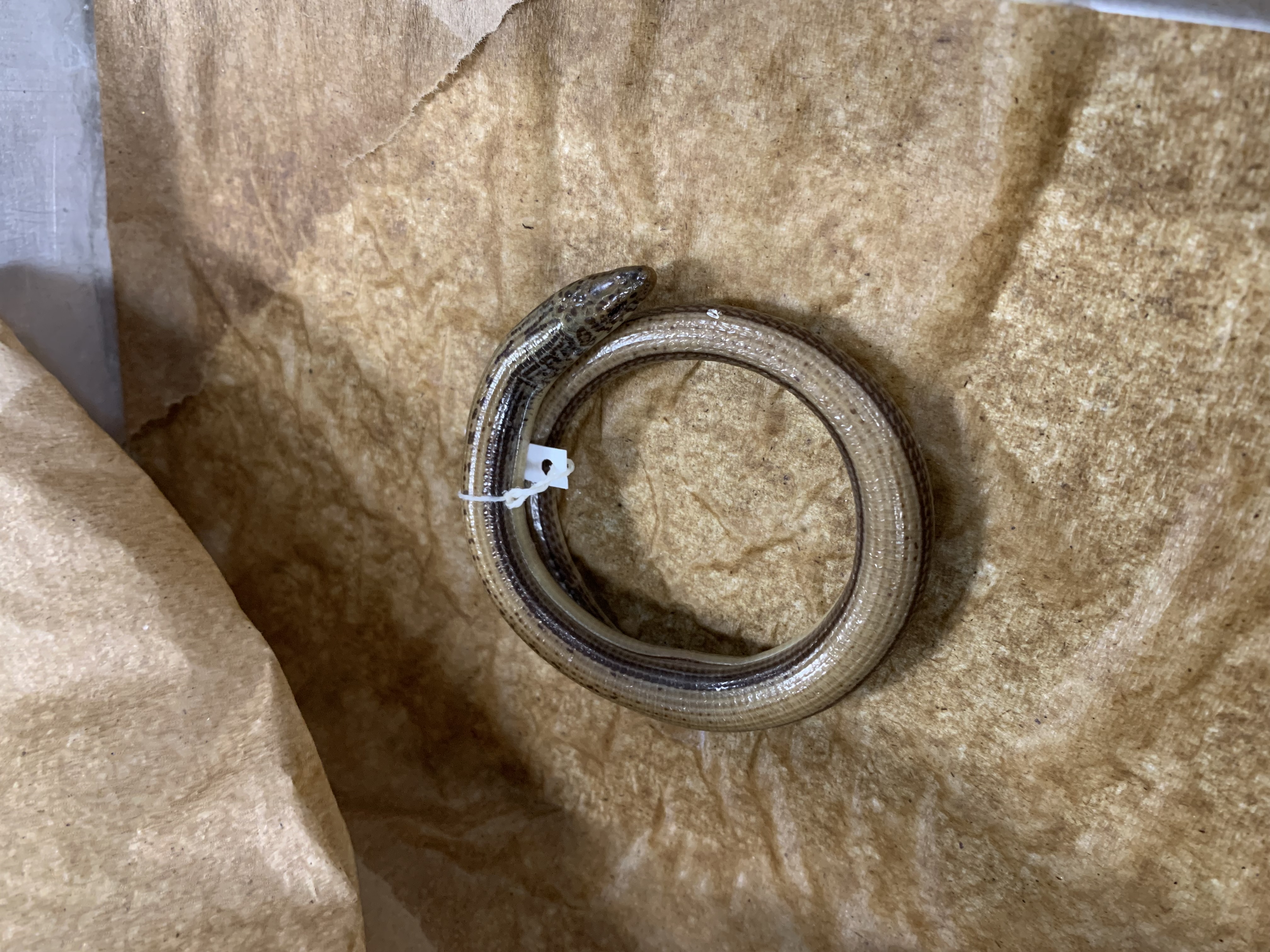
Ophisaurus ventralis
Eastern glass lizard
thicker body
usually don’t entirely look like stripes
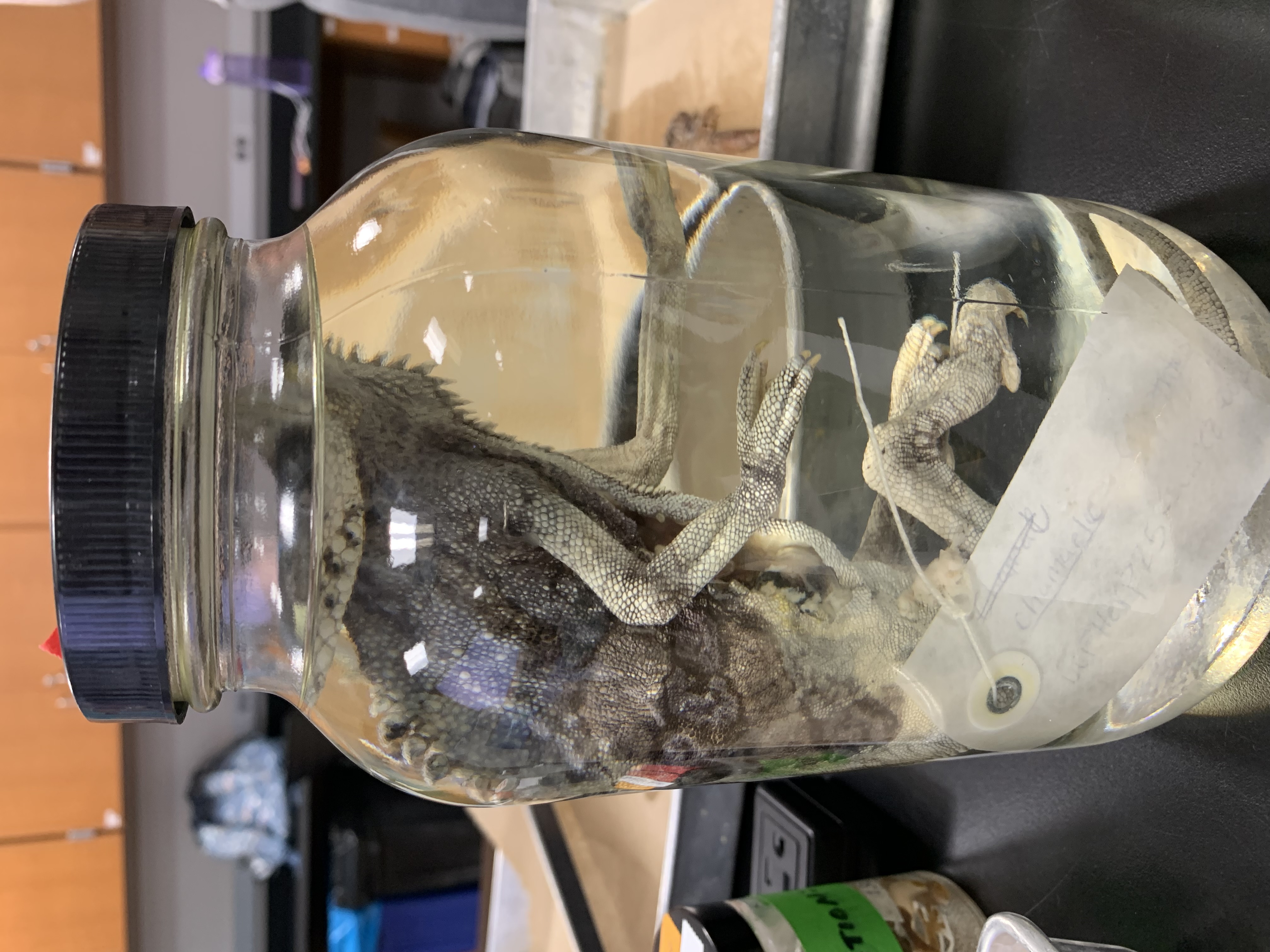
Chamaeleo calyptratus
Veiled chameleon
NON NATIVE
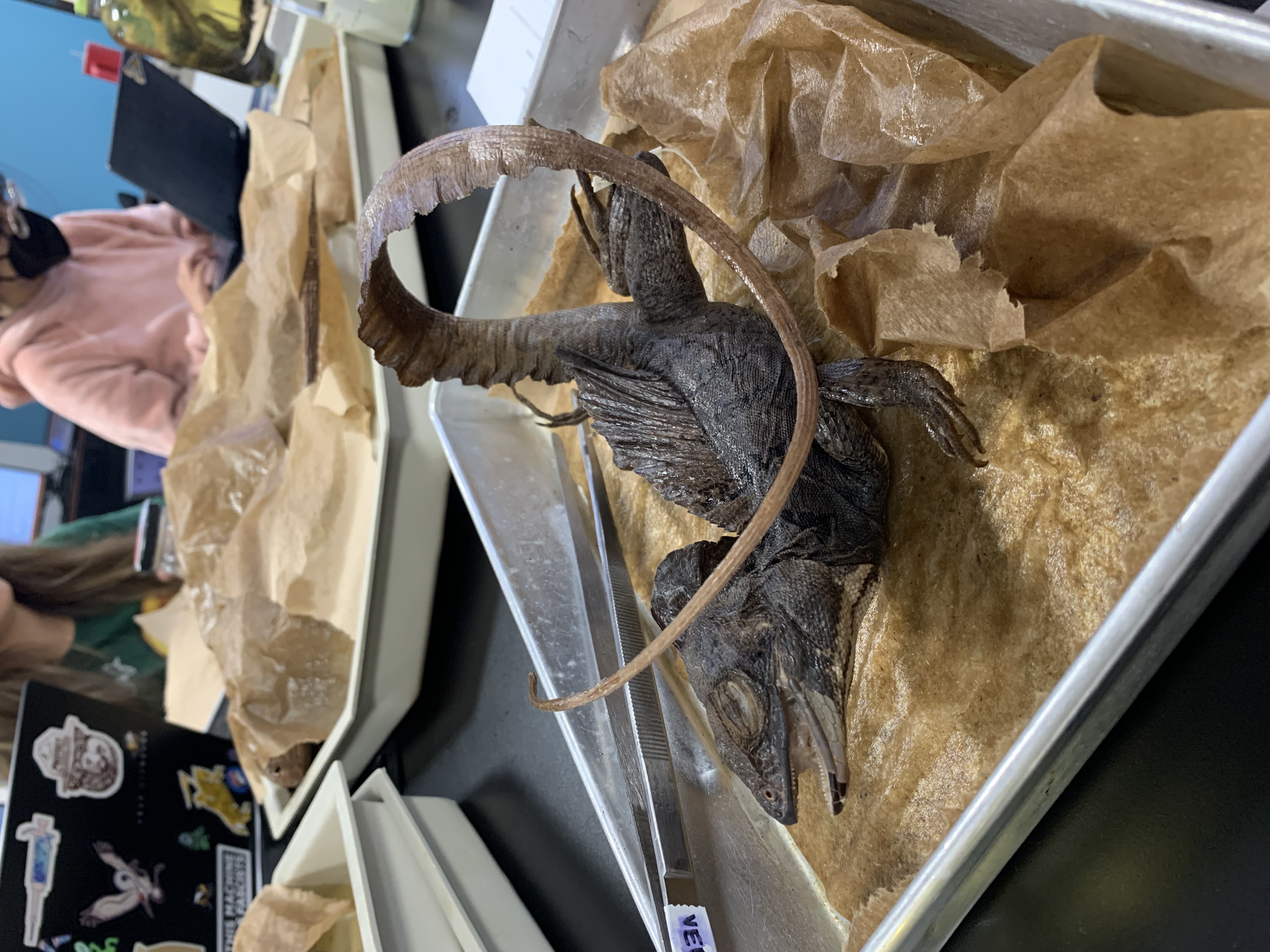
Basiliscus vittatus
Brown basilisk
NON NATIVE, NOT found on campus
family Corytophanidae, helmeted lizards
common near bodies of water (canals, lake shorelines, retention ponds) and areas of thick vegetation, frequently bask on sidewalks and roads
diet
primarily insectivores, also arthropods (spider and crabs), anoles, small snakes
size
4.5-6.5 inches, males larger than fems
including tail, adults range from 11-27 inches
brown to dark olive w yellow stripe on sides running from eye to back
long fringed hind toes allow it to run across water (jesus lizard)
prominent head crest, larger in males than fems (small basilisks of bot sexes lack head crest)
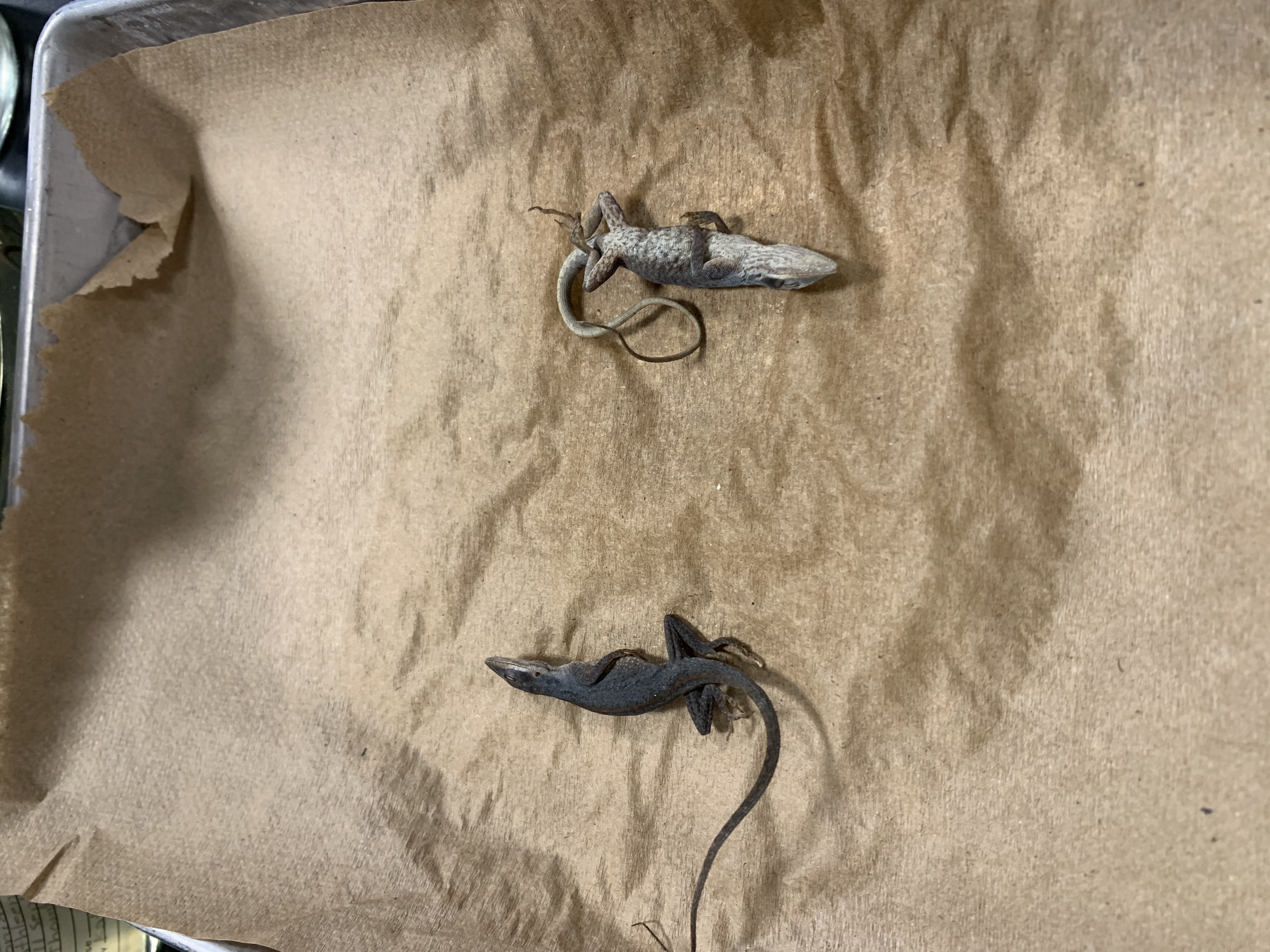
Anolis carolinensis
Green anole
light, spotted underside
Anolis equestris
Knight anole
NON NATIVE
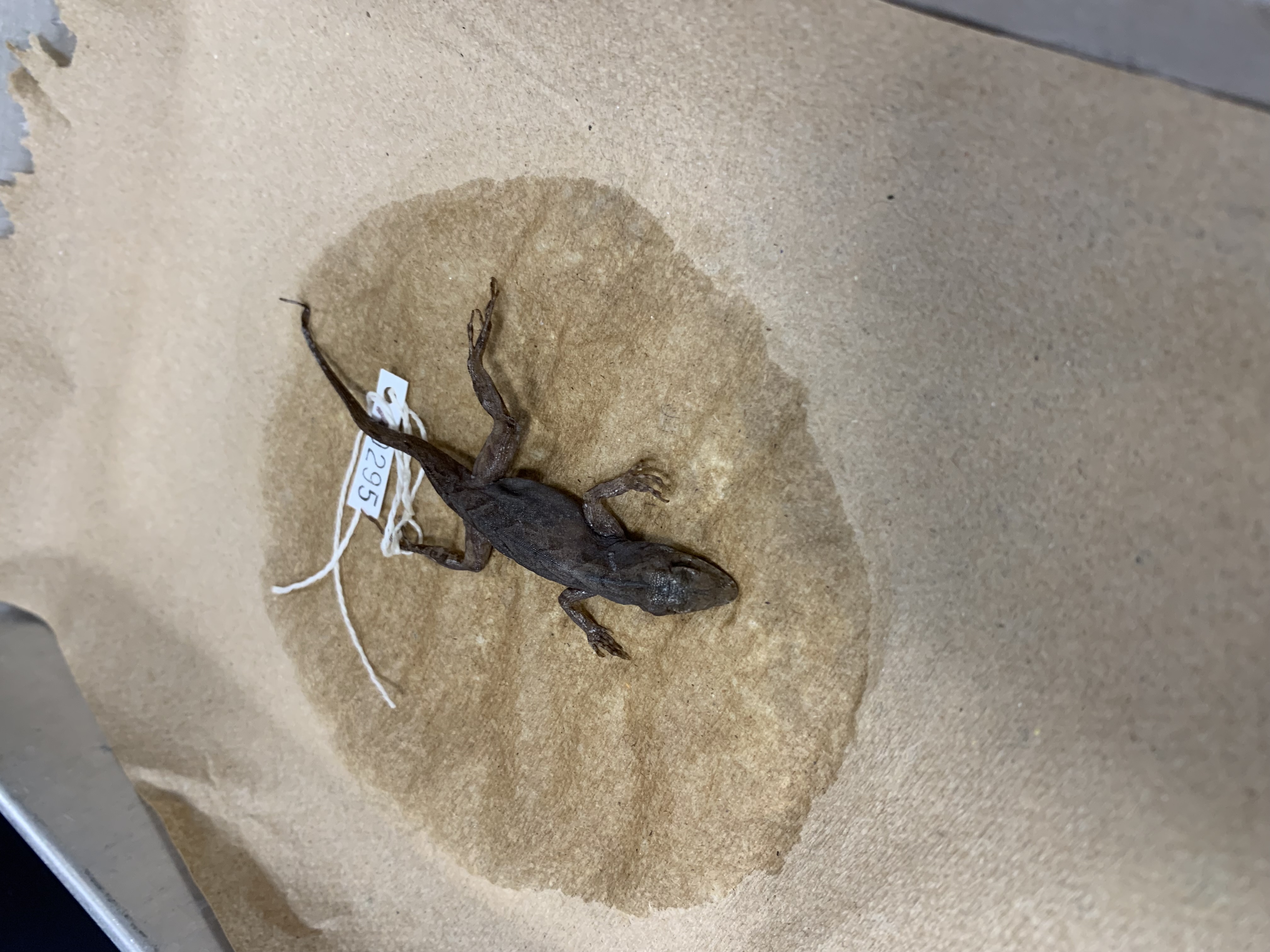
Anolis sagrei
Cuban brown anole
NON NATIVE
round head
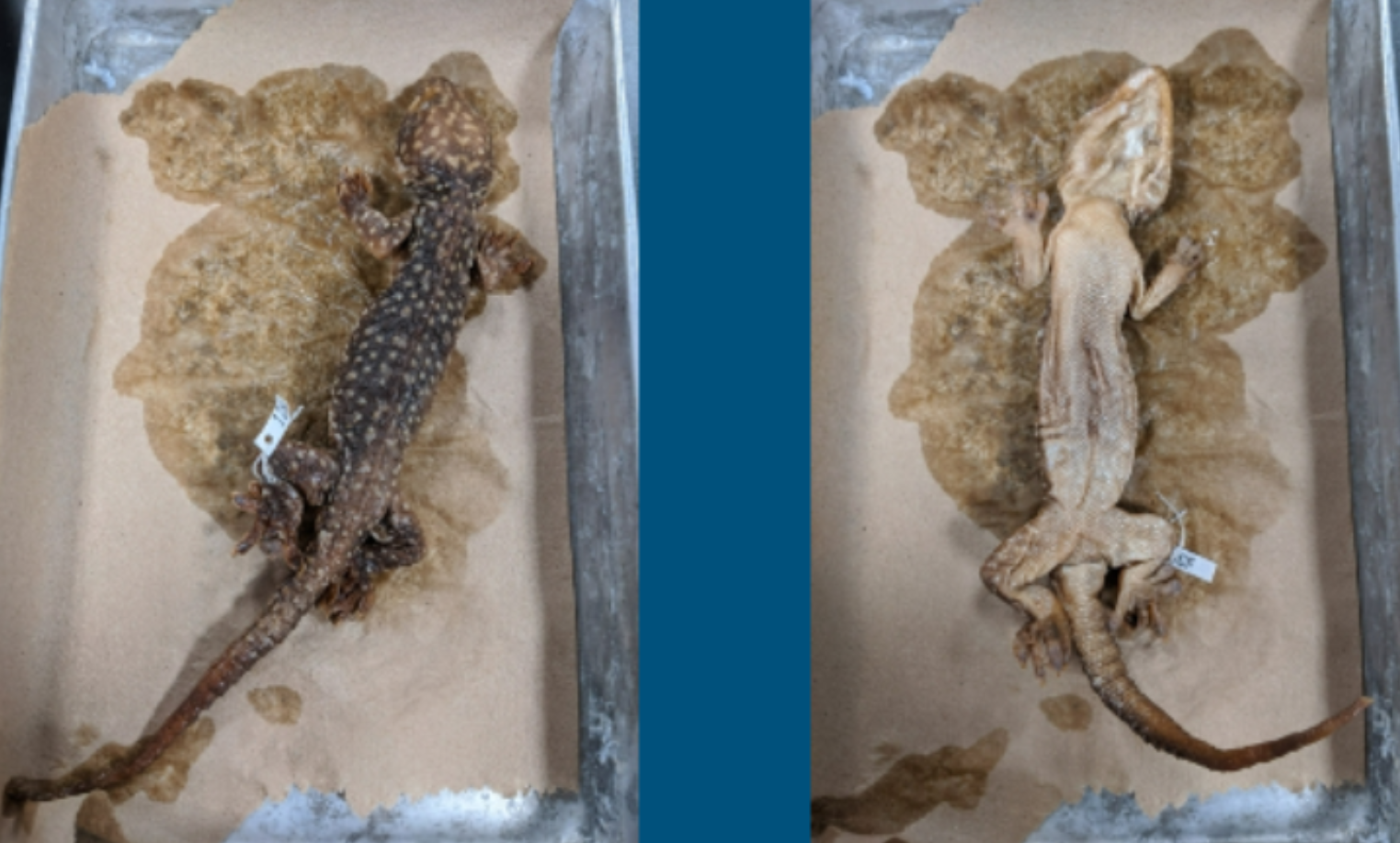
Gekko gecko
Tokay gecko
NON NATIVE

Hemidactylus gamotii
Indo-Pacific house gecko
NON NATIVE
darker than tropical house geckos
broken tail
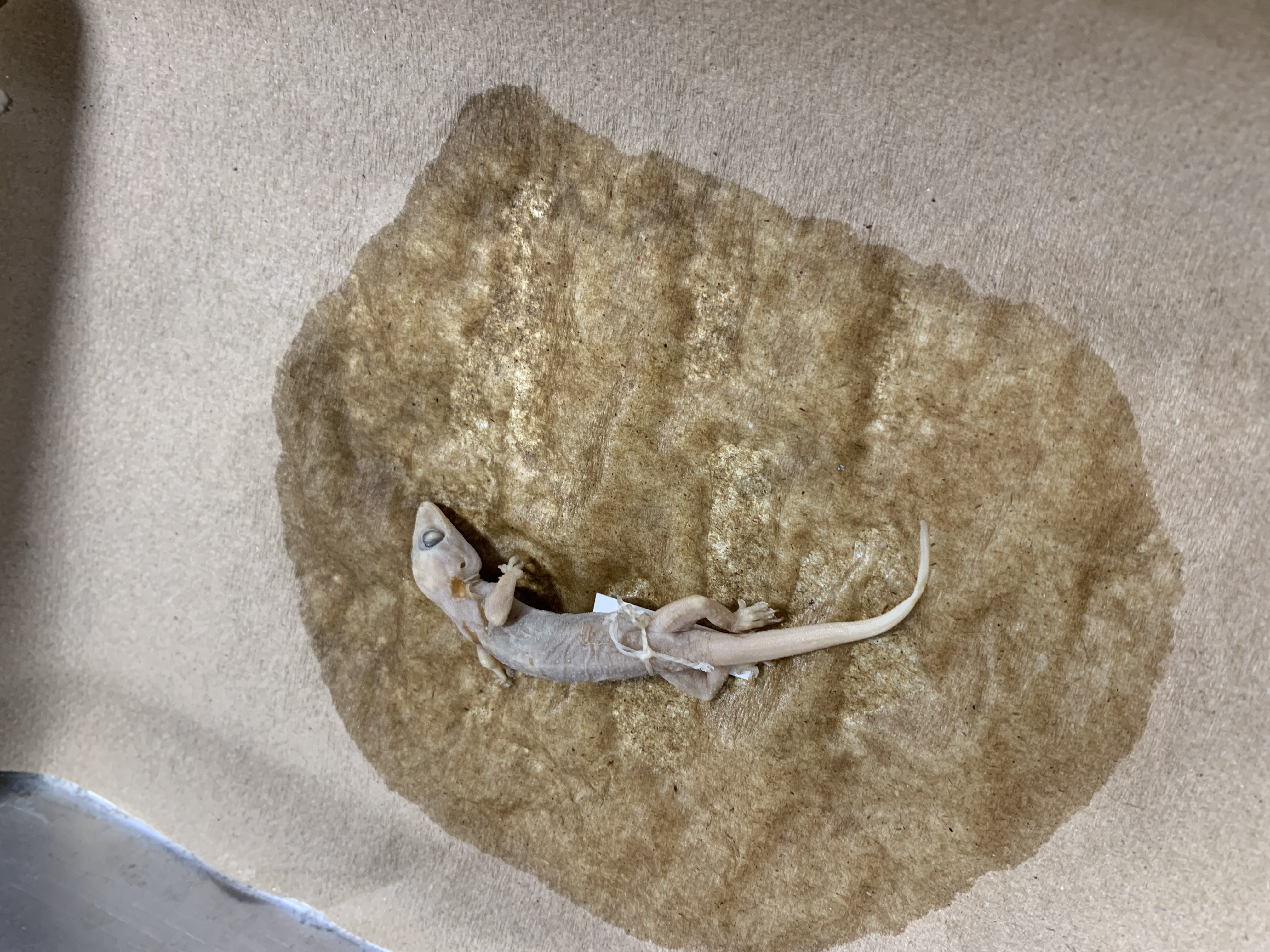
Hemidactylus mabouia
Tropical house geckos
NON NATIVE
HOUSE GECKOS are MY BOO, YA
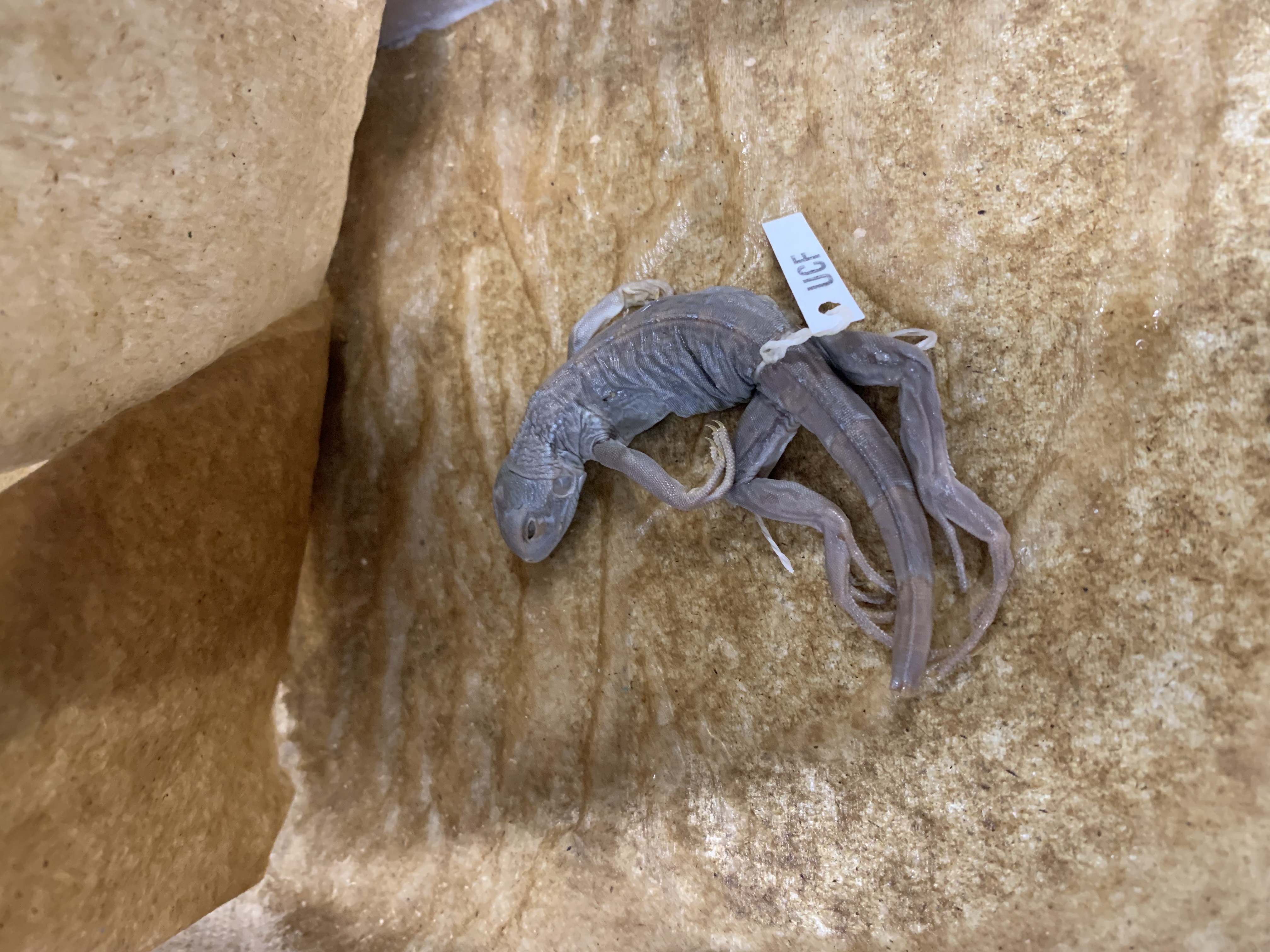
Iguana iguana
Green iguana
family Iguanidae, Iguanas
NON NATIVE, NOT found on campus
found near bodies of permanent water and prefers areas w trees
good climbers and swimmers, dig burrows
salt and freshwater tolerant
diet
primarily herbivores w tendency for ornamental plants
adults seen eating bird eggs, small vertebrates, and carrion
juveniles seen eating insects and small tree snails
size
males grow over 6 ft long (including tail)
fems can reach over 5 ft
large round scale at rear of jaw
both sexes have throat fan (dewlap) with little spikes
bright to dull green, olive, and brown that varies w temp
juveniles bright green and breeding males can be orange or pink

Leiocephalous carinatus
Northern curlytail lizard
family Leiocephalidae, curly-tailed lizards
INVASIVE, native to Bahamas, Cayman Islands, and Cuba
habitat: mostly terrestrial, prone to retreating into burrows, introduced as pest control in sugar cane plantations
IS found on campus
diet: omnivores with preference for insects, also eat seeds, small fruits, terrestrial arthropods
size: ~9 inches snout to tail
keeled scales give rougher texture
most easily identified by curled tail
often have darker spots on back with lighter spots on side
gray to tan to brown

Sceloporus undulatus
Eastern fence lizard
he goes UNDER the FENCE
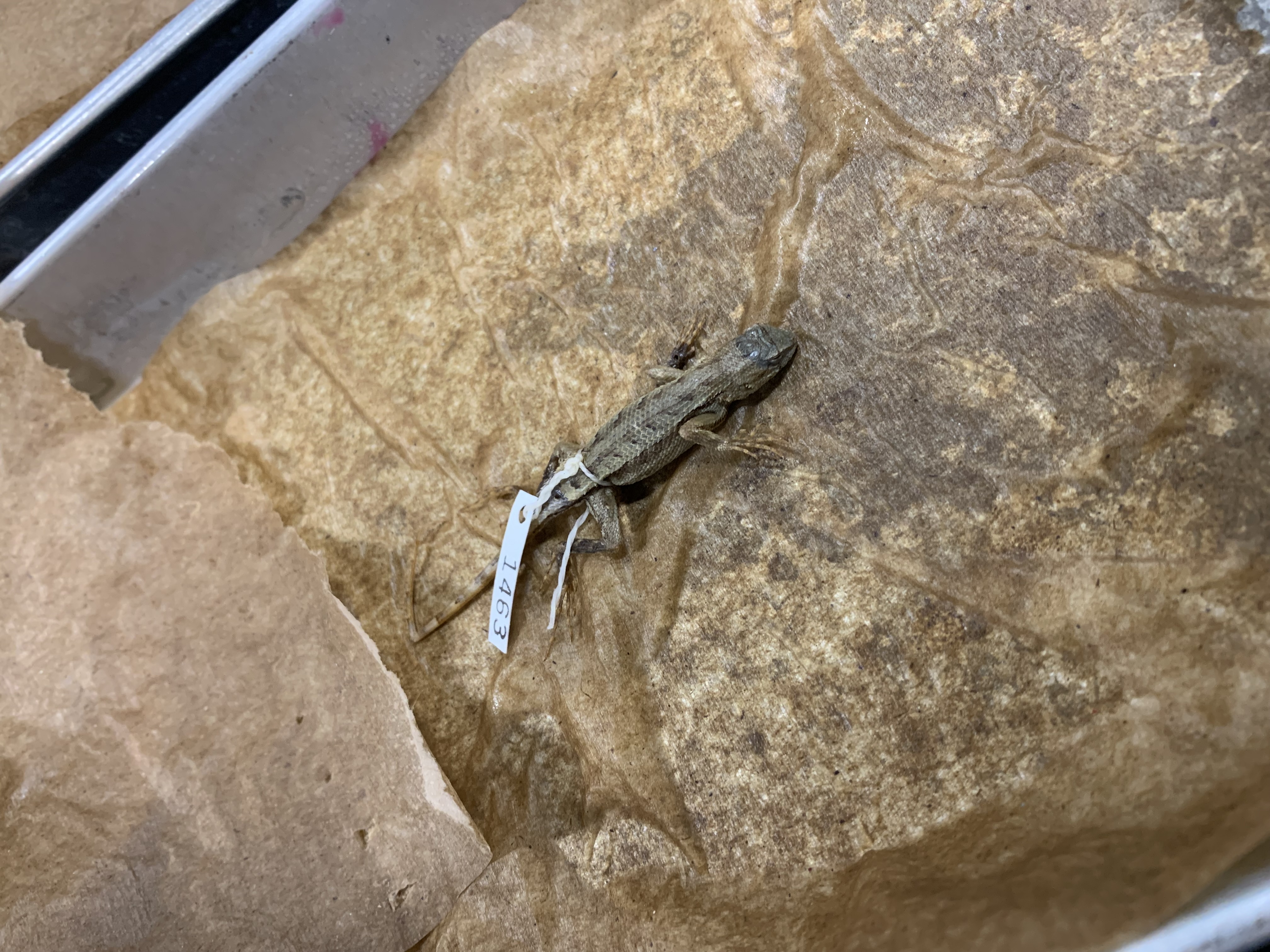
Sceloporus woodi
Florida scrub lizard
SCRUBS are WOODI
stockier, darker
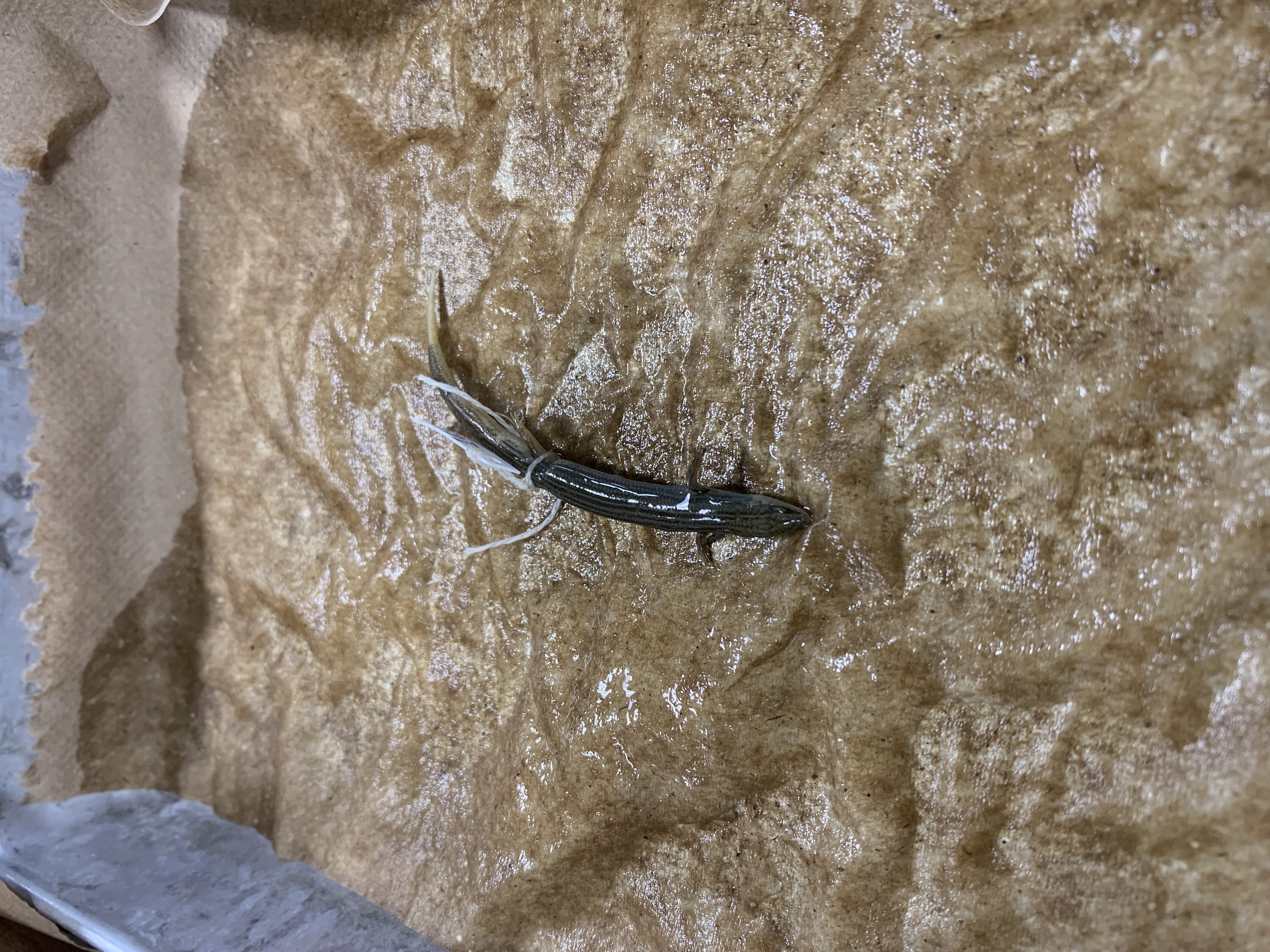
Plestiodon egregius
Mole skink
family Scincidae
habitat: burrowers that prefer loose, sandy soil to wriggle through dirt
size: 3.5-6 inches
THREATENED!
diet: seaside arthropods
slender body with long, light tipped tail and short legs
some have 1 lighter stripe across each side of body
blue tails fade to orange with age
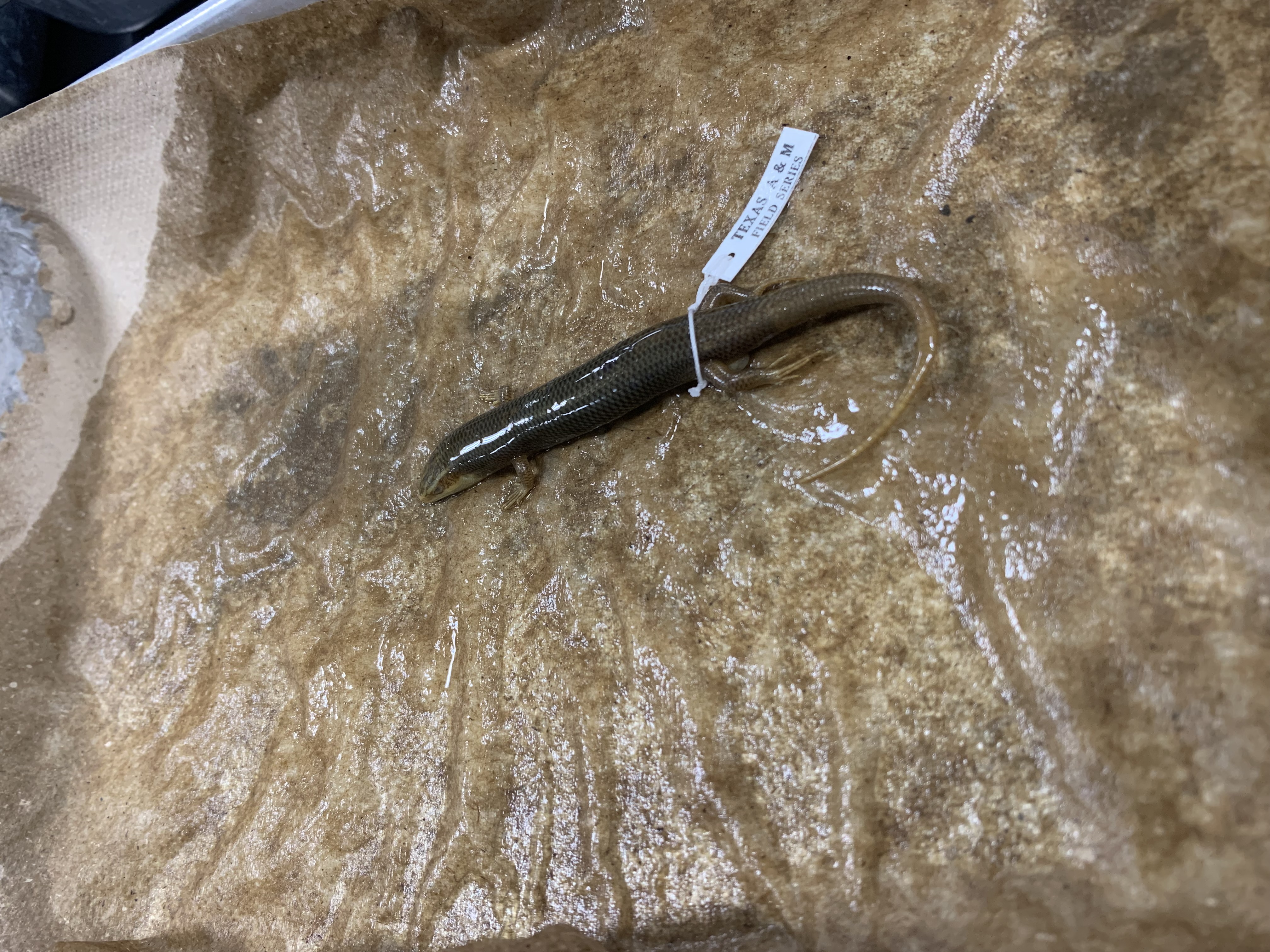
Plestiodon fasciatus
Common five-lined skink
family Scincidae
size: 5-8.5 inches
dark body with 5 white/yellow stripes on back
juveniles have bright blue tails
adult males lose stripes and have orange heads
habitat: mostly wooded areas with fallen trees/stumps, no coastal areas
blue tailed juveniles called “scorpions” due to myth they have stingers on tails
specimen: no stripes on body, light stripes on head, dark body with light tail tip
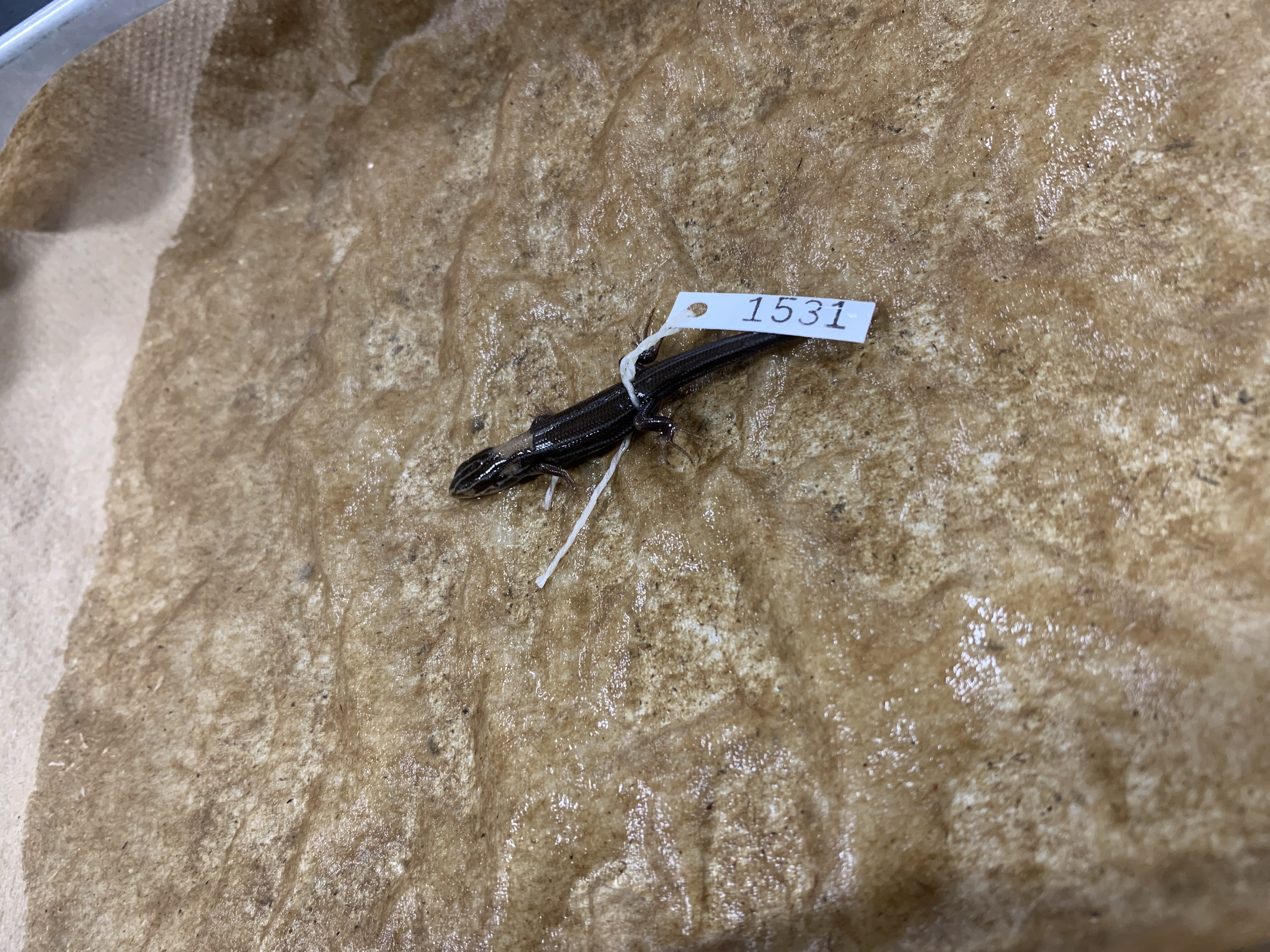
Plestiodon inexpectatus
Southeastern five-lined skink
resemble common five-lined skink but prefer drier enviros
blue tailed juveniles also called “scorpions” due to myth they have stingers on tails
habitat: trees
IS found on campus
no enlarged row of scales under tail
specimen:
extremely dark body with few thin light stripes
tail tip is same color as body
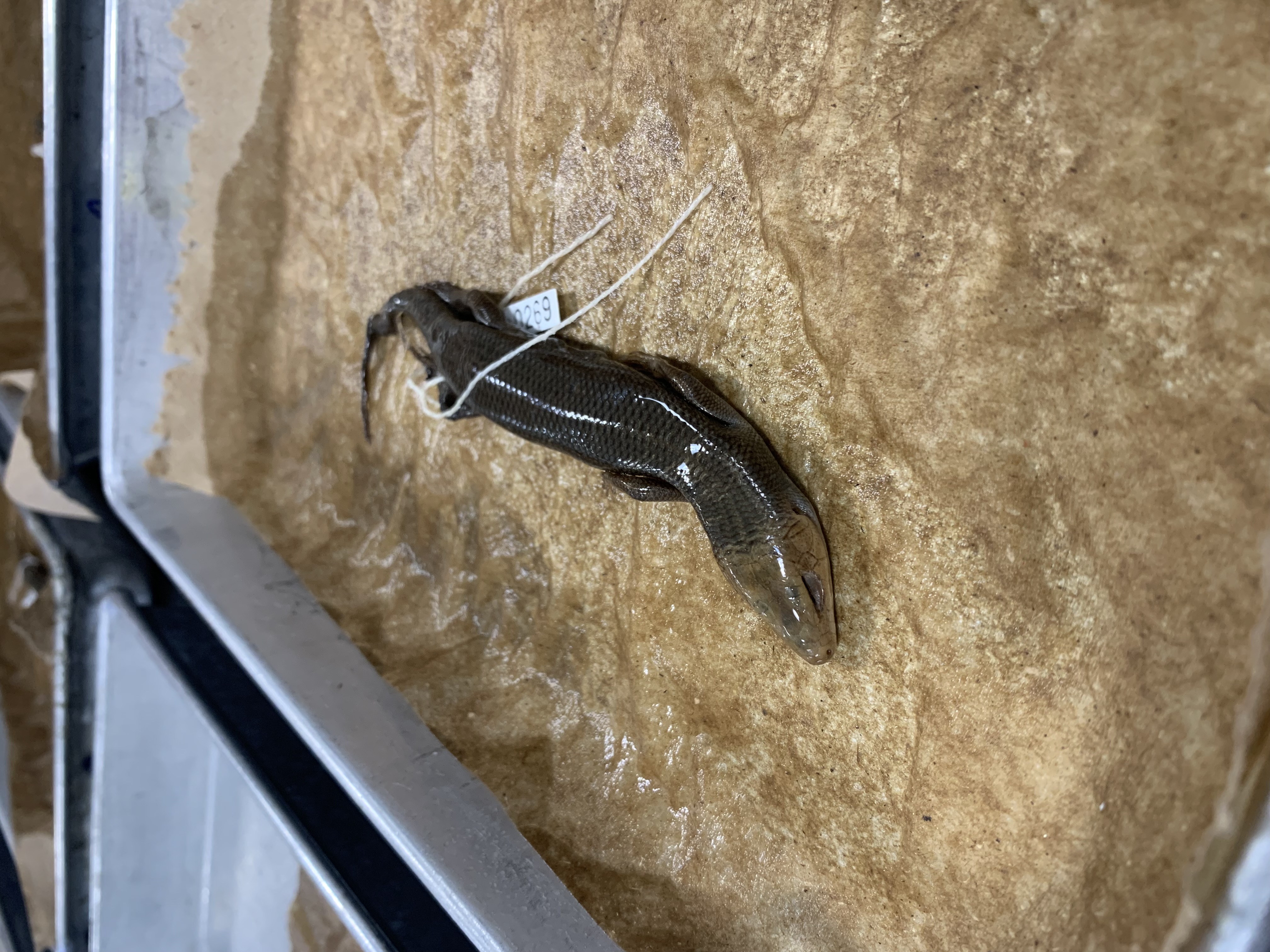
Plestiodon laticeps
Broadhead skink
he has BROAD LATS #gymbro
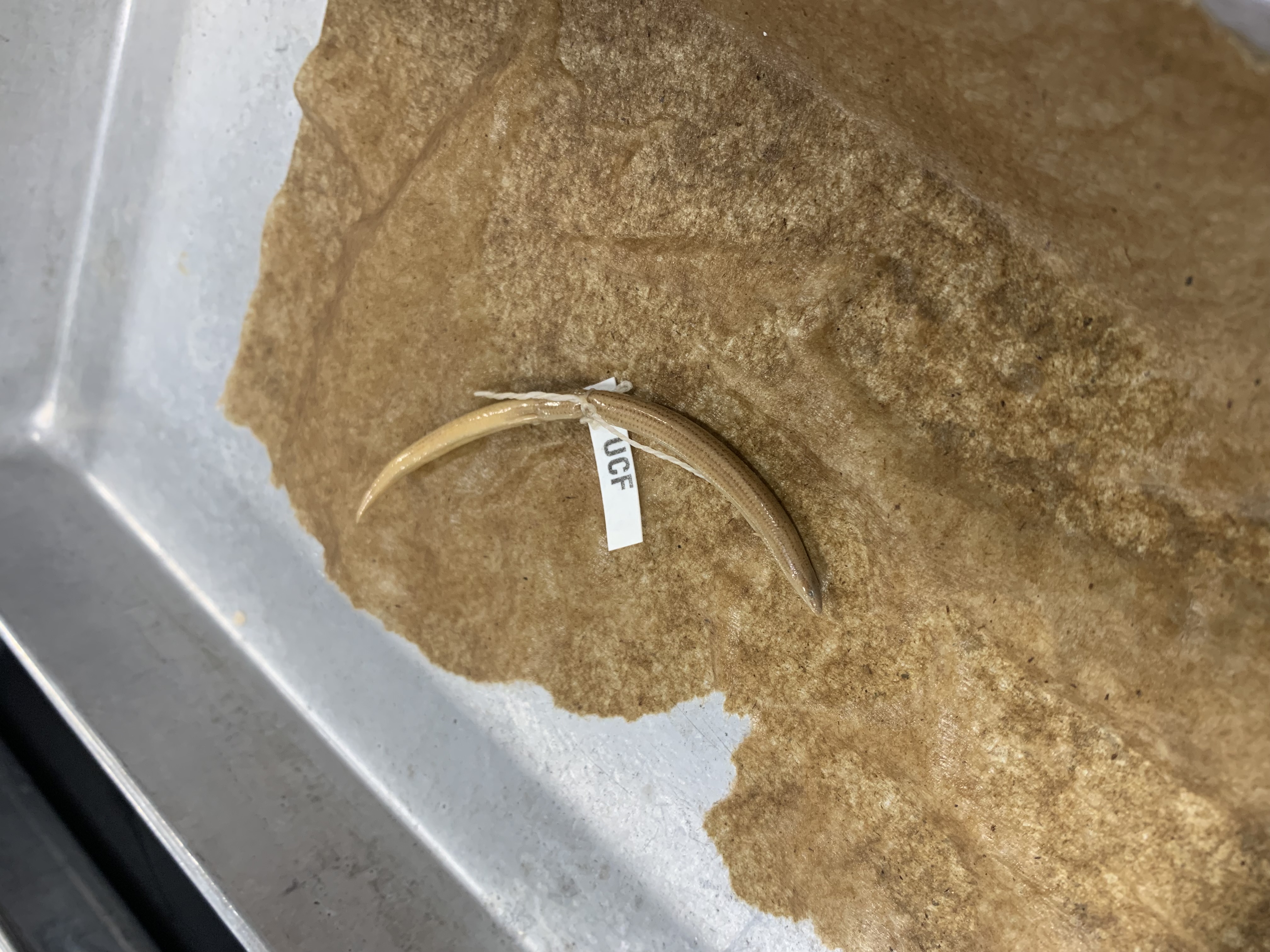
Plestiodon reynoldsi
Florida sand skink
his name is REYNOLD
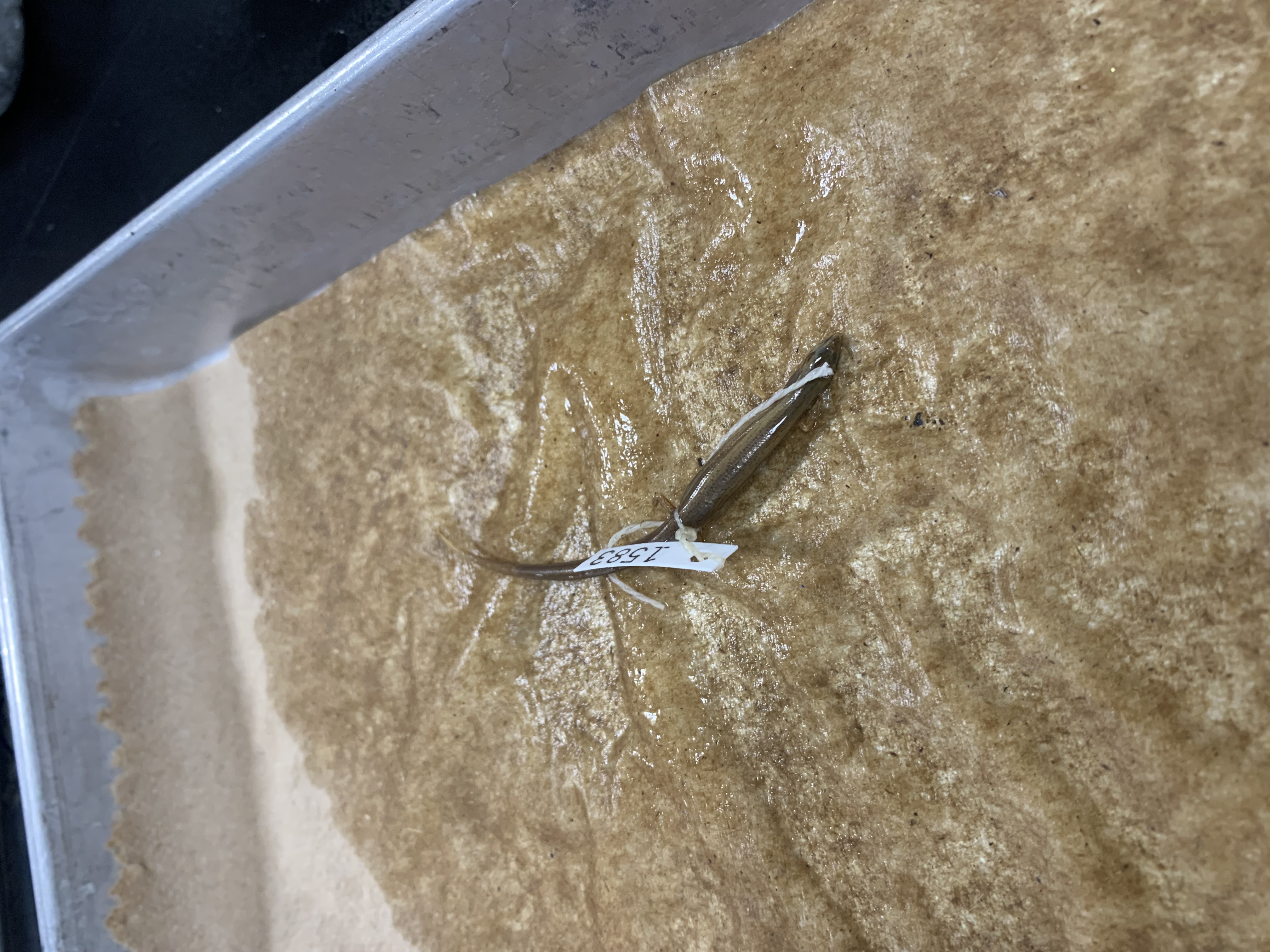
Scinella lateralis
Ground skink
he is LATERAL to the GROUND
Sphaerodactylus notatus
Florida reef gecko
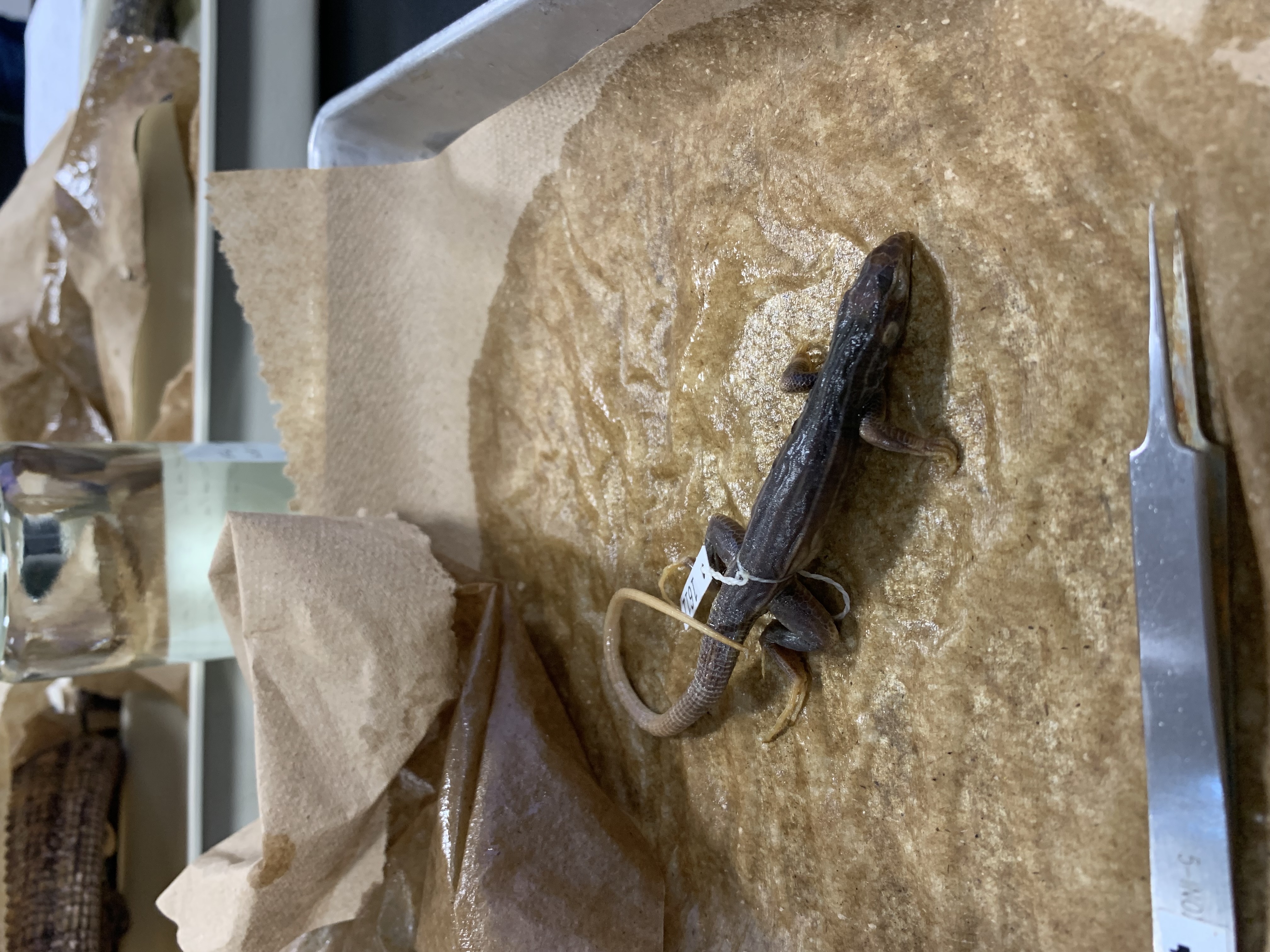
Aspidoscelis sexlineata
Six-lined racerunner
SEX is like SIX
family Teiidae, whiptail lizards
NATIVE, can be found throughout SE and central US
habitats: thrive in fire tolerant woodlands
found on campus
diet: primarily insectivores, known to eat small arthropods and mollusks
size: 6-9.5 inches with tail being nearly twice the length of body, males larger than females
brown, dark gray to black with 6 yellow or tan stripes running length of body, often mistaken for five-lined skink
skin is velvety rather than shiny
adult males have bluish underside, females and juveniles have whitish underside
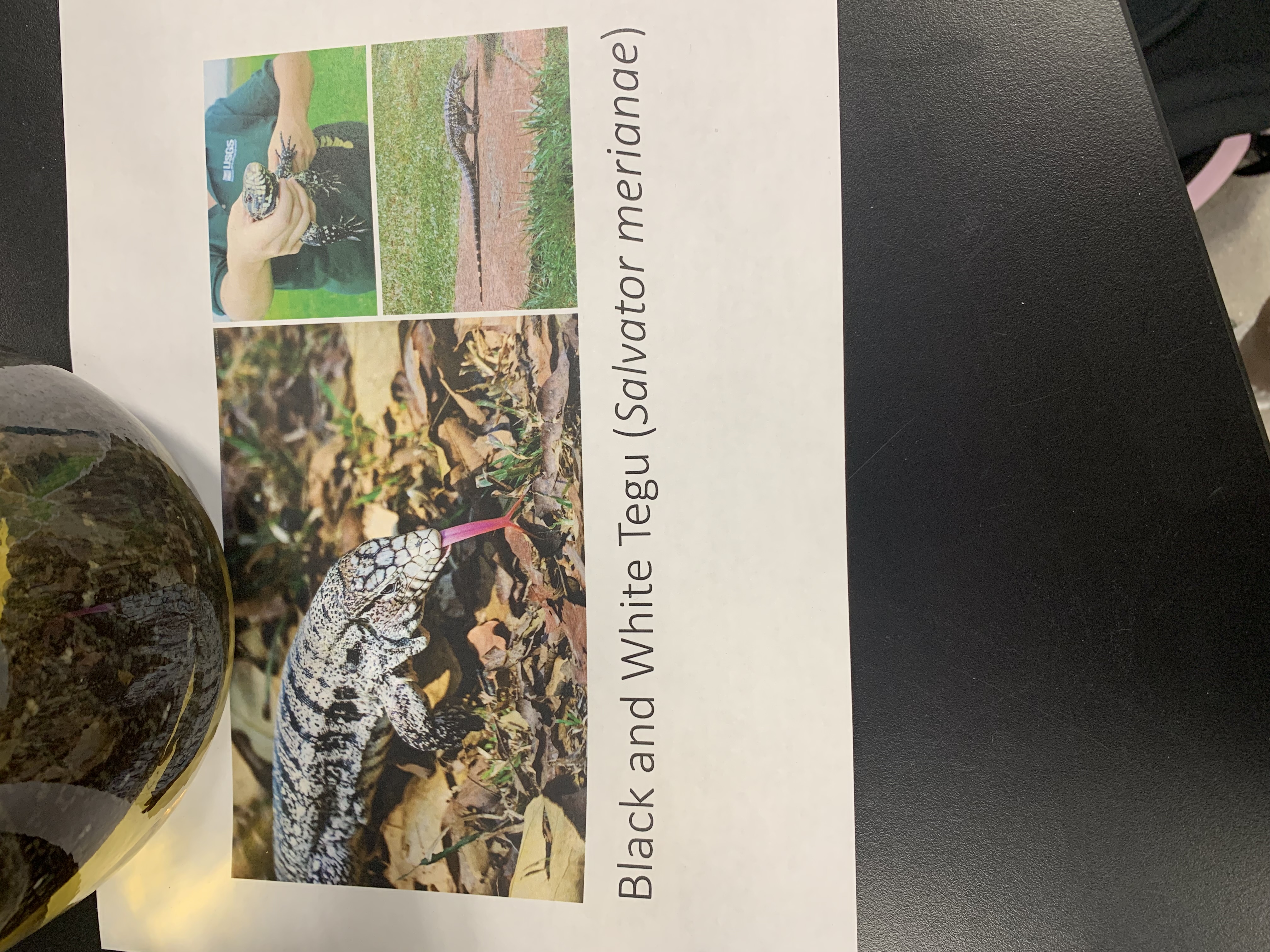
Salvator merianeae
Argentine black and white tegu
family Teiidae, whiptail lizards
INVASIVE, native to S America and can be found in Brazil, Paraguay, Uruguay, and Argentina
habitat: dryer upland and agricultural areas, vegetated areas along canals
NOT found on campus, yet
diet: omnivorous, opportunistic predators, also eat carrion (carcass), threat to imperiled species such as gopher tortoise because they eat eggs and small tortoises
size: males 4.5 ft, females 3 ft
mottled black and white coloration arranged in thick banded pattern across back and tail, fewer solid bands indicate older tegu
hatchlings have emerald green colored heads that fade within a few months
young tegus have yellow and black banded tails
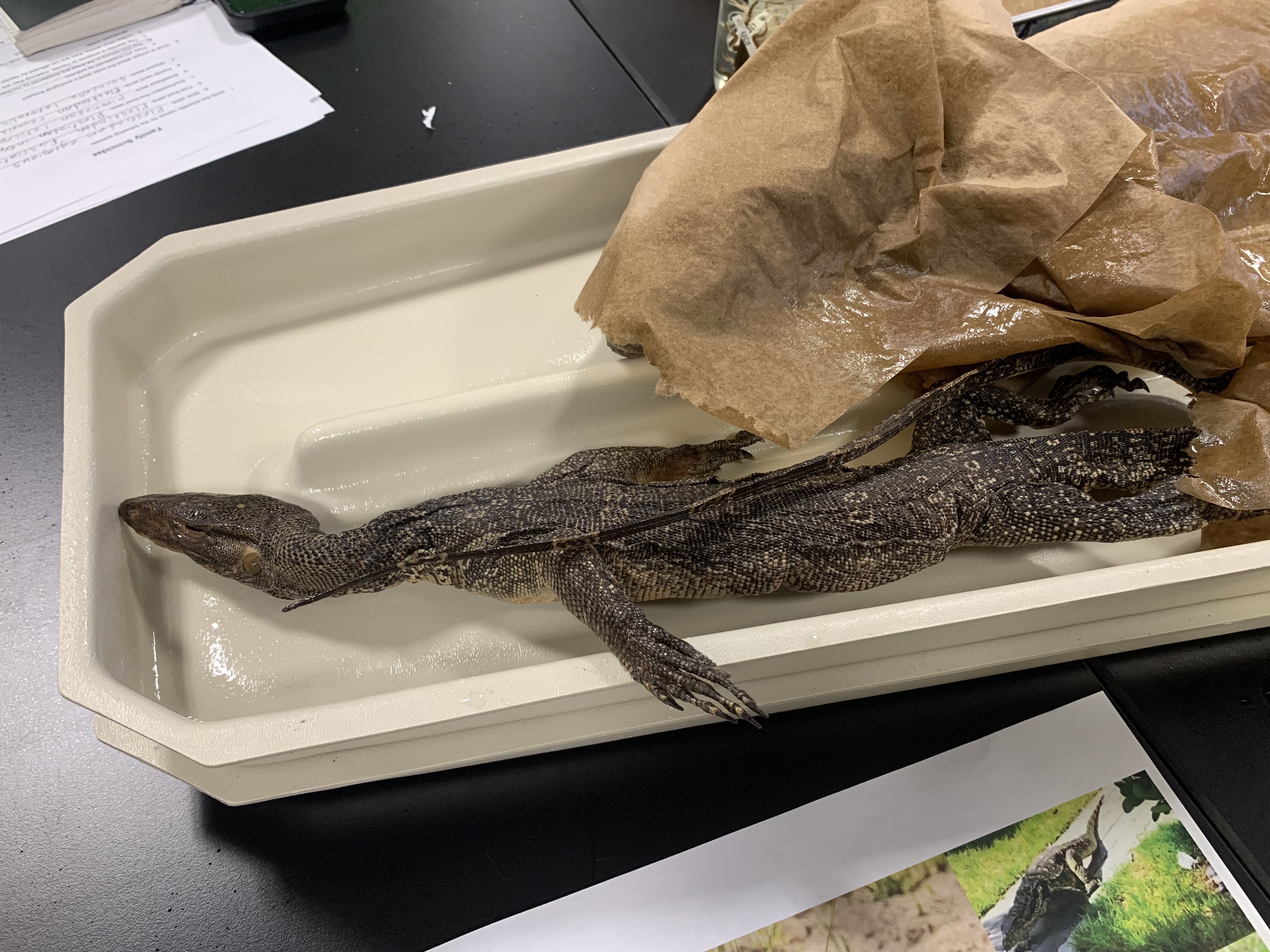
Varanus niloticus
Nile monitor
family Varanidae, monitors
INVASIVE, native to sub-saharan Africa and nile river
NOT found on campus
diet: generalist feeders that hint on and below ground, in trees, in fresh and saltwater
size: 5-7 ft
olive to green to black
v shaped stripes beginning at skull into banded pattern along back
large yellow/green rosette like spots on back form banded pattern
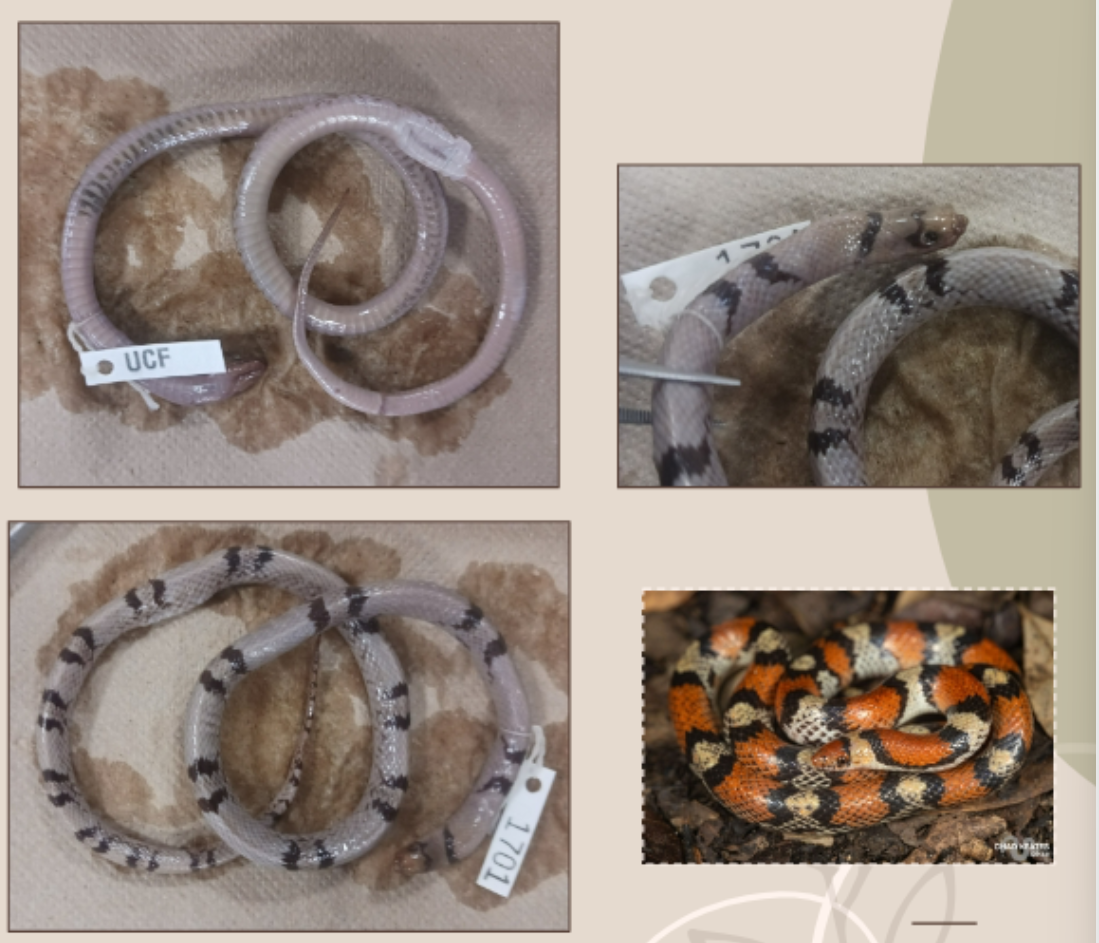
Cemophora coccinea
Scarlet snake
family Colubridae
oviparous
mostly harmless to humans
19 species in FL
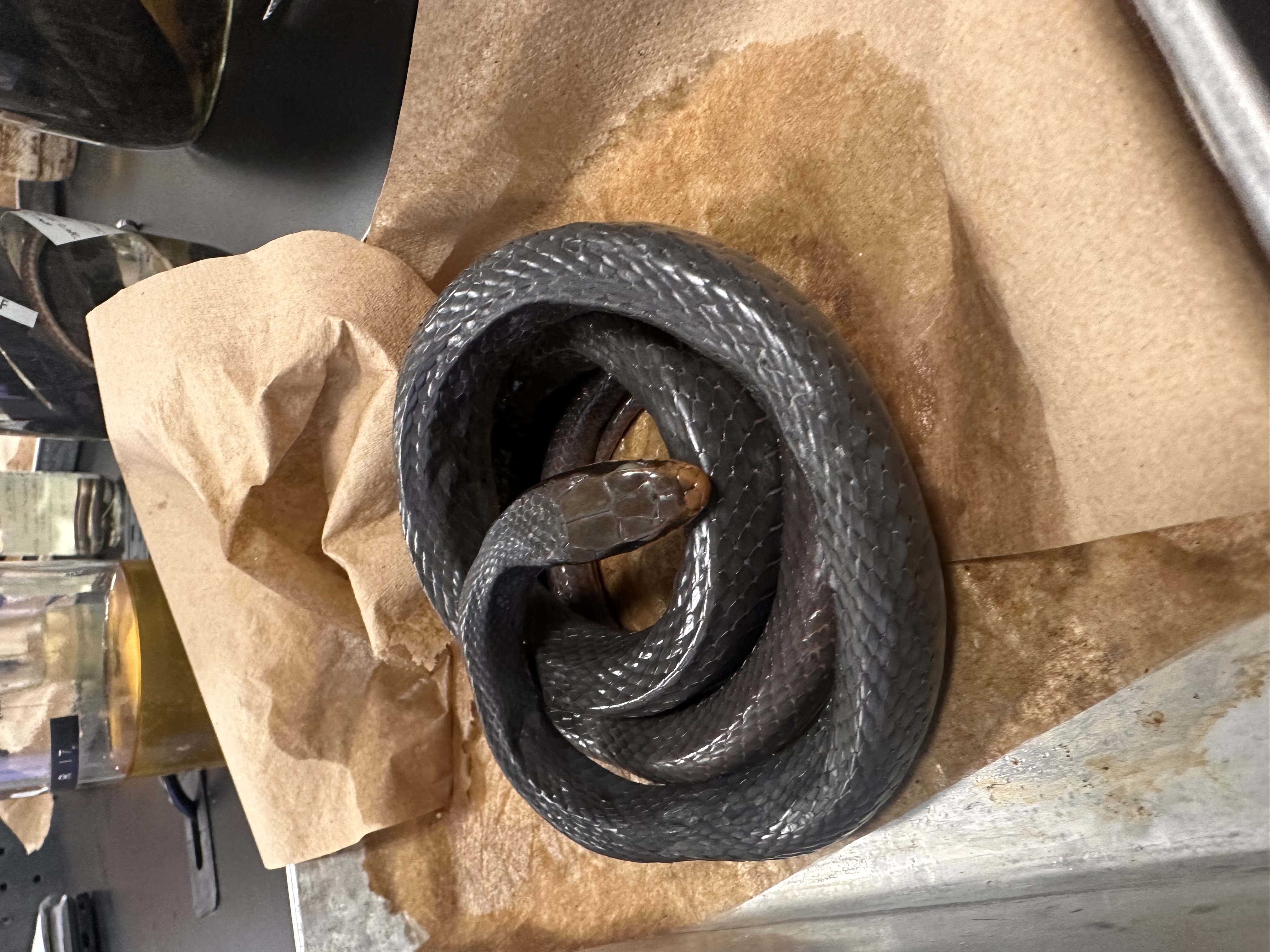
Coluber constrictor
Eastern racer
family Colubridae
oviparous
mostly harmless to humans
19 species in FL
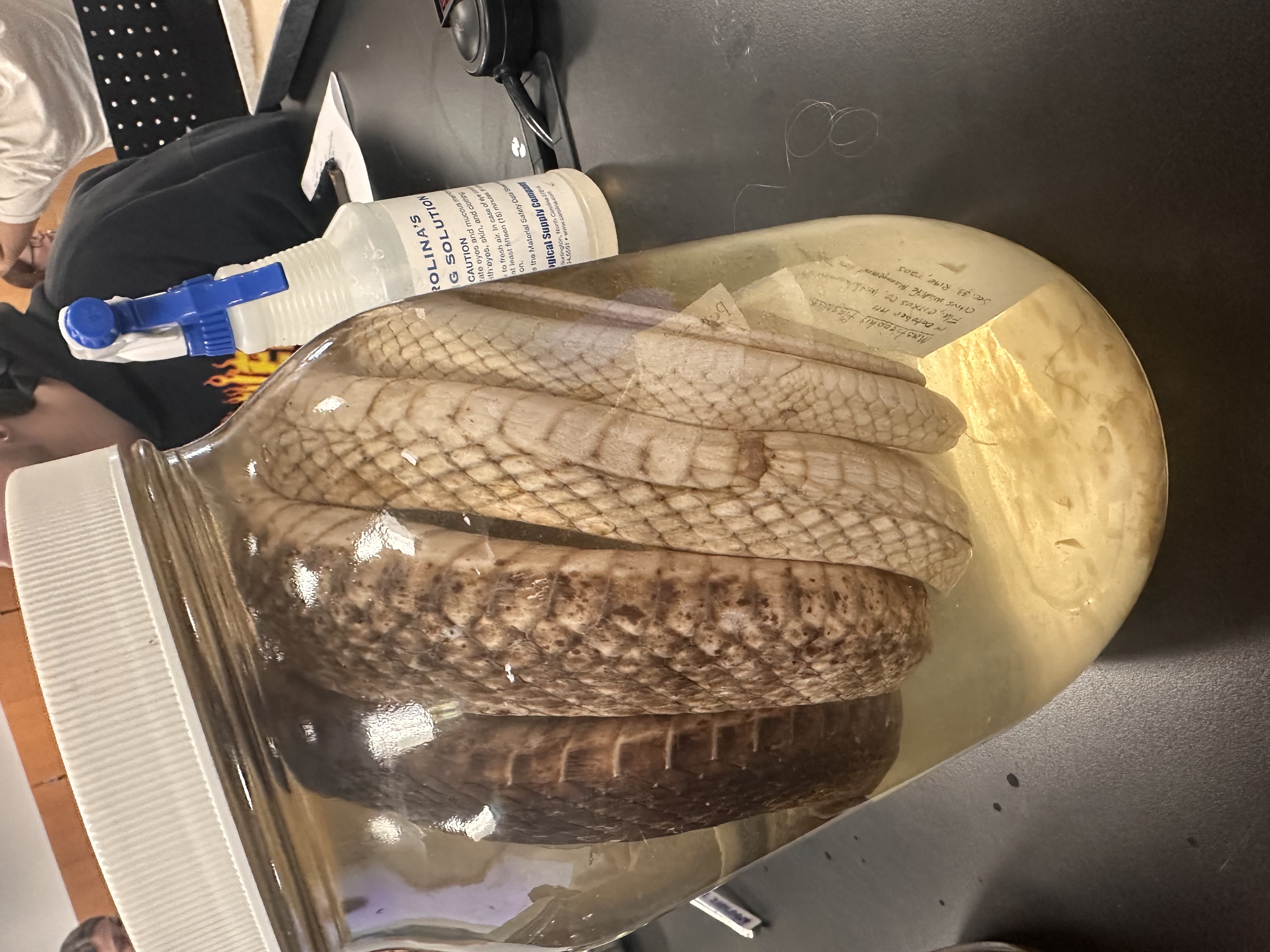
Coluber flagellum
Eastern coachwhip
family Colubridae
oviparous
mostly harmless to humans
19 species in FL
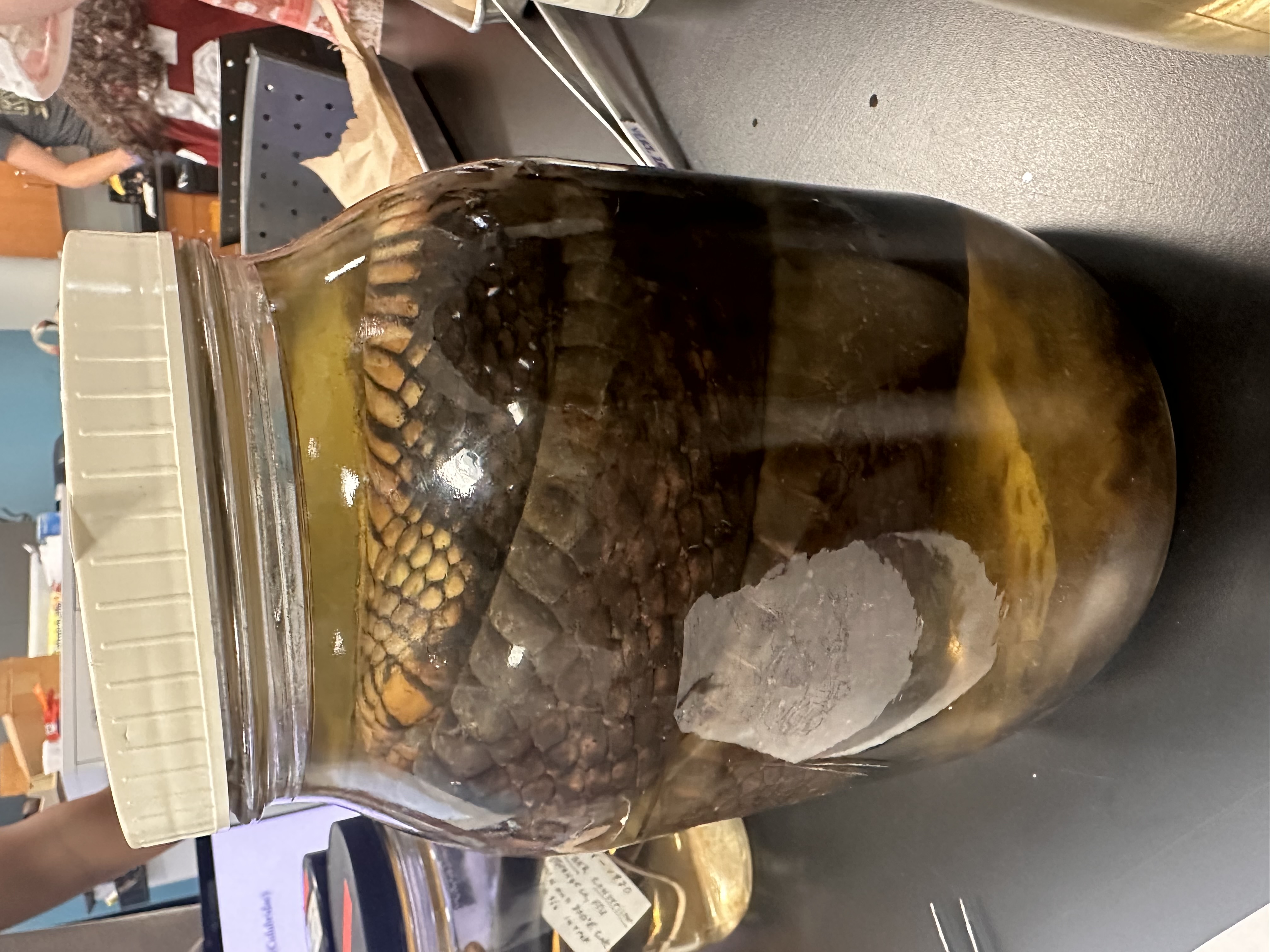
Drymarchon couperi
Eastern indigo snake
family Colubridae
oviparous
mostly harmless to humans
19 species in FL
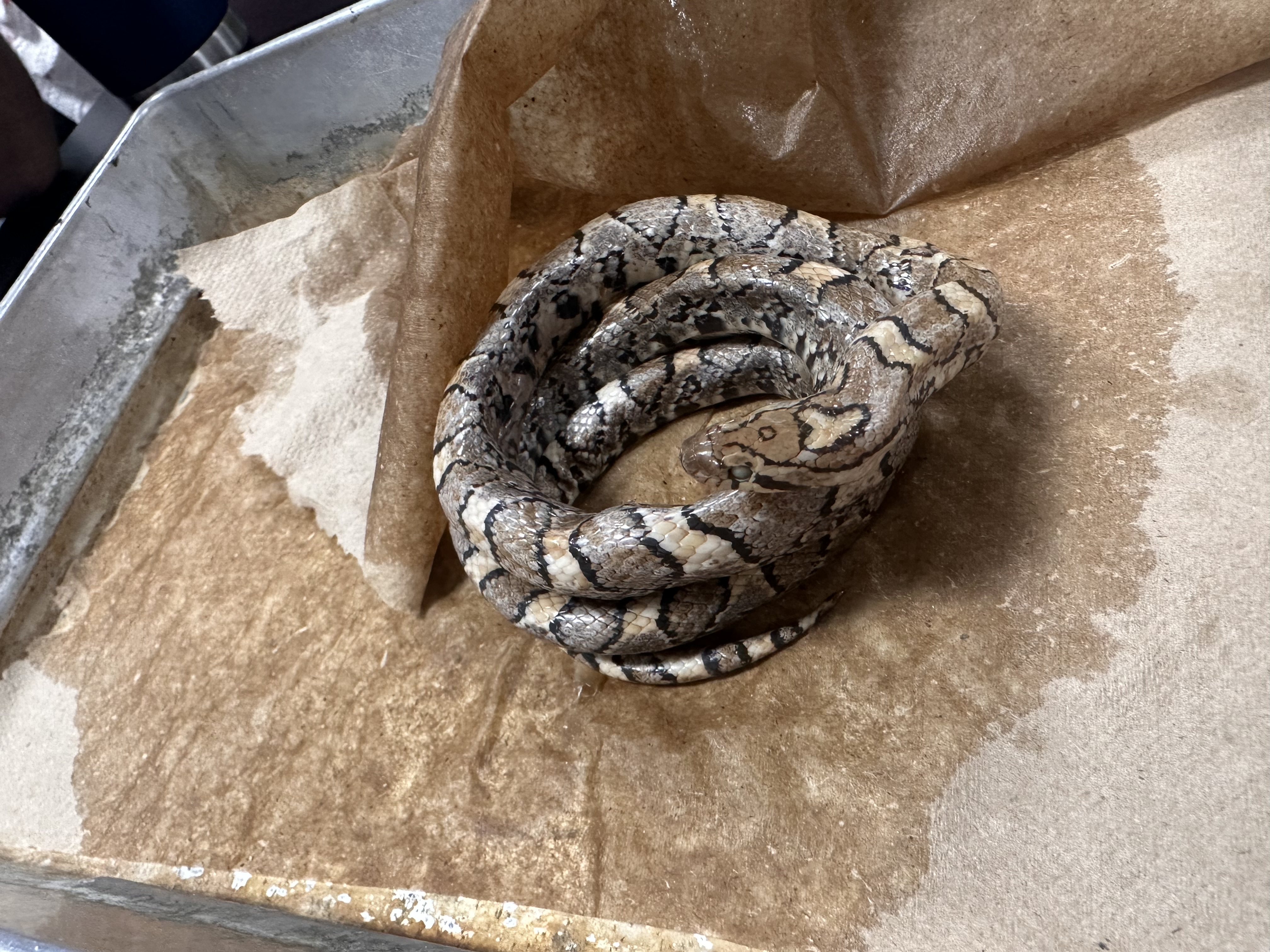
Lampropeltis calligaster
Mole kingsnake
family Colubridae
oviparous
mostly harmless to humans
19 species in FL

Lampropeltis elapsoides
Scarlet kingsnake
family Colubridae
oviparous
mostly harmless to humans
19 species in FL
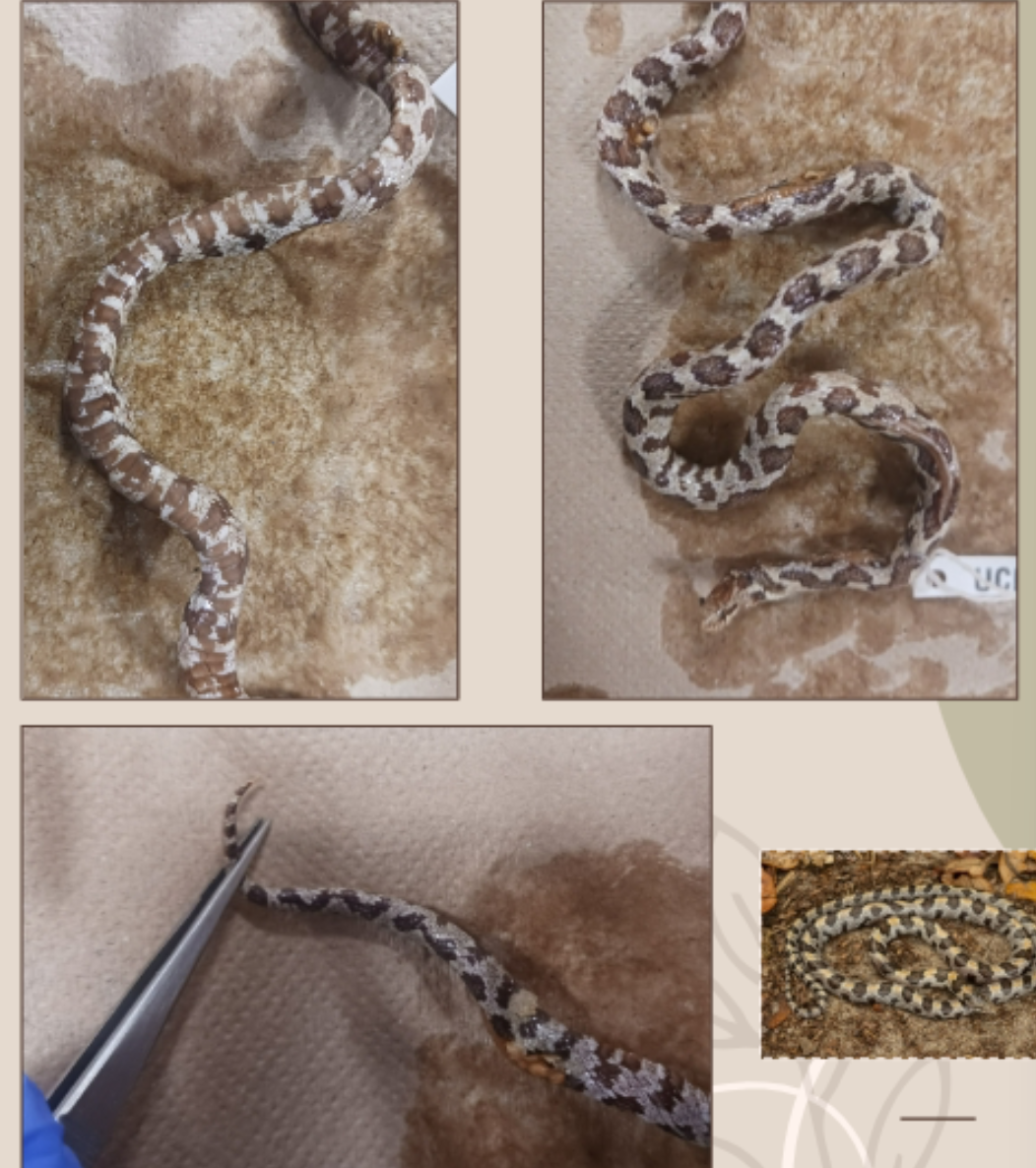
Lampropeltis extenuata
Short-tailed kingsnake
family Colubridae
oviparous
mostly harmless to humans
19 species in FL

Lampropeltis getula
Common kingsnake
family Colubridae
oviparous
mostly harmless to humans
19 species in FL
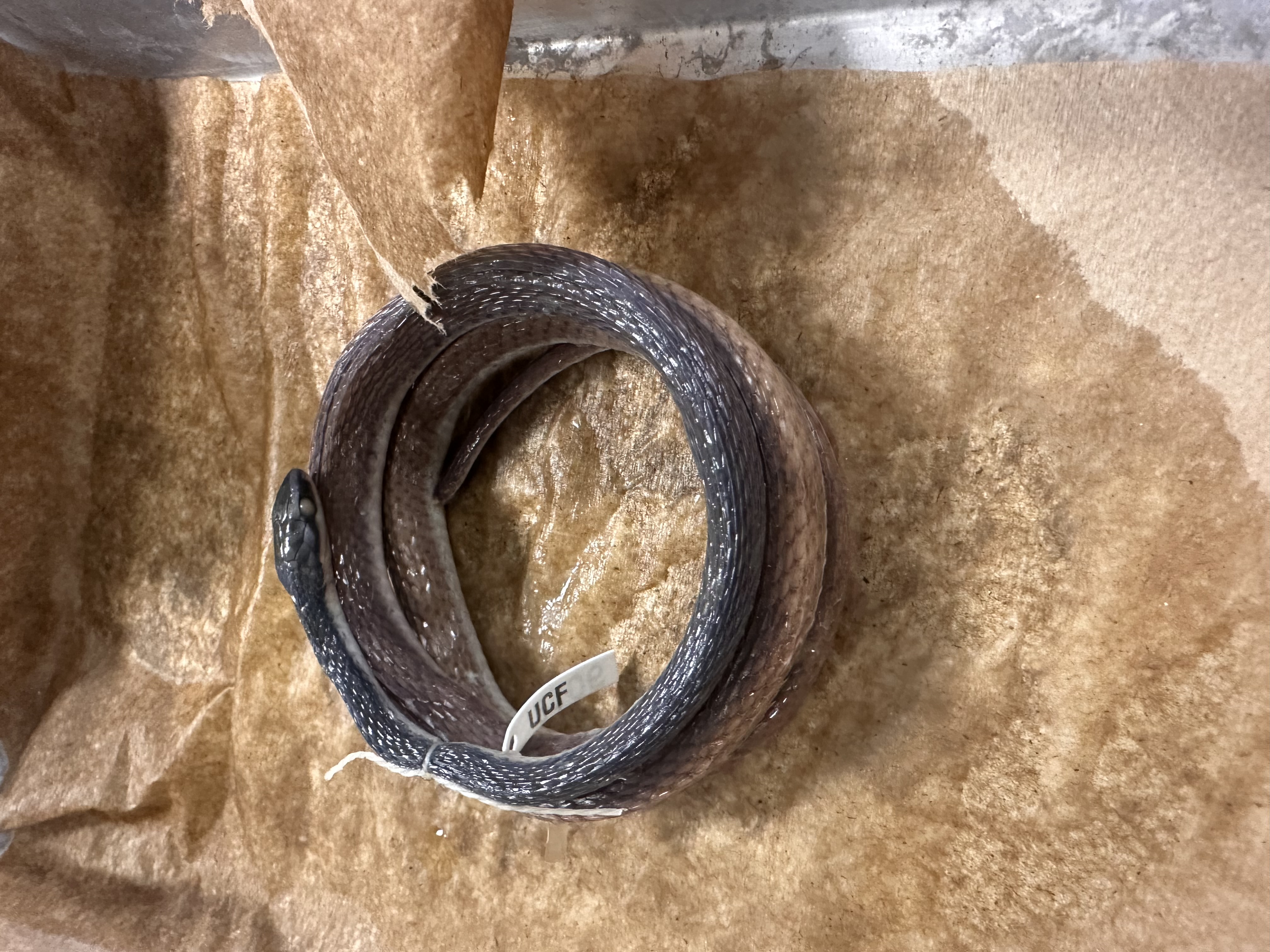
Opheodrys aestivus
Rough green snake
family Colubridae
oviparous
mostly harmless to humans
19 species in FL

Pantherophis alleghaniensis
Eastern ratsnake
family Colubridae
oviparous
mostly harmless to humans
19 species in FL
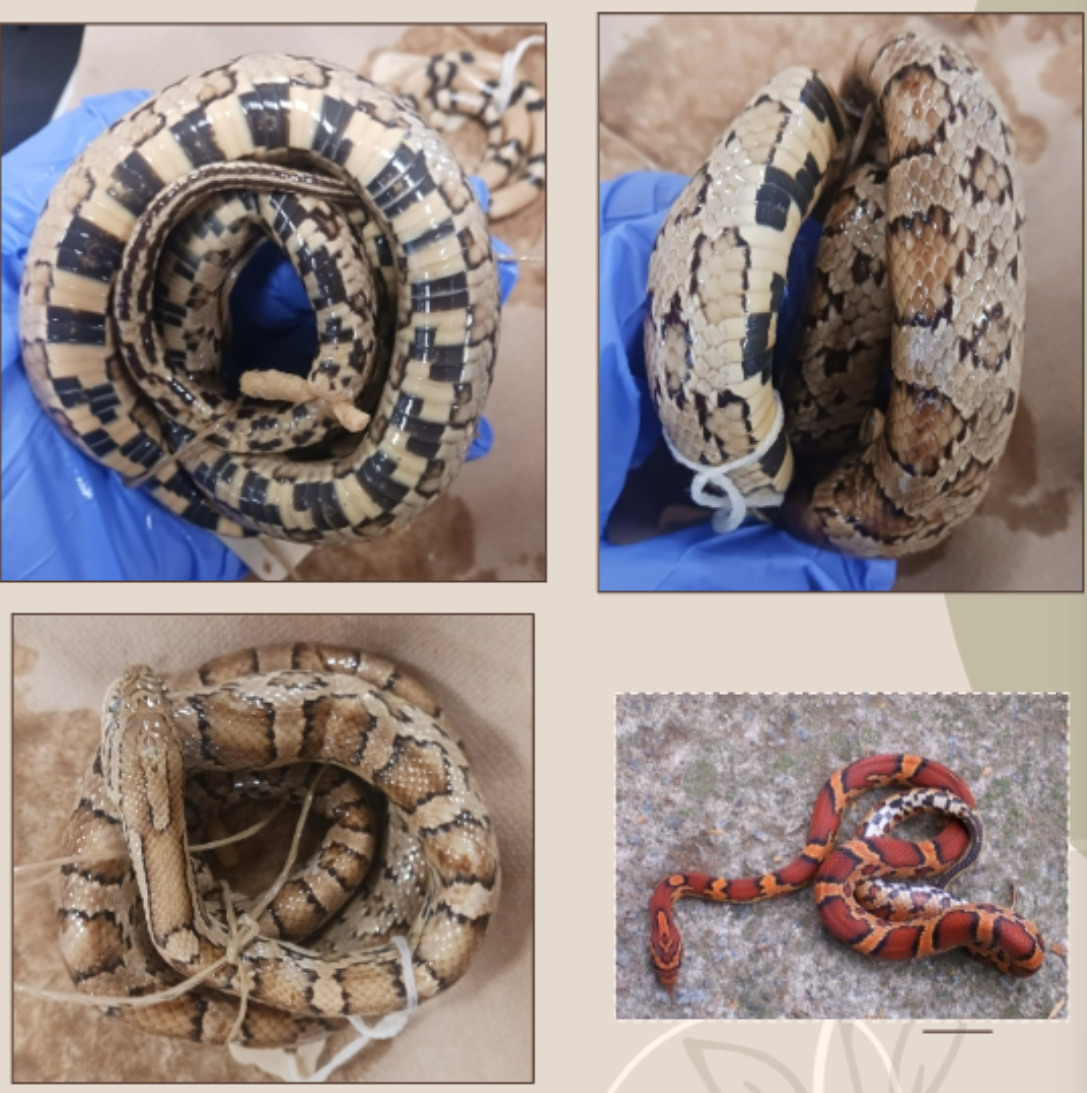
Pantherophis guttatus
Eastern corn snake
he is also GLUTTANOUS for CORN
family Colubridae
oviparous
mostly harmless to humans
19 species in FL
Pantherophis spiloides
Gray rat snake
family Colubridae
oviparous
mostly harmless to humans
19 species in FL
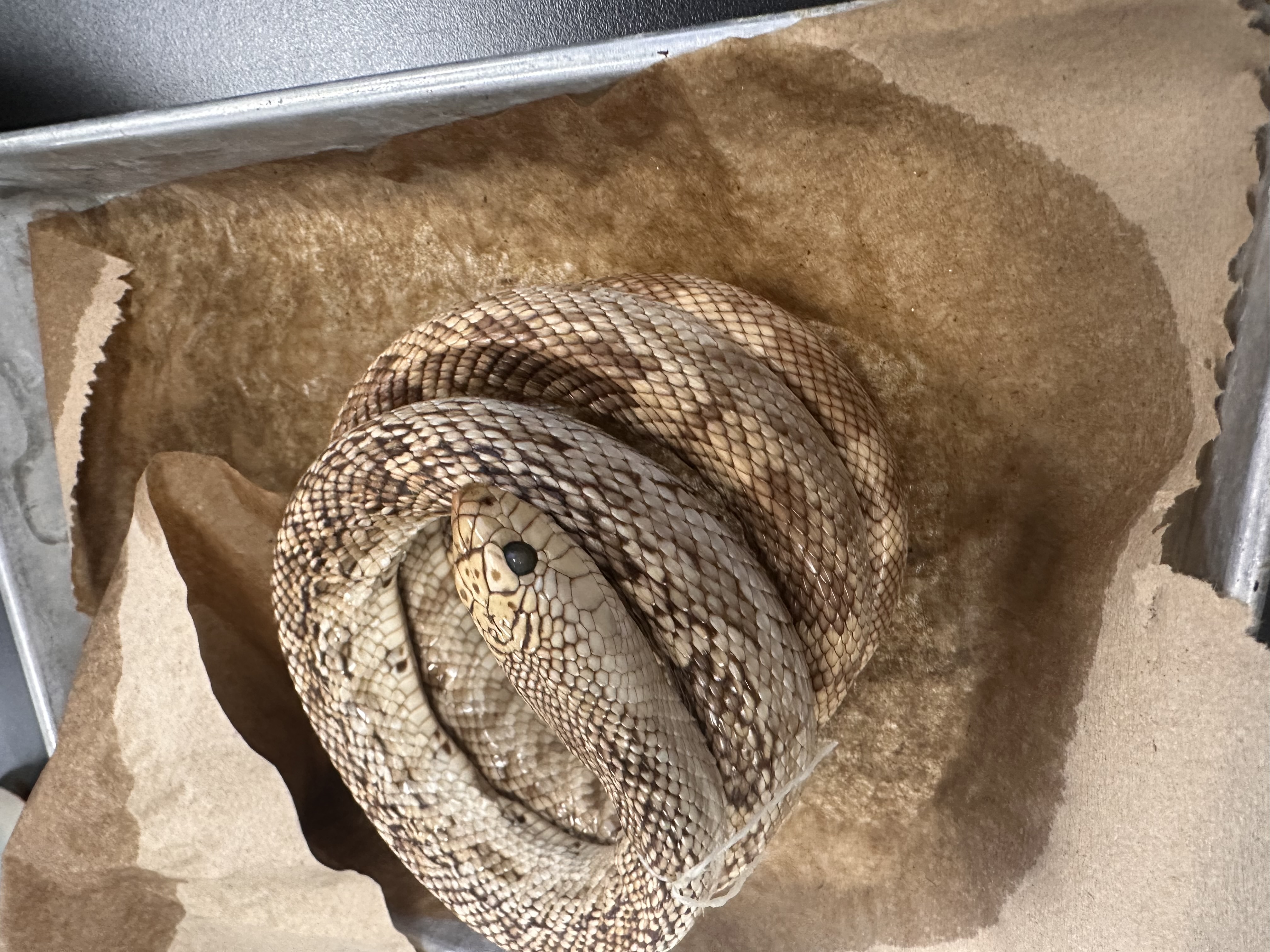
Pituophis melanoleucus
Pine snake
family Colubridae
oviparous
mostly harmless to humans
19 species in FL
Tantilla coronata
Southeastern crowned snake
he was CORRINATED with a CROWN
family Colubridae
oviparous
mostly harmless to humans
19 species in FL
Tantilla oolitica
Rim rock crowned snake
family Colubridae
oviparous
mostly harmless to humans
19 species in FL
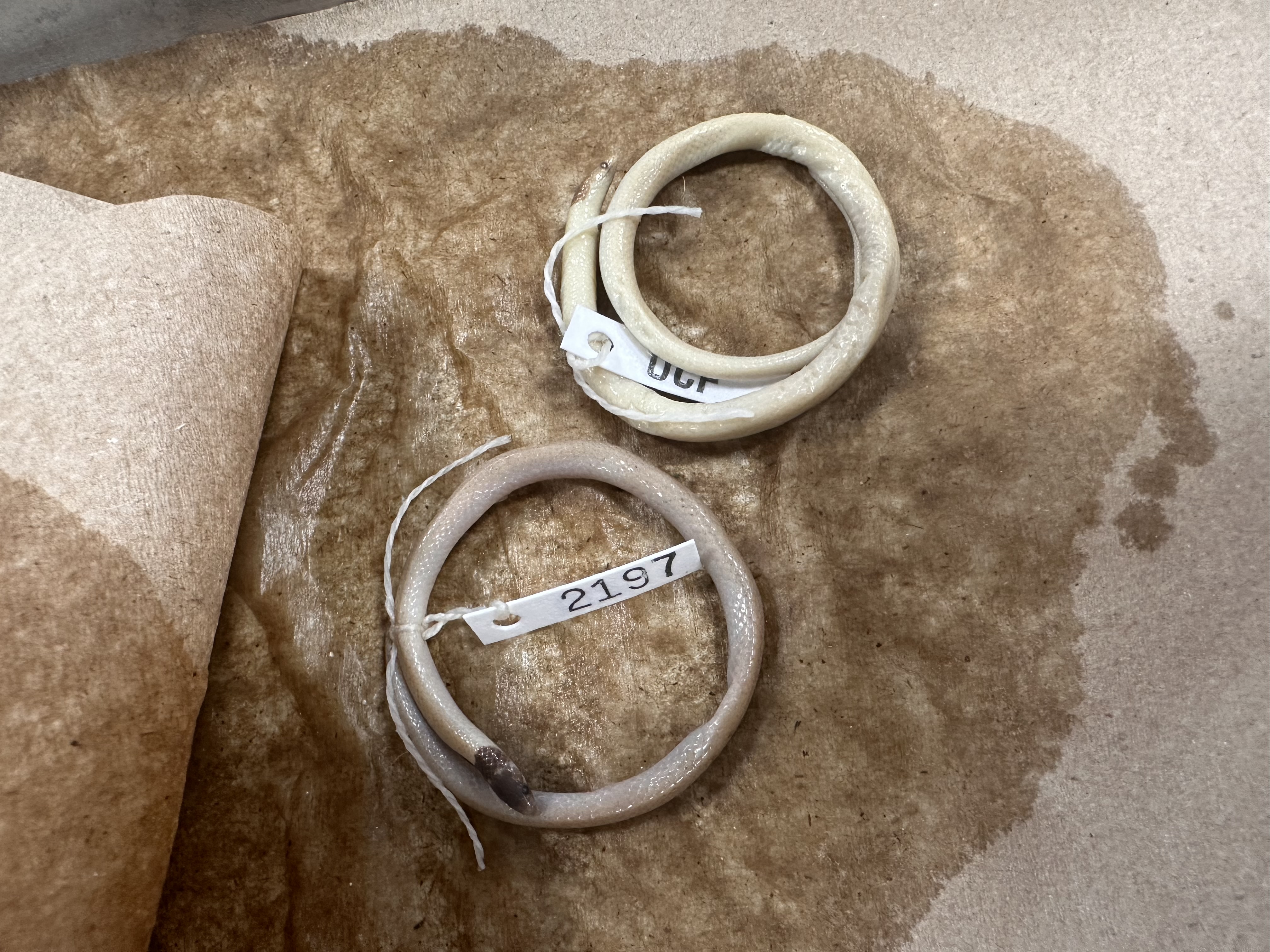
Tantilla relicta
Florida crowned snake
he wears a crown
family Colubridae
oviparous
mostly harmless to humans
19 species in FL

Diadophis punctatus
Ringneck snake
family Dipsadidae
6 species in FL
enlarged, sometimes grooved teeth toward back of jaw
most oviparous
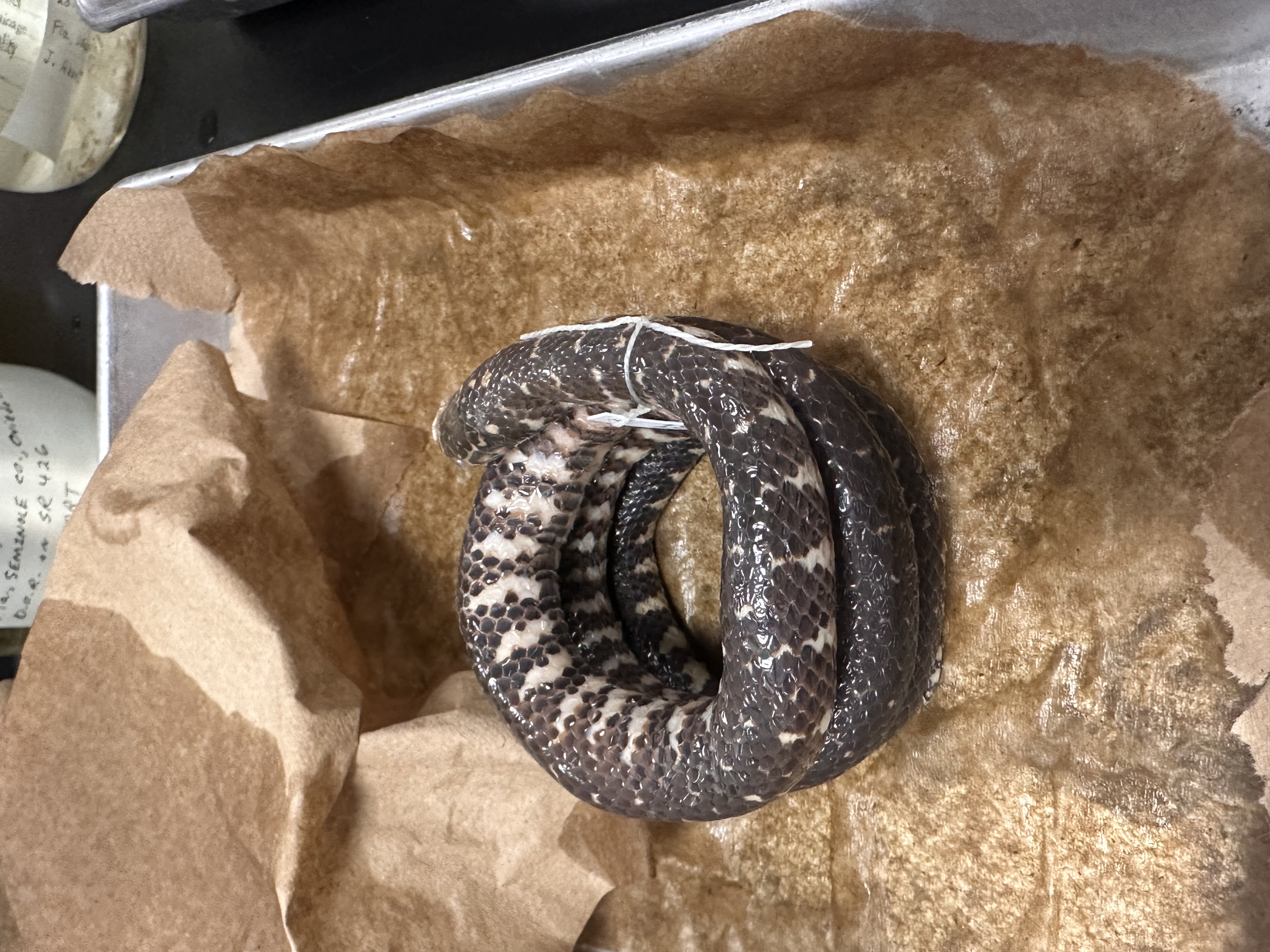
Farancia abacura
Mud snake
family Dipsadidae
6 species in FL
enlarged, sometimes grooved teeth toward back of jaw
most oviparous
Farancia erytrogramma
Rainbow snake
family Dipsadidae
6 species in FL
enlarged, sometimes grooved teeth toward back of jaw
most oviparous
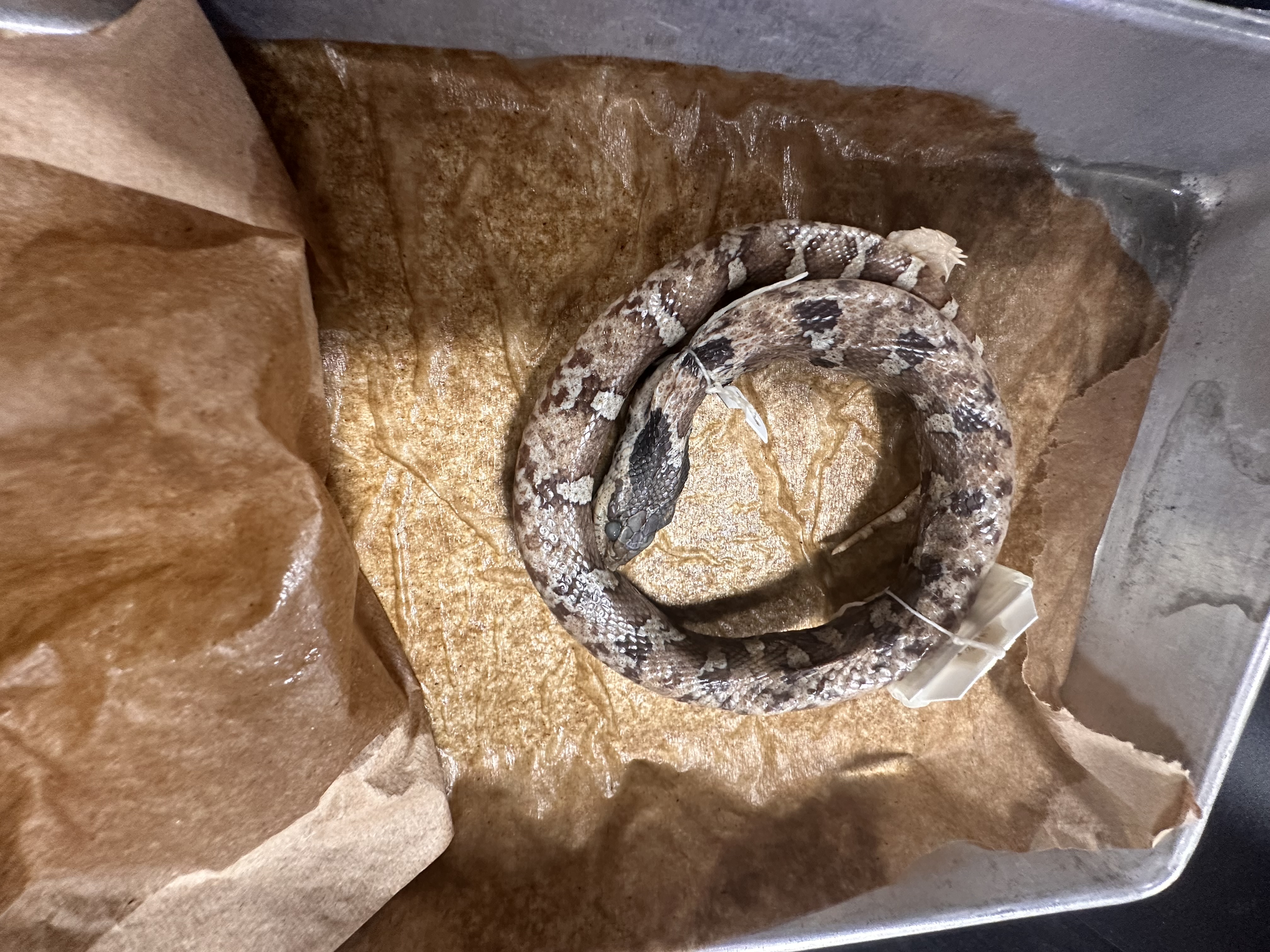
Heterodon platirhinos
Eastern hognose snake
family Dipsadidae
6 species in FL
enlarged, sometimes grooved teeth toward back of jaw
most oviparous
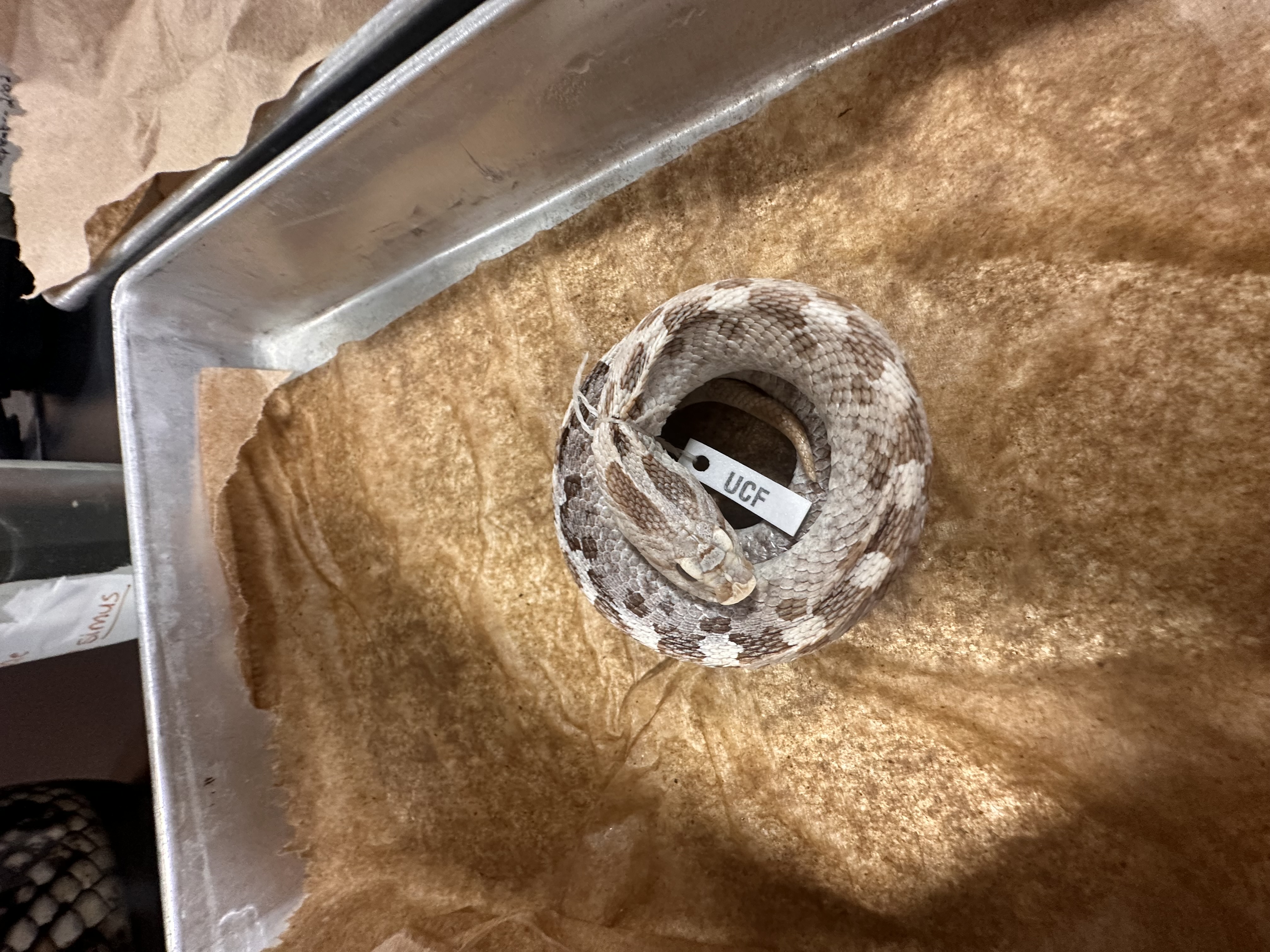
Heterodon simus
Southern hognose snake
SOUTHERNERS have lots of SINUS issues
family Dipsadidae
6 species in FL
enlarged, sometimes grooved teeth toward back of jaw
most oviparous

Rhadinaea flavilata
Pine woods snake
family Dipsadidae
6 species in FL
enlarged, sometimes grooved teeth toward back of jaw
most oviparous

Micrurus fulvius
Eastern coral snake
family Elapidae
venomous, envenomation causes rapid paralysis and respiratory failure
fixed front fangs (proteroglyphous dentition)
slender body
oviparous (some ovoviviparous)
warning coloration
crepuscular (active primarily during night)
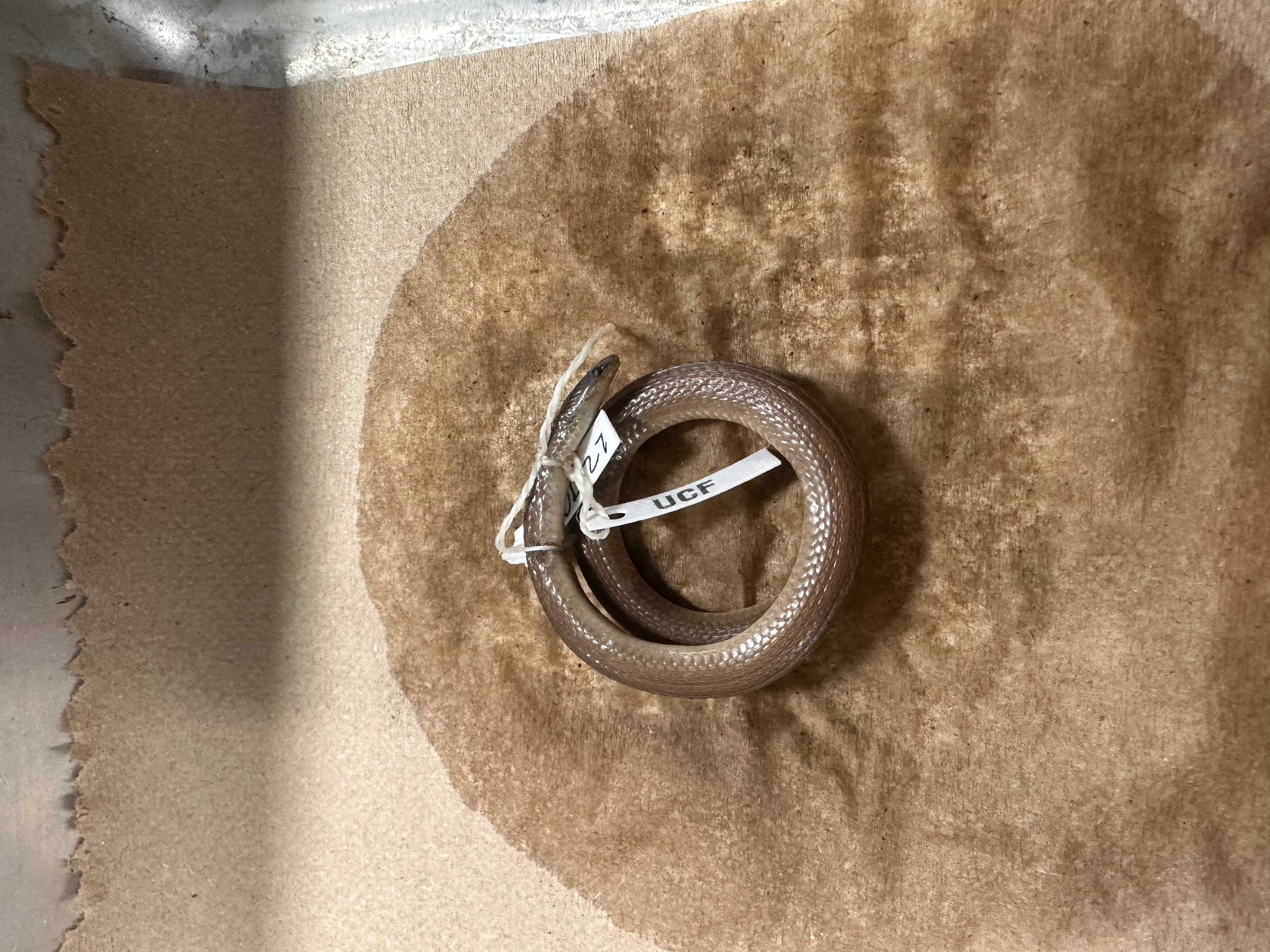
Haldea striatula
Rough earth snake
family Natricidae
19 species in FL
formerly placed in Colubridae
keeled scales
aquatic, semi aquatic
most ovoviviparous (producing young by means of eggs which are hatched within the body of the parent)

Liodytes alleni
Striped crayfish snake
family Natricidae
semi aquatic snakes
viviparous- give live birth
19 species in FL
formerly placed in Colubridae
keeled scales
Liodytes genus are nocturnal foragers and very secretive
typically smaller and locally abundant, cryptic species
iridescent sheen when wet
head not much wider than neck
eyes on side of head
dark brown to olive color with smooth scales, prominent dorsolateral stripe that breaks up cream colored underbelly
IS found on campus

Liodytes pygaea
Swamp snake
family Natricidae
19 species in FL
formerly placed in Colubridae
keeled scales
aquatic, semi aquatic
most ovoviviparous (producing young by means of eggs which are hatched within the body of the parent)
Liodytes genus are nocturnal foragers and very secretive
typically smaller and locally abundant, cryptic species
IS found on campus
underbelly is vibrant red w some black markings often displayed as defense mechanism
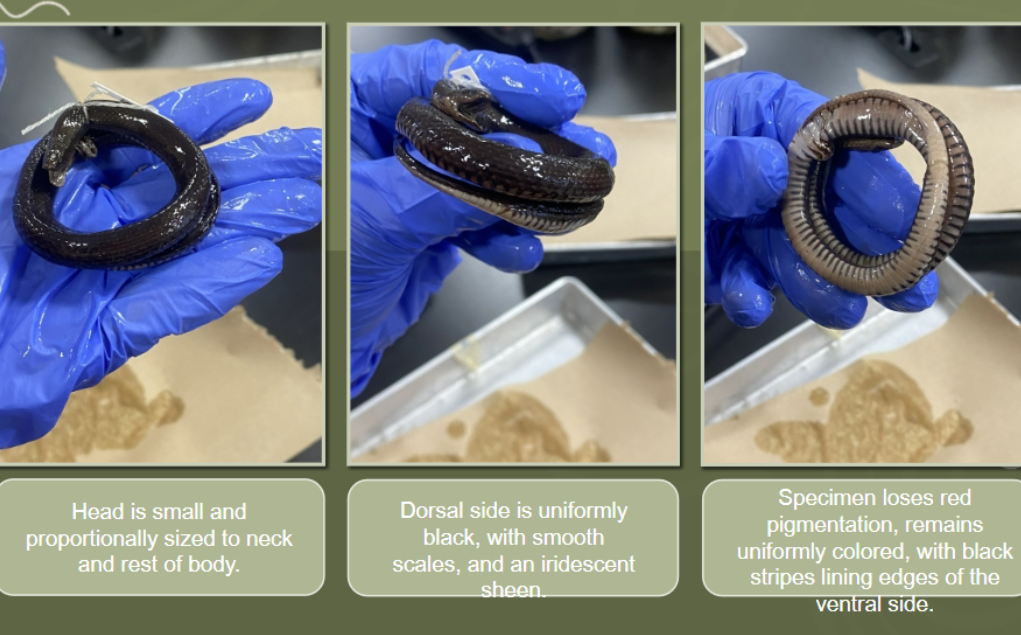
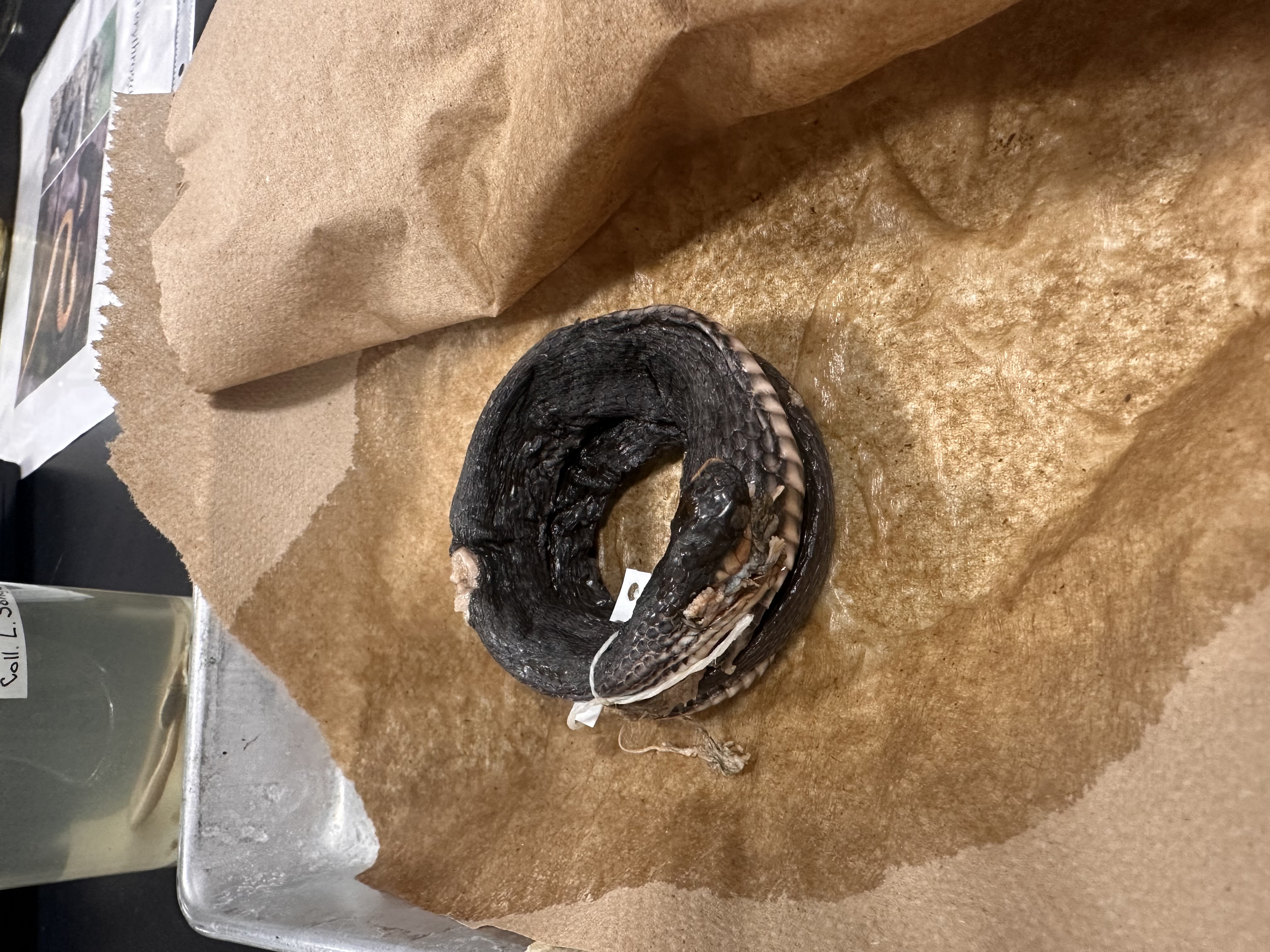
Liodytes rigida
Glossy crayfish snake
he doesn’t have RIDGES since he is GLOSSY
family Natricidae
19 species in FL
formerly placed in Colubridae
keeled scales
aquatic, semi aquatic
most ovoviviparous (producing young by means of eggs which are hatched within the body of the parent)
Liodytes genus are nocturnal foragers and very secretive
typically smaller and locally abundant, cryptic species
IS found on campus
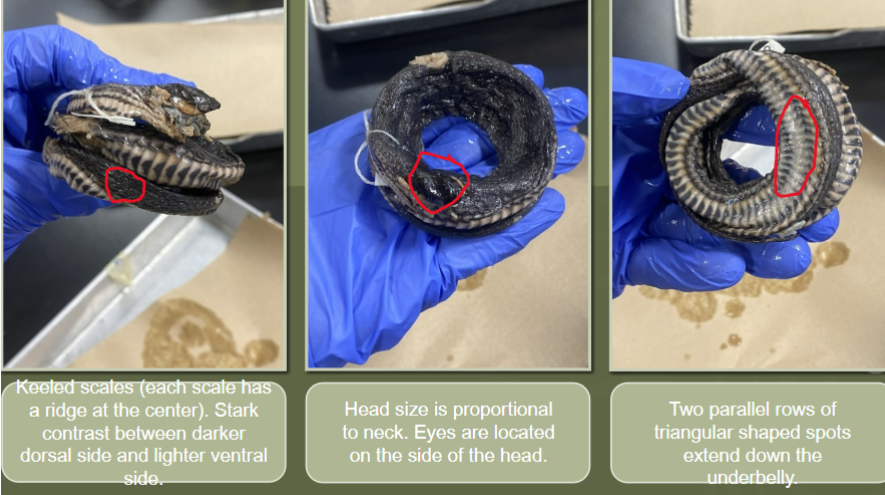
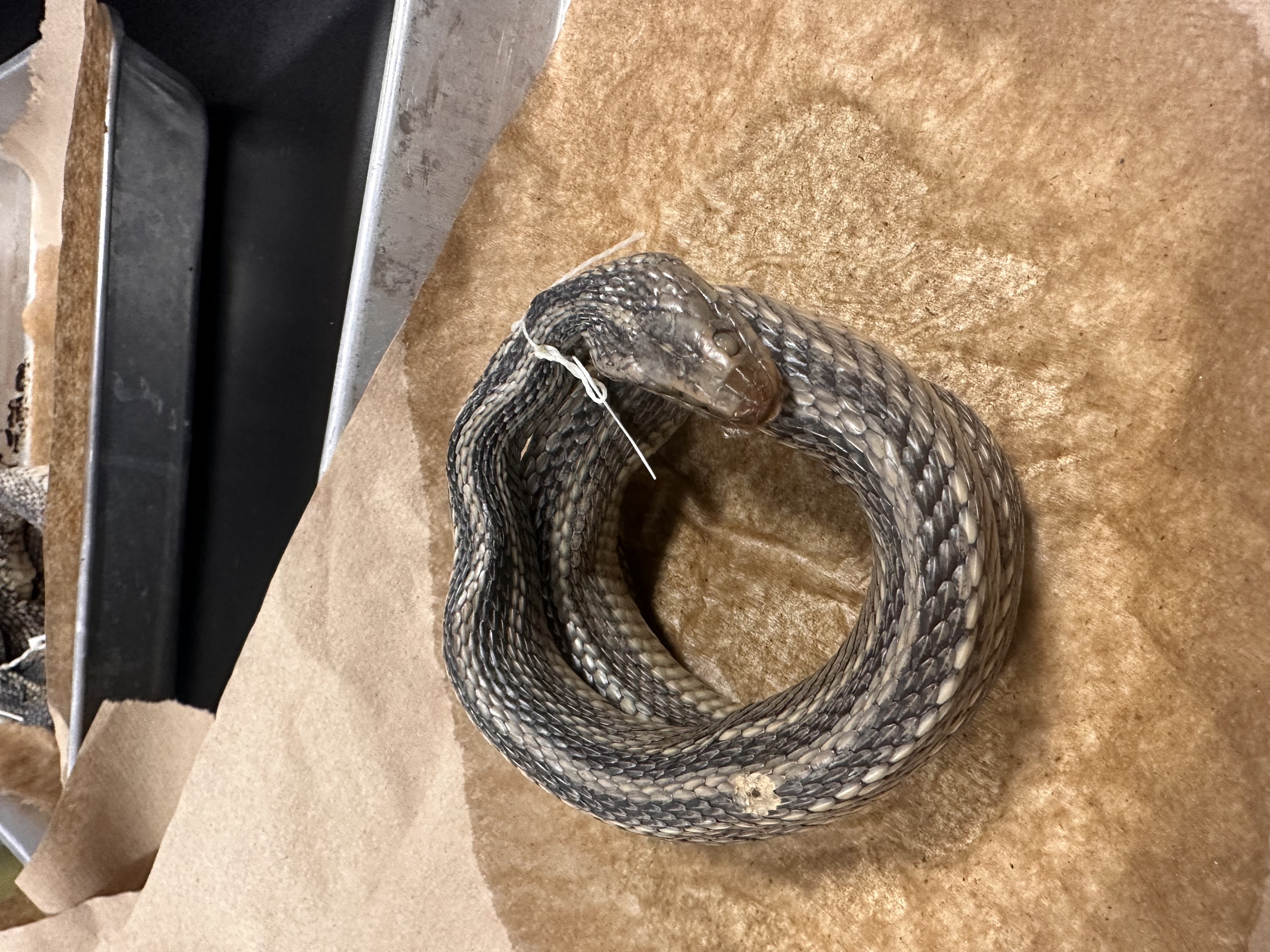
Nerodia clarkii
Salt marsh snake
named after who found him named, CLARK
family Natricidae
19 species in FL
formerly placed in Colubridae
keeled scales
aquatic, semi aquatic
most ovoviviparous (producing young by means of eggs which are hatched within the body of the parent)
mostly diurnal but dependent on season
often larger and abundant capable of living in disturbed habitat
very variable color, can have stripes, bands, blotches
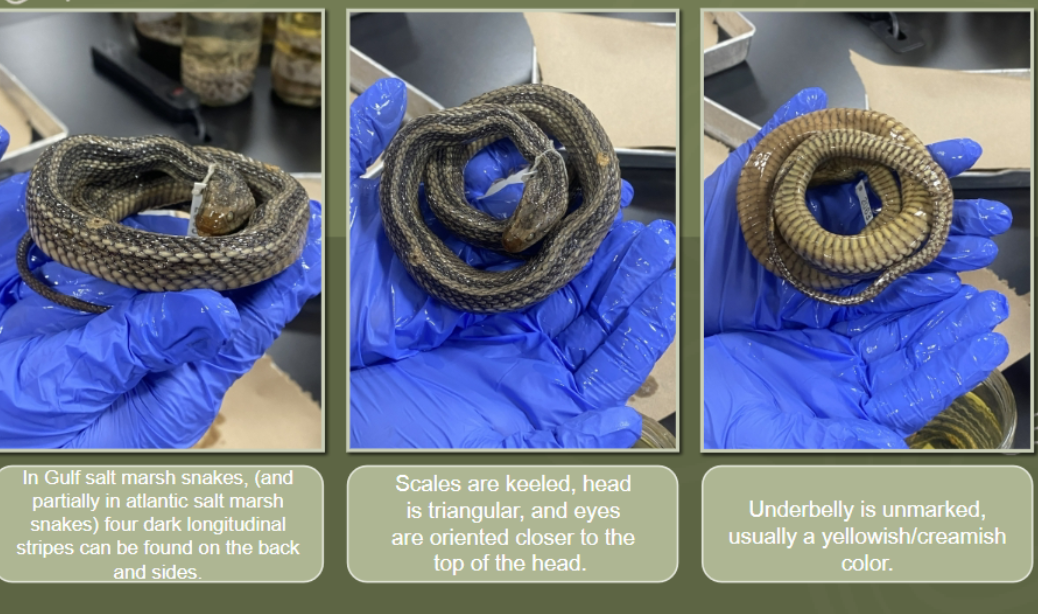
Nerodia erythrogaster
Plainbelly water snake
family Natricidae
19 species in FL
formerly placed in Colubridae
keeled scales
aquatic, semi aquatic
most ovoviviparous (producing young by means of eggs which are hatched within the body of the parent)
mostly diurnal but dependent on season
often larger and abundant capable of living in disturbed habitat
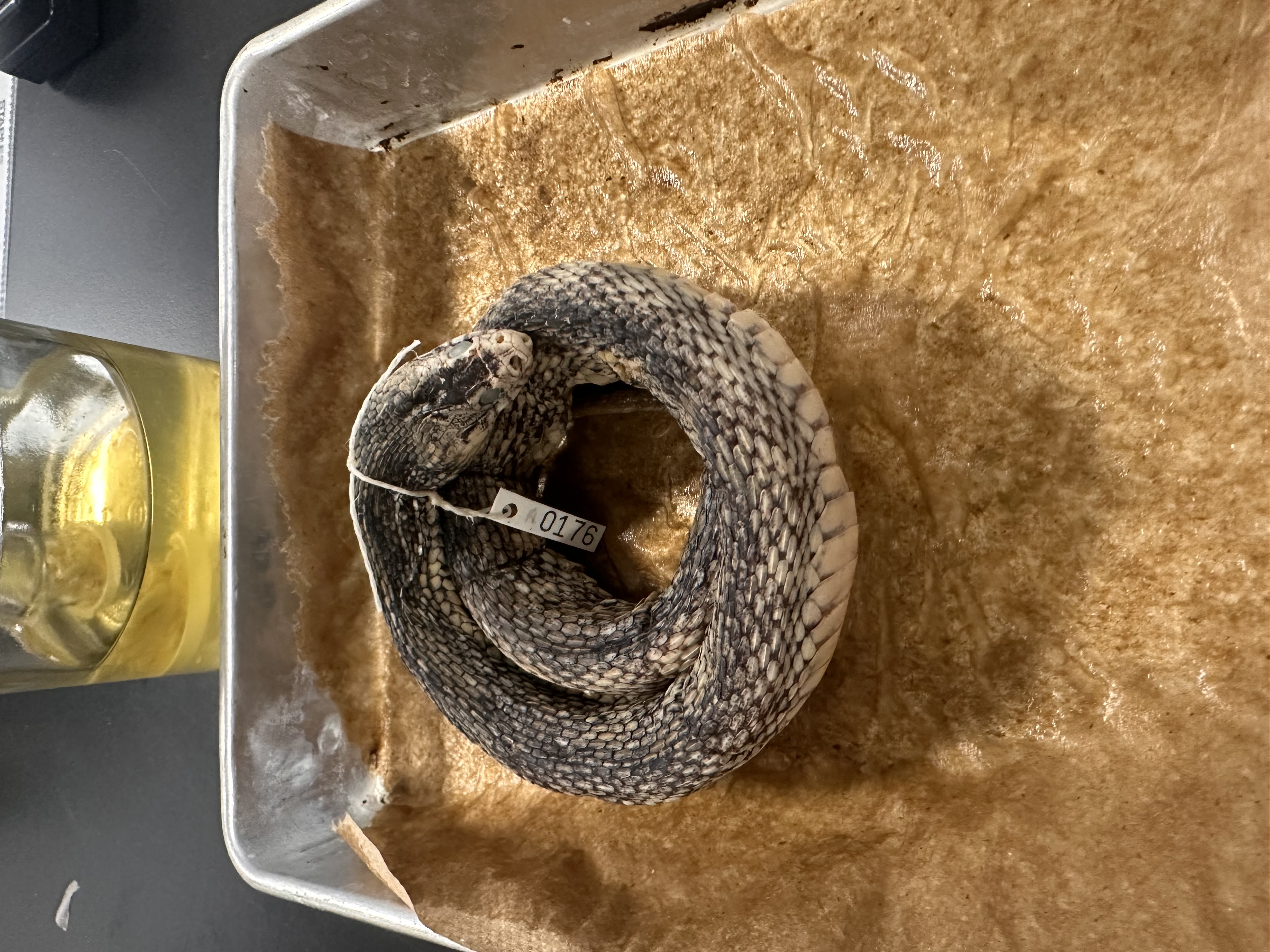
Nerodia fasciata
Southern water snake
he is FACETIOUS and lives in the SOUTH
family Natricidae
19 species in FL
formerly placed in Colubridae
keeled scales
aquatic, semi aquatic
most ovoviviparous (producing young by means of eggs which are hatched within the body of the parent)
mostly diurnal but dependent on season
often larger and abundant capable of living in disturbed habitat
IS found on campus
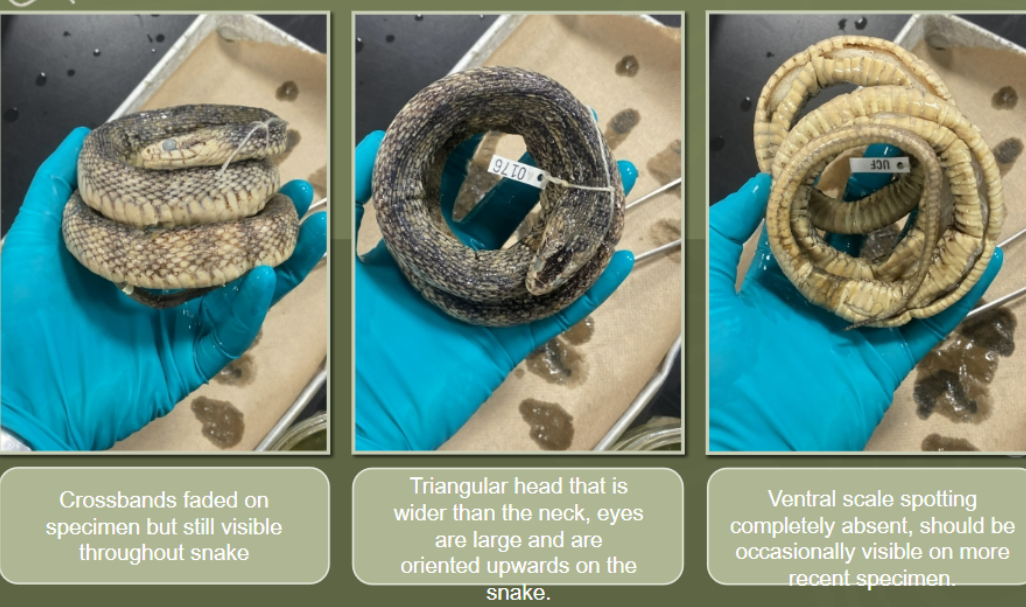

Nerodia floridana
Florida green water snake
family Natricidae
19 species in FL
formerly placed in Colubridae
keeled scales
aquatic, semi aquatic
most ovoviviparous (producing young by means of eggs which are hatched within the body of the parent)
mostly diurnal but dependent on season
often larger and abundant capable of living in disturbed habitat
IS found on campus

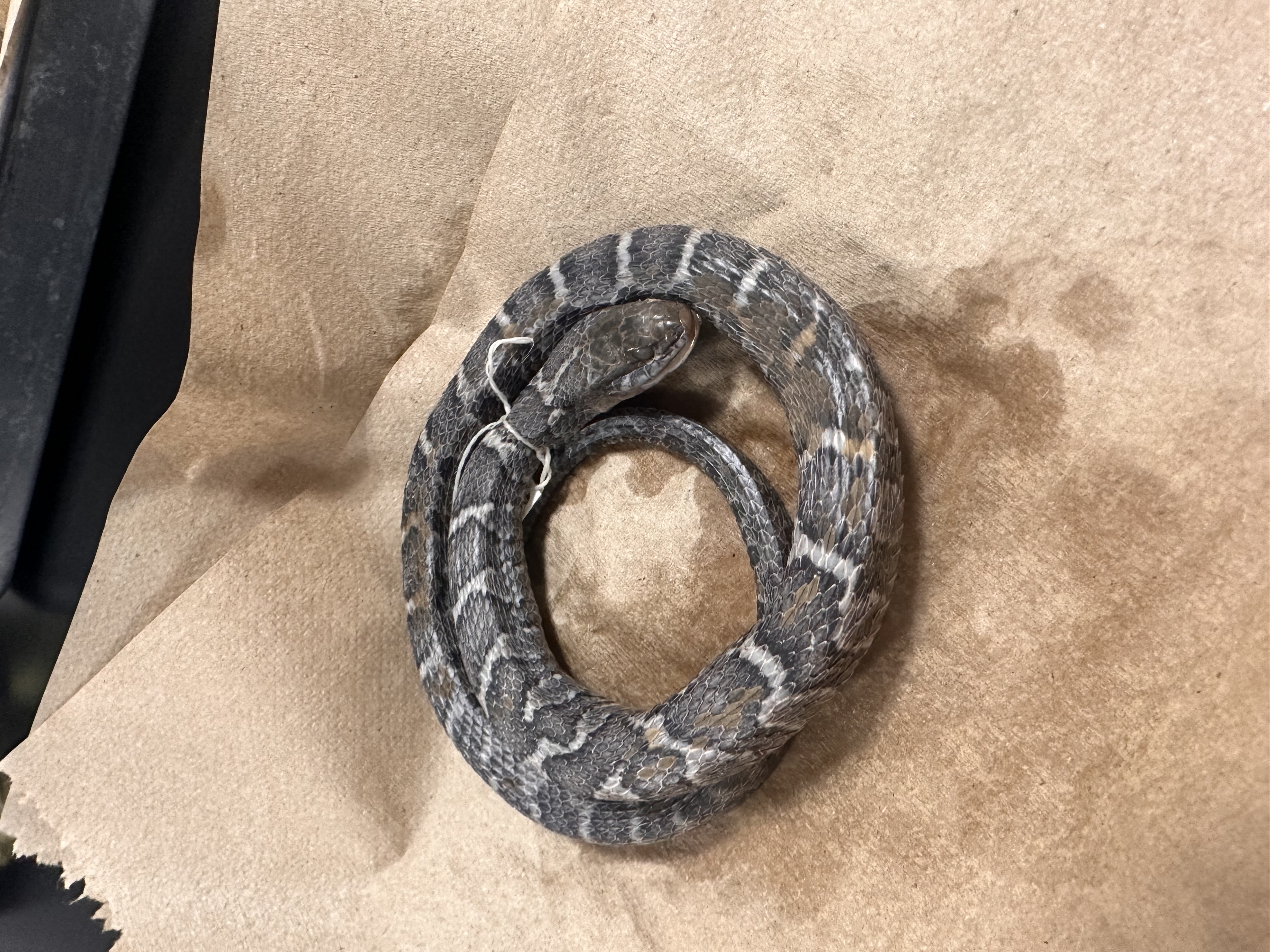
Nerodia sipedon
Midland water snake
he SIPS water his he is in the MIDDLE of the LAND
family Natricidae
19 species in FL
formerly placed in Colubridae
keeled scales
aquatic, semi aquatic
most ovoviviparous (producing young by means of eggs which are hatched within the body of the parent)
mostly diurnal but dependent on season
often larger and abundant capable of living in disturbed habitat
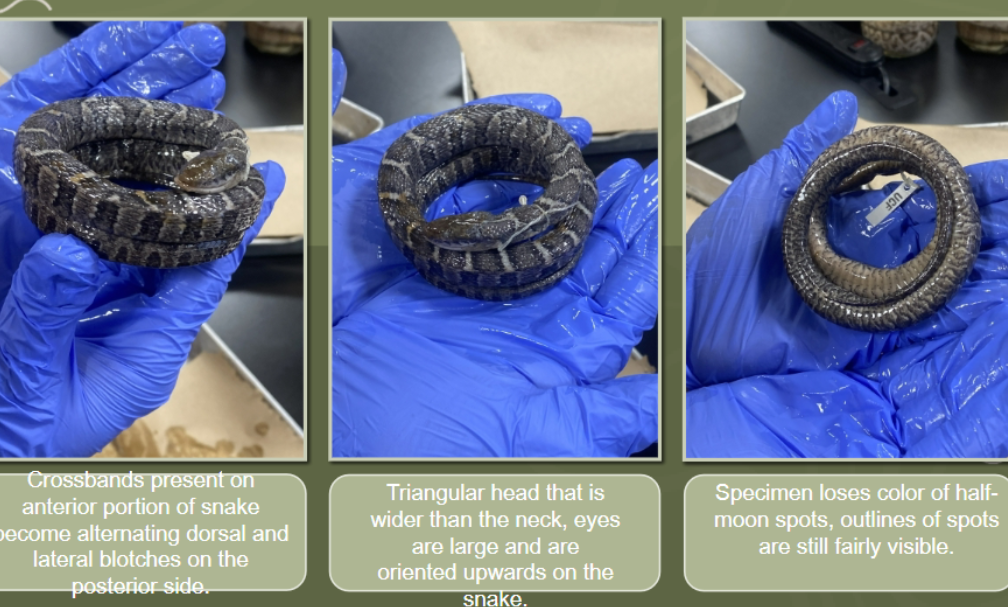
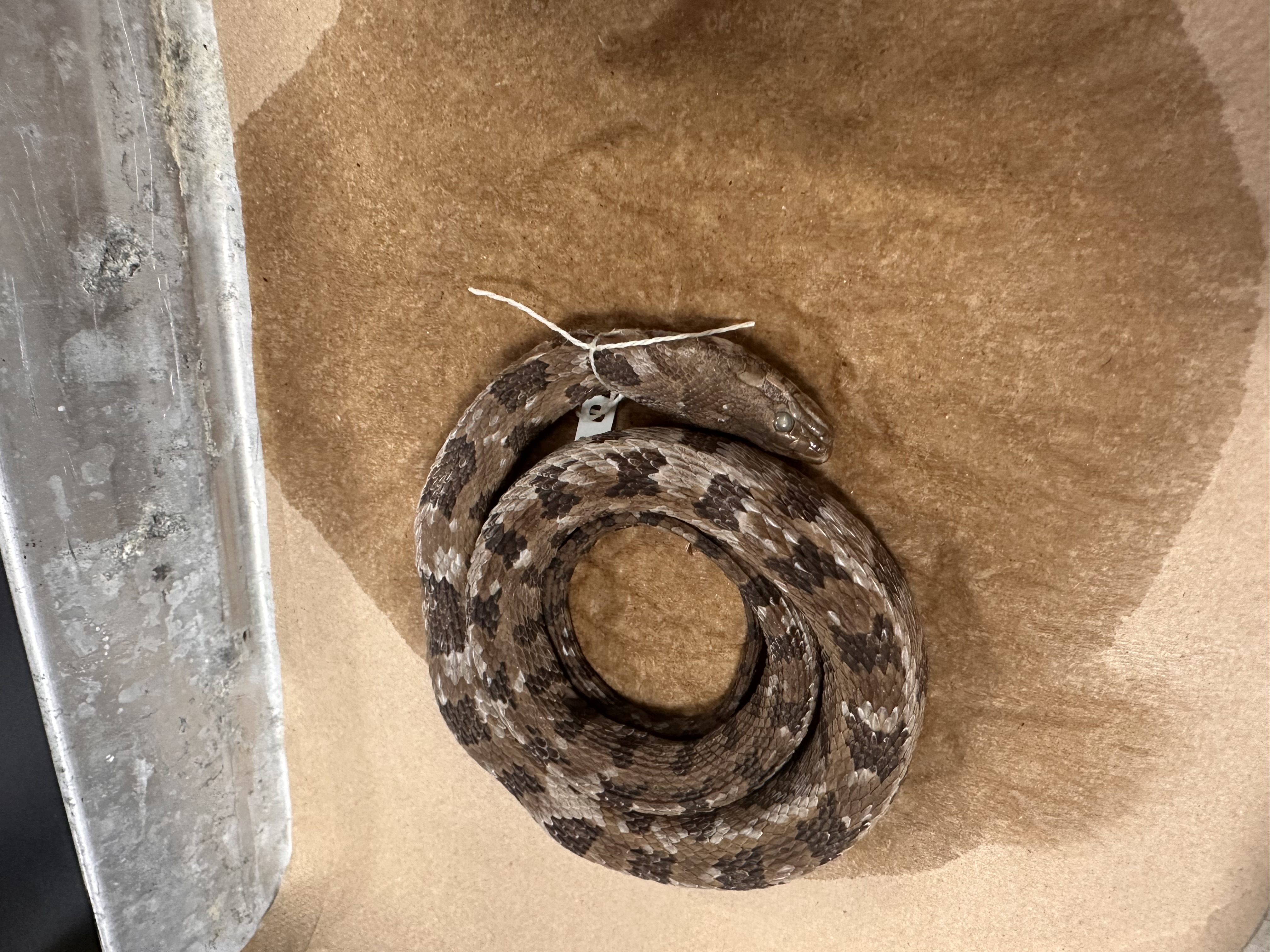
Nerodia taxispilota
Brown water snake
family Natricidae
19 species in FL
formerly placed in Colubridae
keeled scales
aquatic, semi aquatic
most ovoviviparous (producing young by means of eggs which are hatched within the body of the parent)
mostly diurnal but dependent on season
often larger and abundant capable of living in disturbed habitat
head is arrow shaped and much wider than neck
IS found on campus
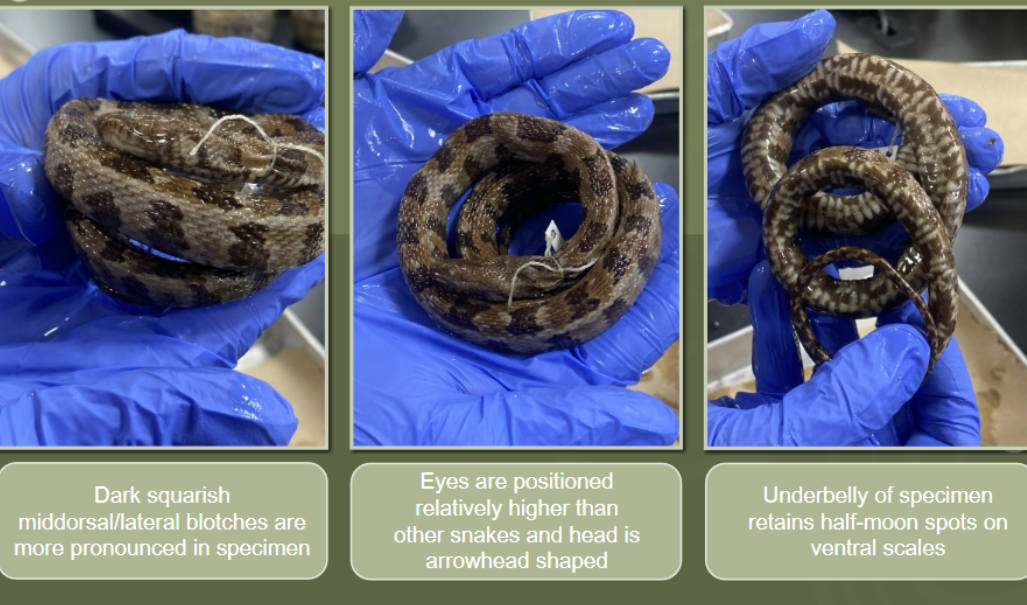
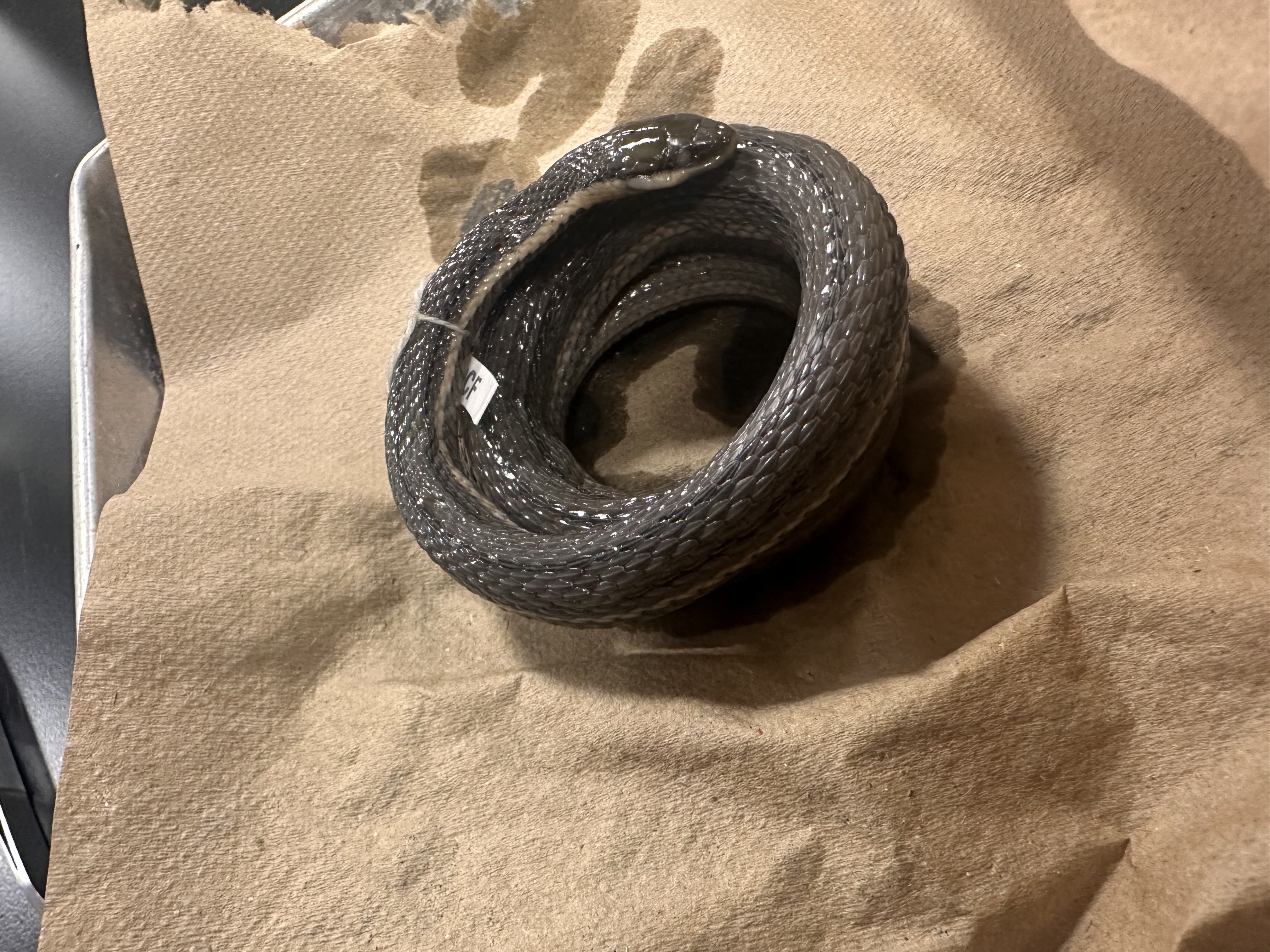
Regina septemvittata
Queen snake
family Natricidae
19 species in FL
formerly placed in Colubridae
keeled scales
aquatic, semi aquatic
most ovoviviparous (producing young by means of eggs which are hatched within the body of the parent)
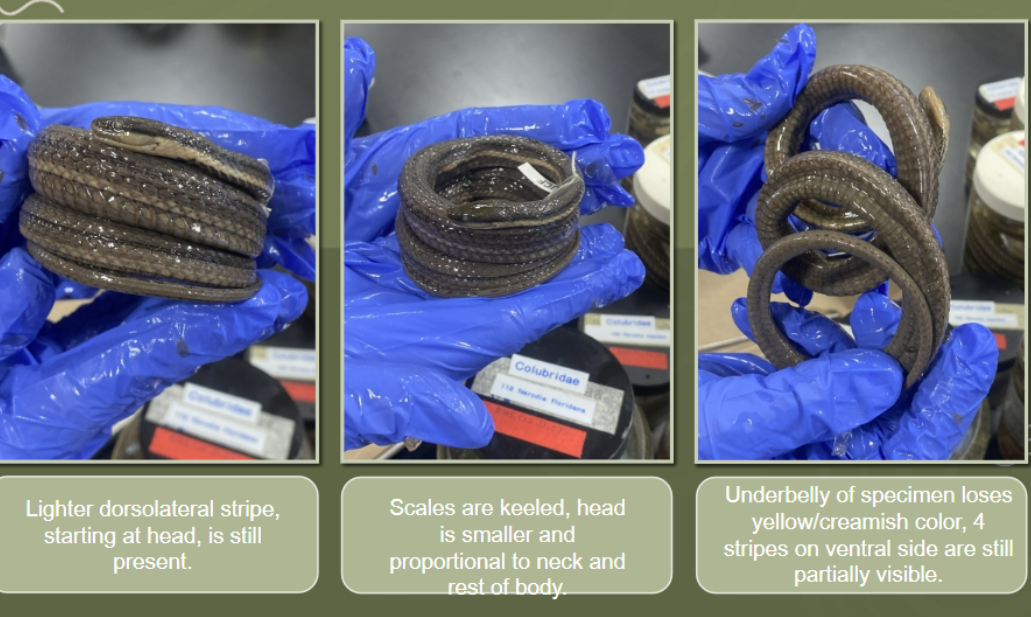
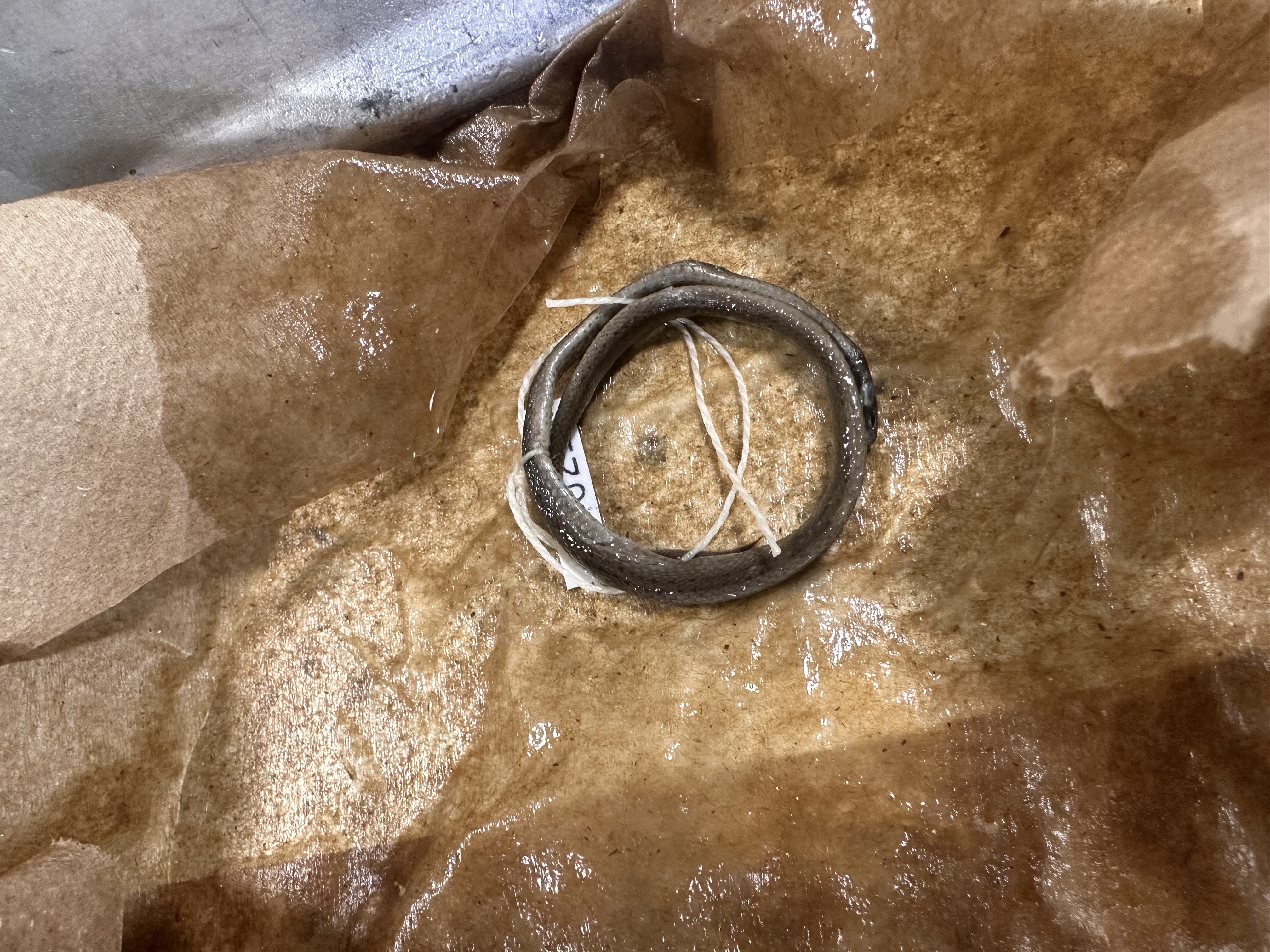
Storeria dekayi
Brown snake
things DECAY and turn BROWN
family Natricidae
19 species in FL
formerly placed in Colubridae
keeled scales
aquatic, semi aquatic
most ovoviviparous (producing young by means of eggs which are hatched within the body of the parent)

Storeria occipitomaculata,
Redbelly snake
family Natricidae
19 species in FL
formerly placed in Colubridae
keeled scales
aquatic, semi aquatic
most ovoviviparous (producing young by means of eggs which are hatched within the body of the parent)
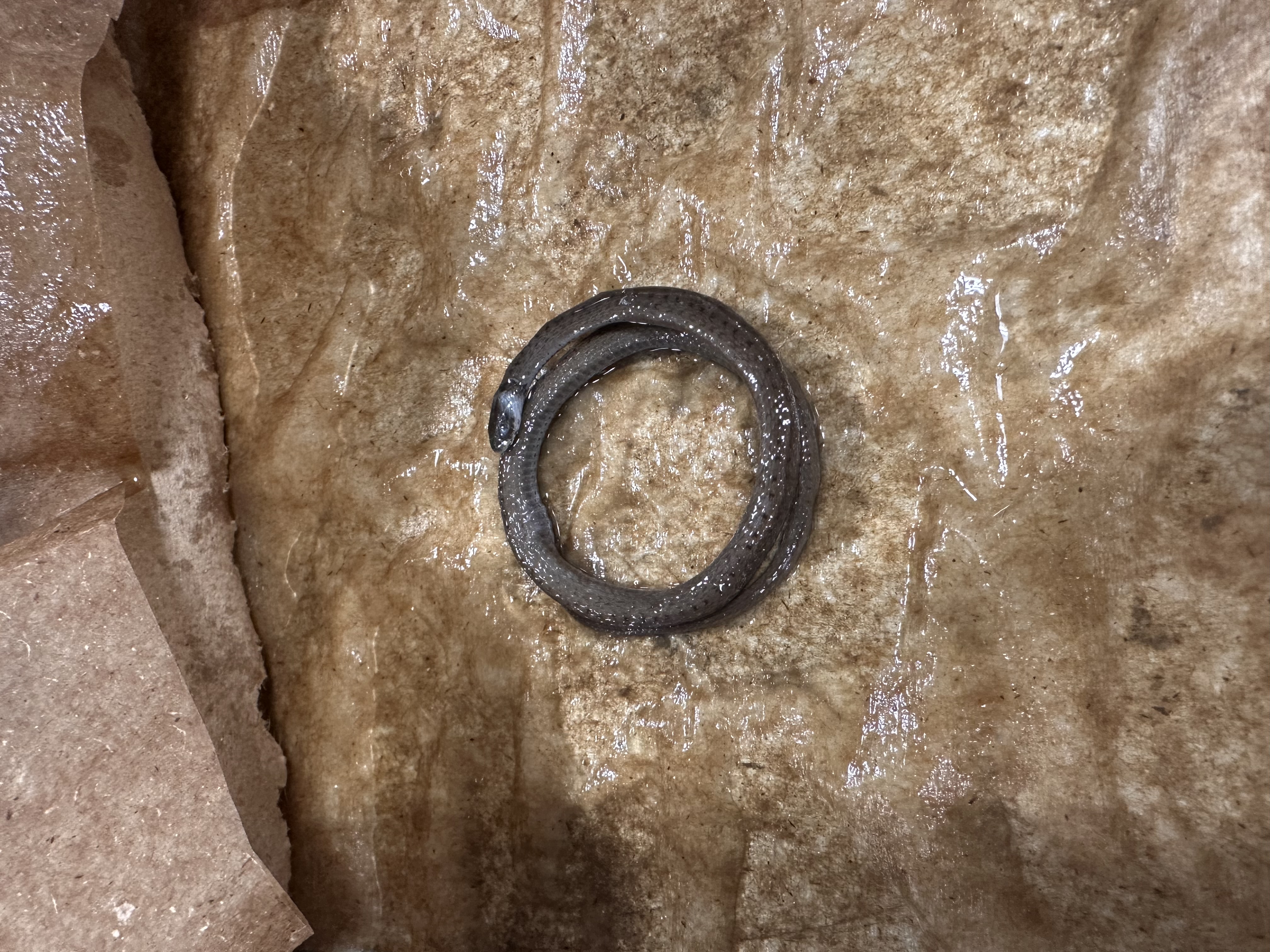
Storeria victa
Florida brown snake
family Natricidae
19 species in FL
formerly placed in Colubridae
keeled scales
aquatic, semi aquatic
most ovoviviparous (producing young by means of eggs which are hatched within the body of the parent)
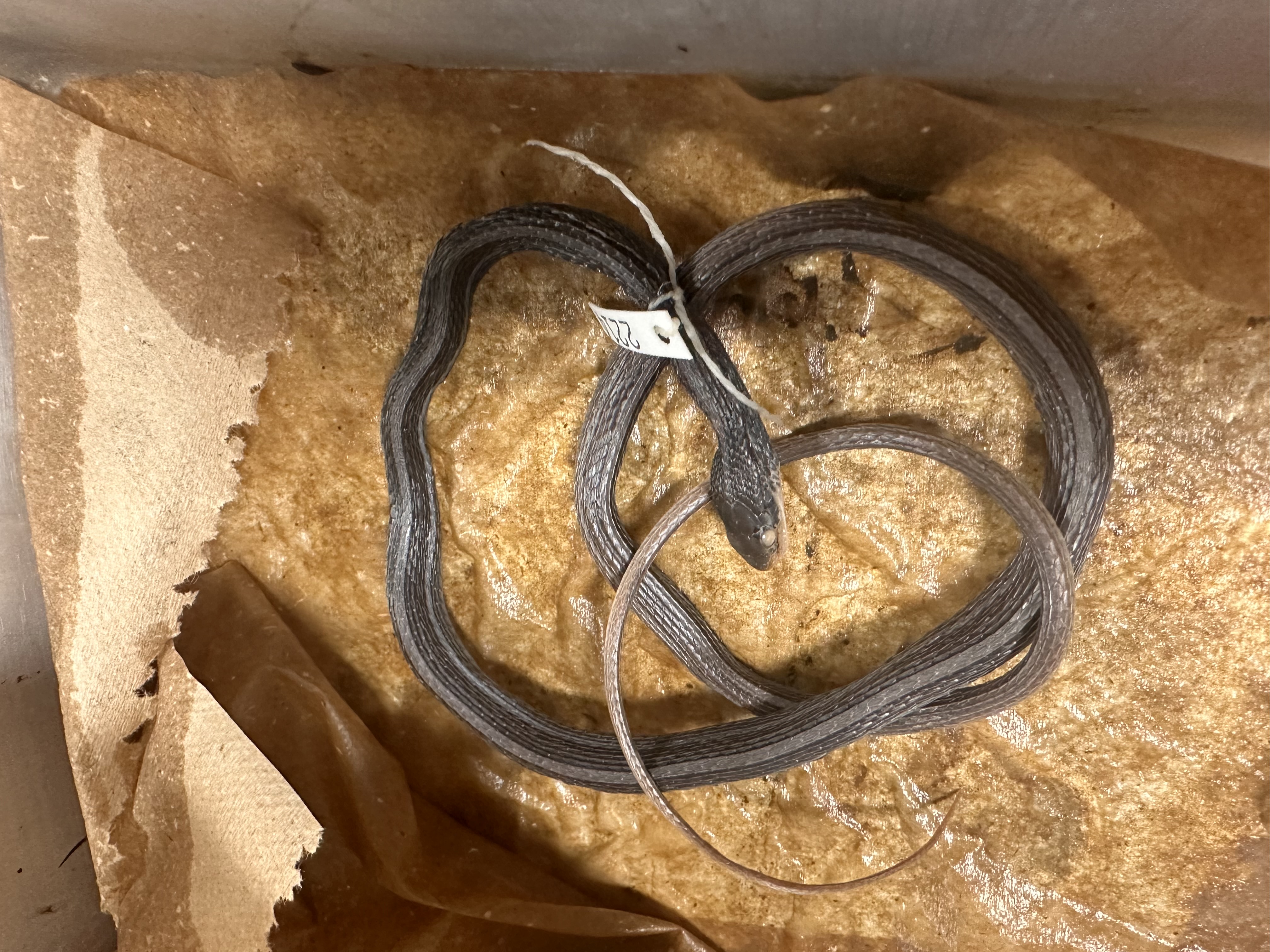
Thamnophis sauritus
Eastern ribbon snake
family Natricidae
19 species in FL
formerly placed in Colubridae
keeled scales
aquatic, semi aquatic
most ovoviviparous (producing young by means of eggs which are hatched within the body of the parent)
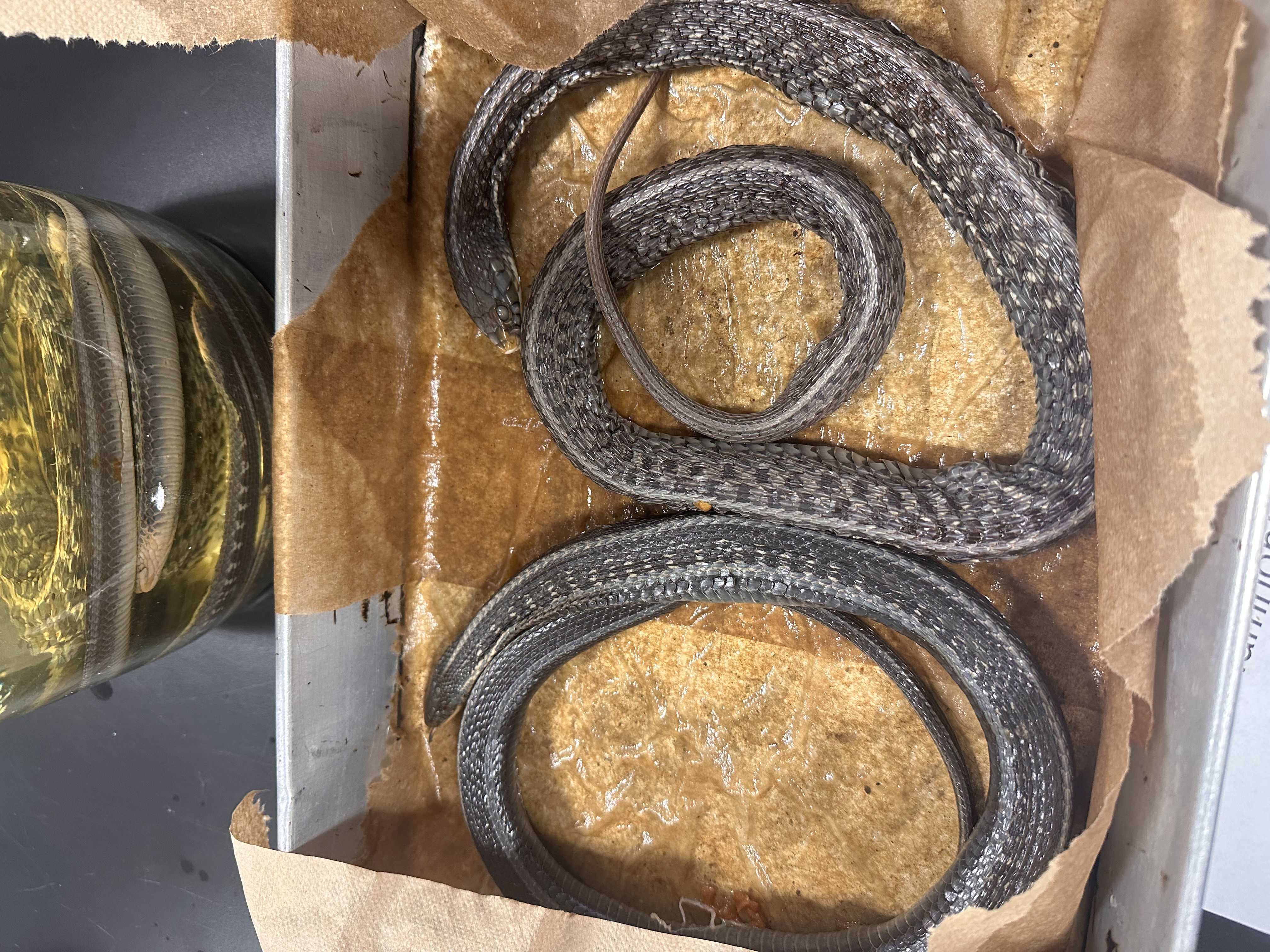
Thamnophis sirtalis
Garter snake
family Natricidae
19 species in FL
formerly placed in Colubridae
keeled scales
aquatic, semi aquatic
most ovoviviparous (producing young by means of eggs which are hatched within the body of the parent)
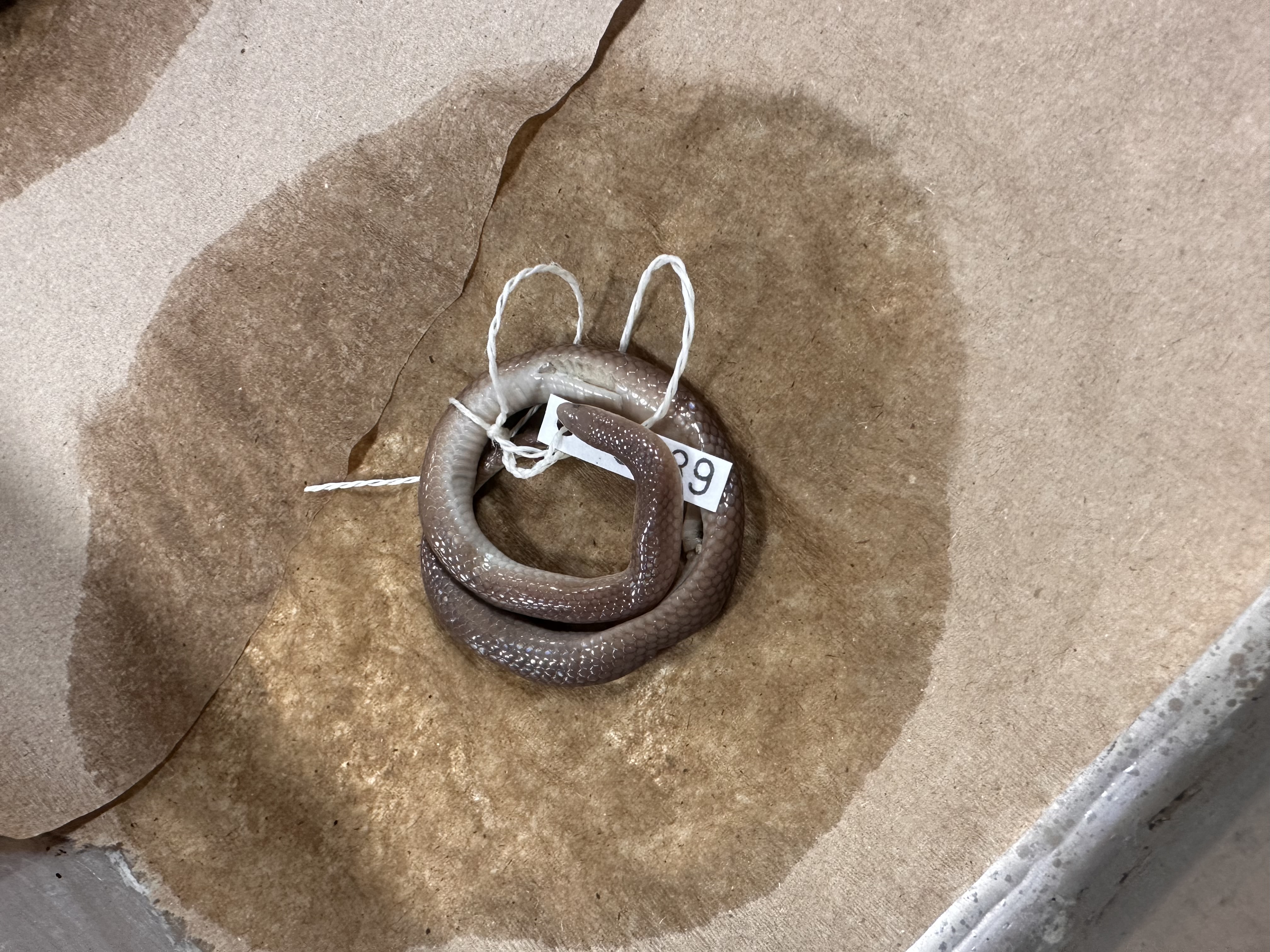
Virginia valeriae
Eastern smooth earth snake
her name is Valerie
family Natricidae
19 species in FL
formerly placed in Colubridae
keeled scales
aquatic, semi aquatic
most ovoviviparous (producing young by means of eggs which are hatched within the body of the parent)
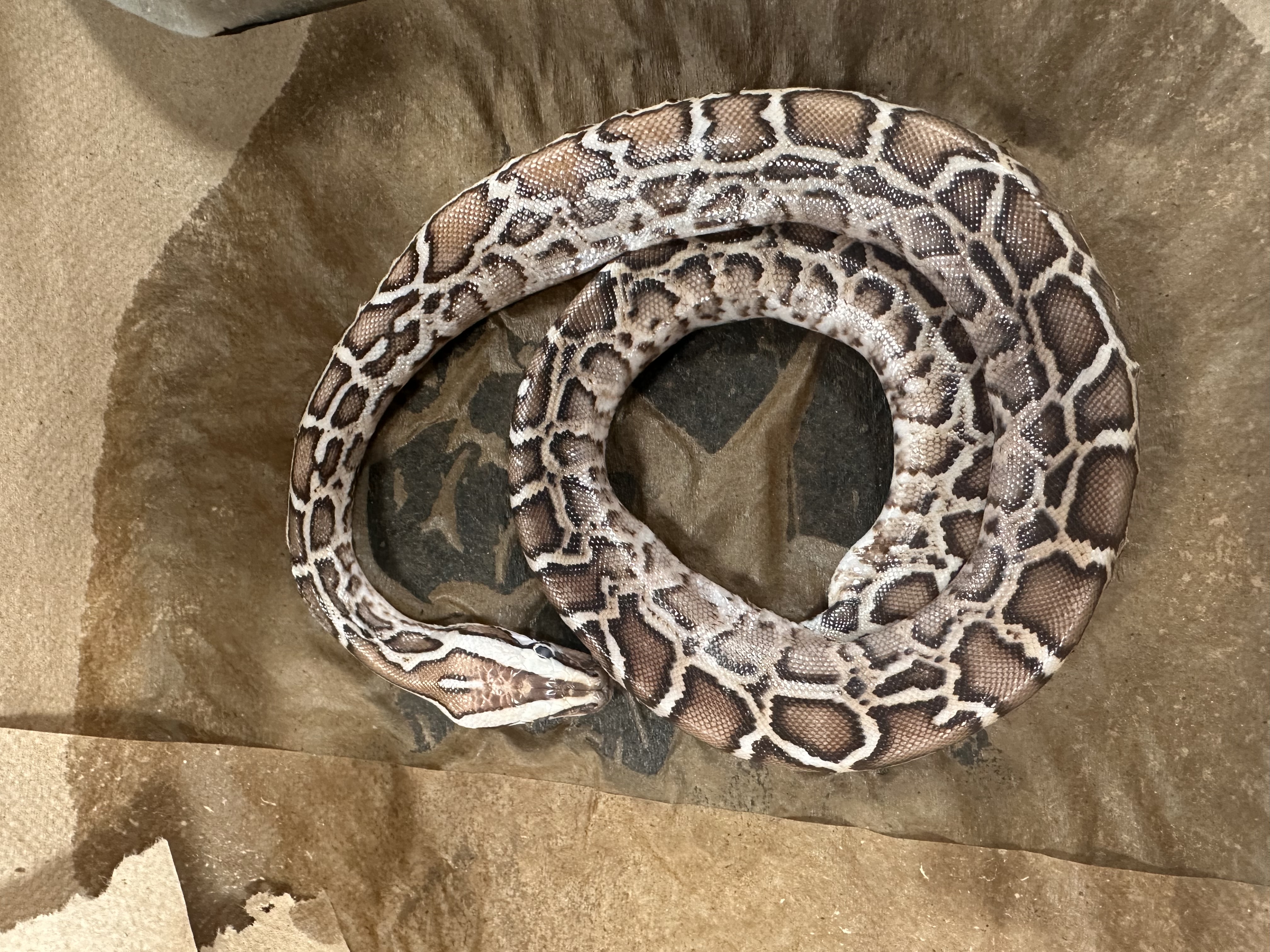
Python bivittatus
Burmese python
family Pythonidae
constrictors
heat sensing
oviparous
NON NATIVE
native to SE Asia
1st florida specimen found in 1979 along north border of everglades
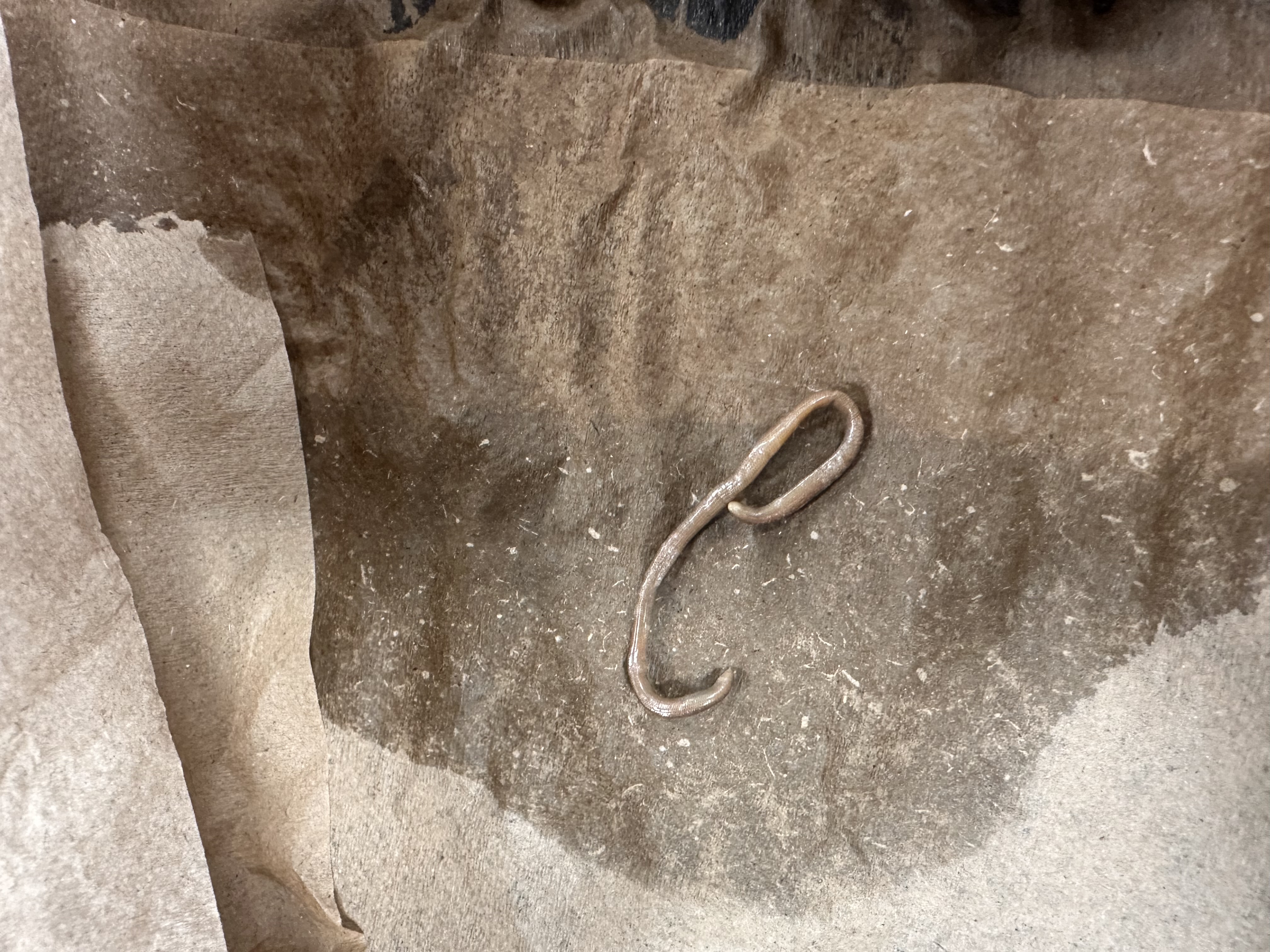
Indotyphlops braminus
Brahminy blind snake
family Typhlopidae (blind or worm snakes)
small burrowers
reduced or absent eyes
smooth, shiny scales
ovoviviparous and oviparous
NON NATIVE
native to southern Asia but most widely distributed snake in world due to human transport
unisexual and parthenogenetic
eats termites and pupae
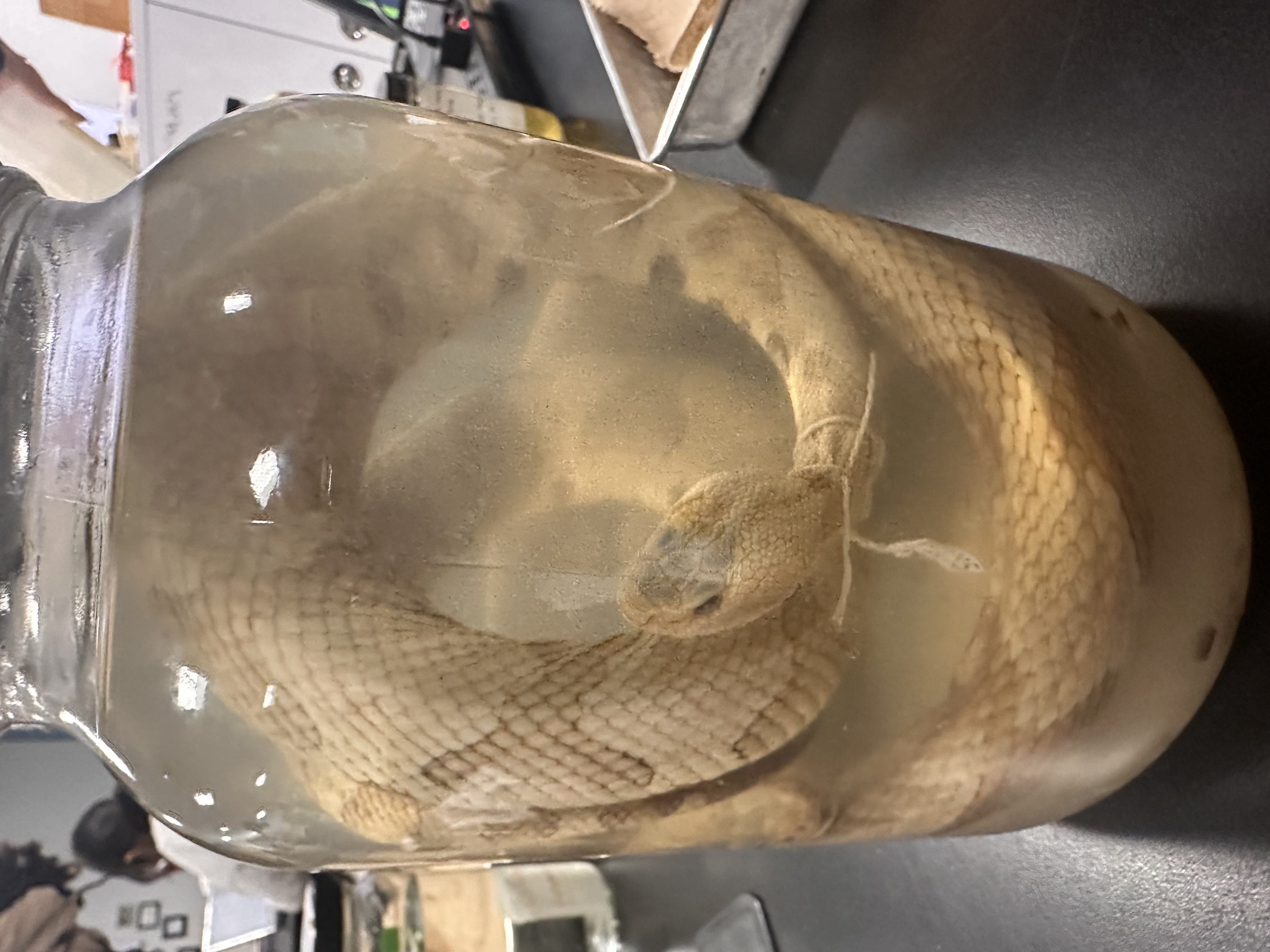
Agkistrodon contortrix
Copperhead
they like to CONTORT COPPER
family Viperidae
5 in FL
keeled scales, stocky bodies
short tail
triangular head distinct from neck
vertically elliptical pupils
ovoviviparous
heat sensing pits